Crossing the border into Italy in the evening, we were pretty thrilled with our first Italian Park4Night spot, right next to this very old village that is currently being restored.


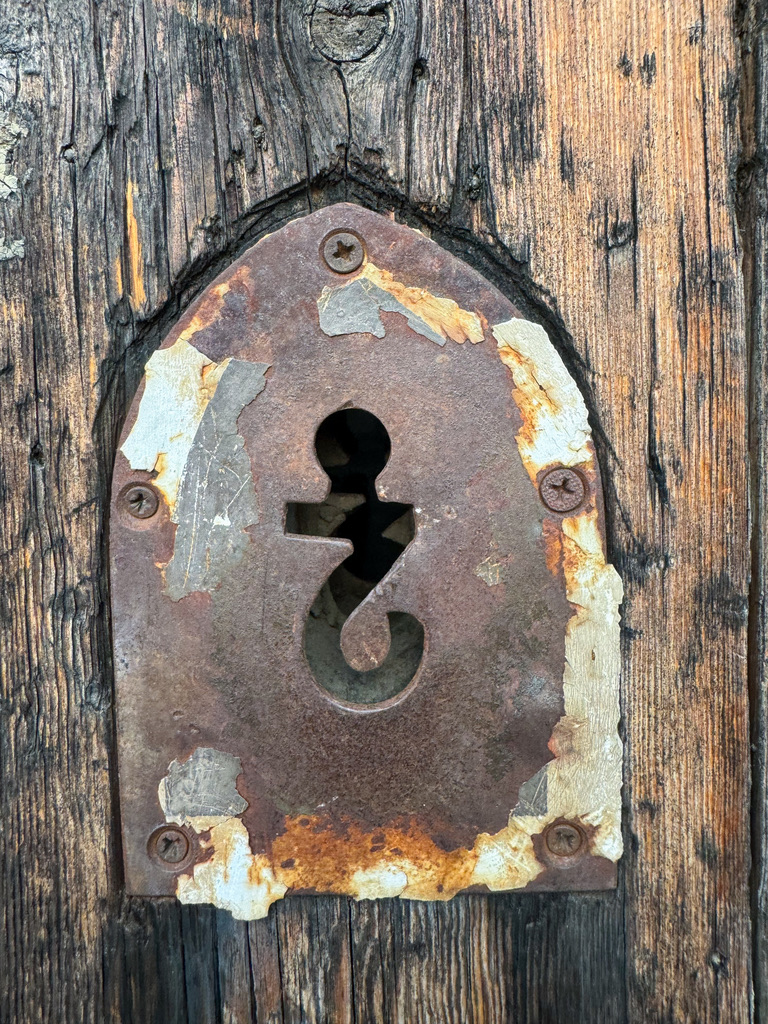
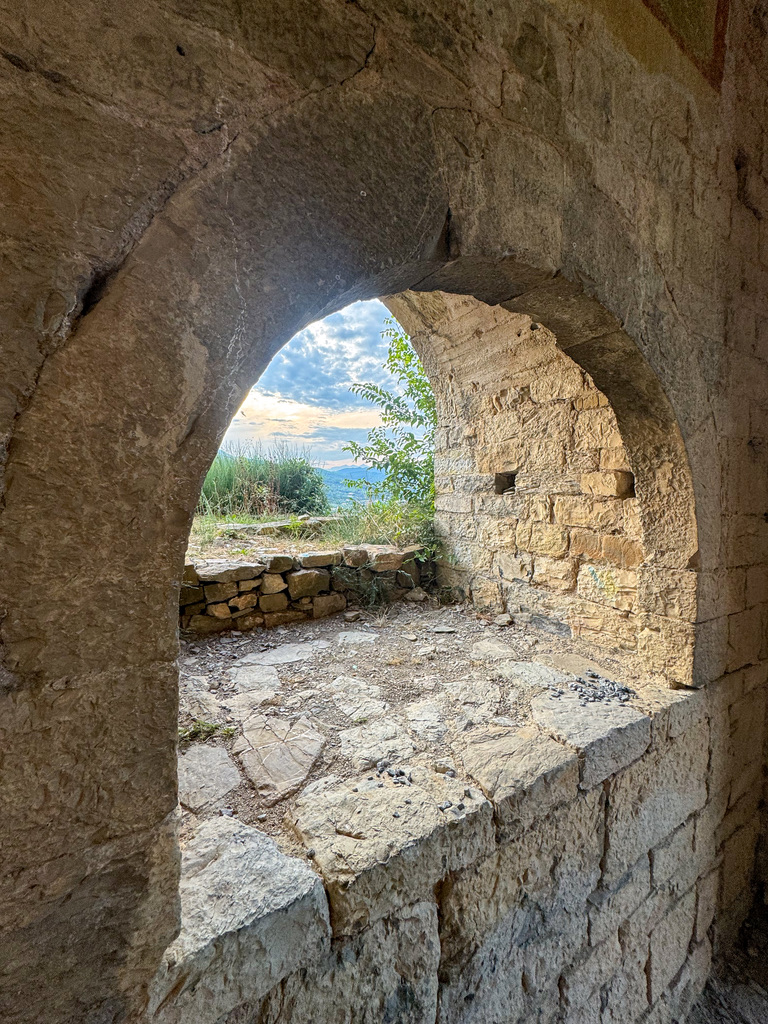
We loved our time around the lakes and rivers of France so decided to head straight to the Italian Lakes in the north of Italy, focussing specifically on Lago d’Iseo. We’d had a few days with some longer drives to get there, so it felt good to take it slow for a couple of days.
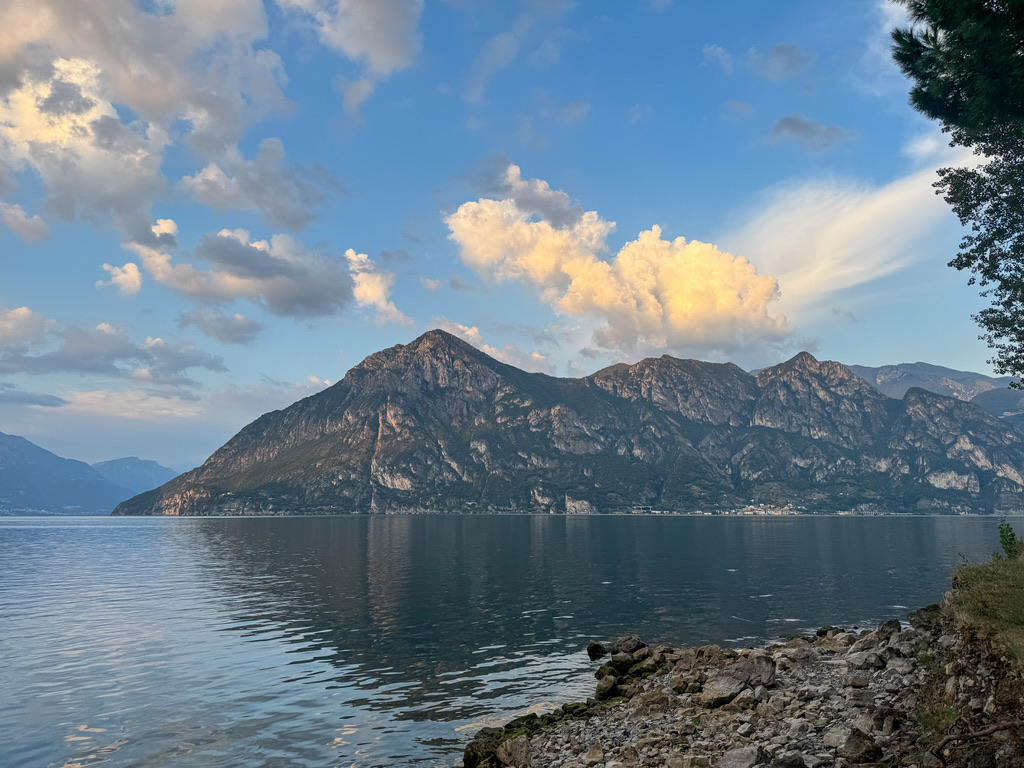
Lago d’Iseo is such a pretty lake and the water temperature was lovely – and we were determined not to be put off swimming by the two water snakes we had seen close to the shore! When we weren’t chilling or playing by the lake, we were adventuring through the bush or finding somewhere new to swim.
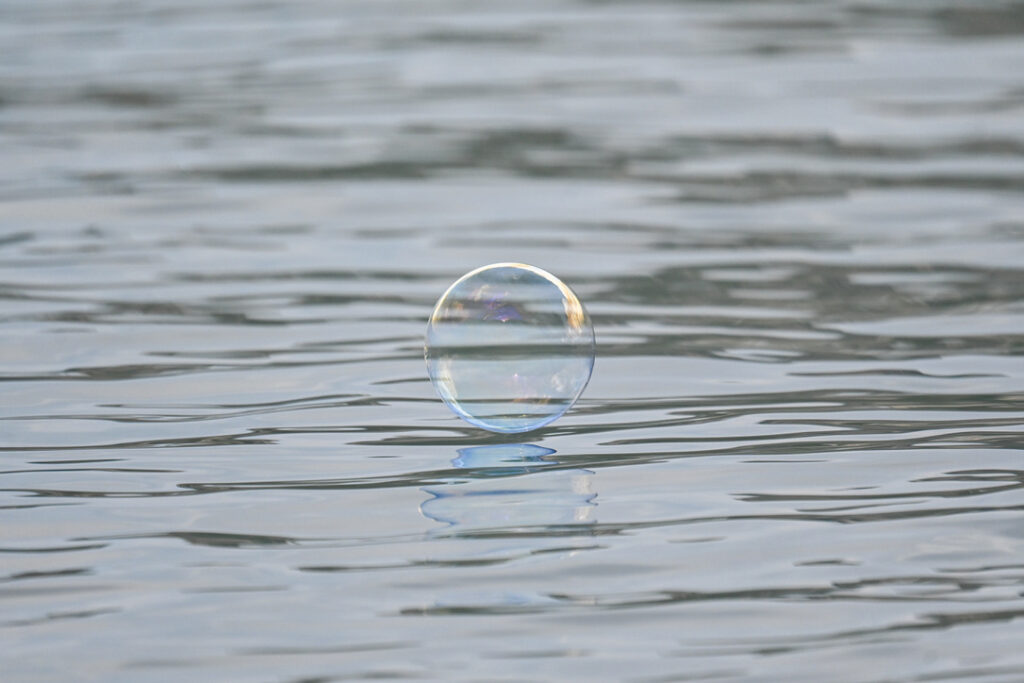
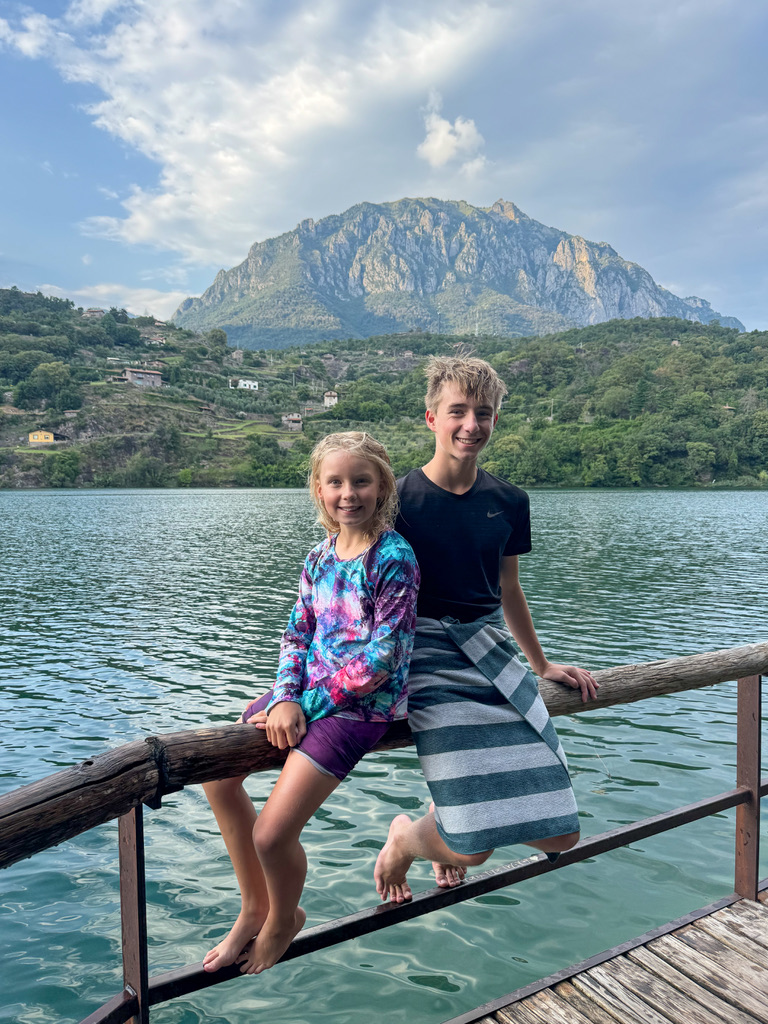
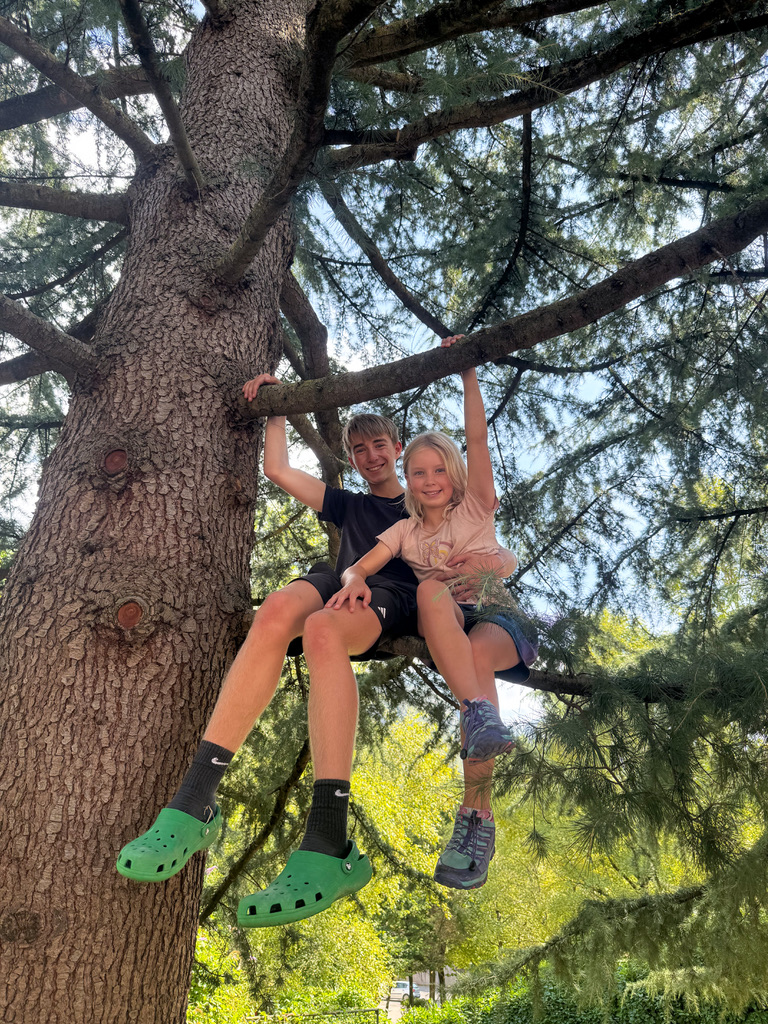
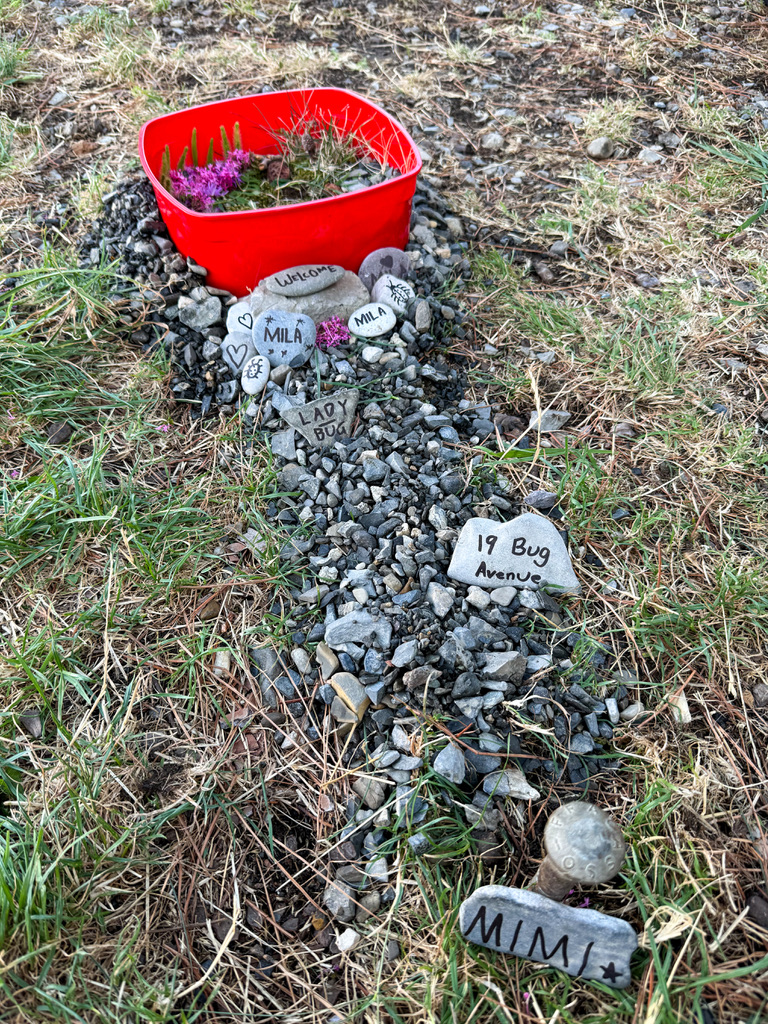
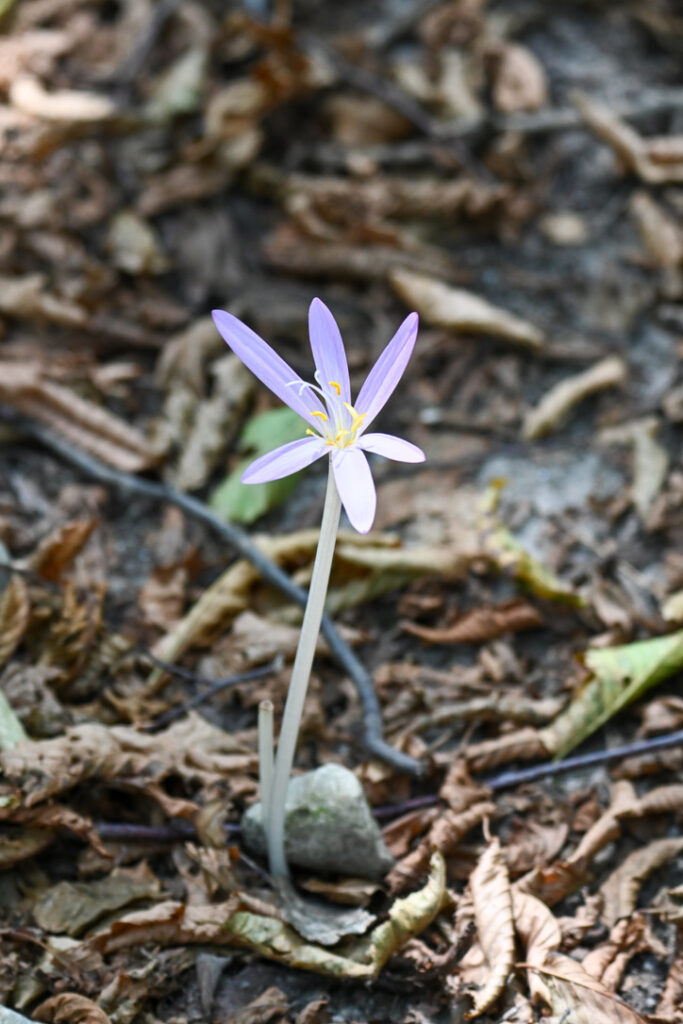
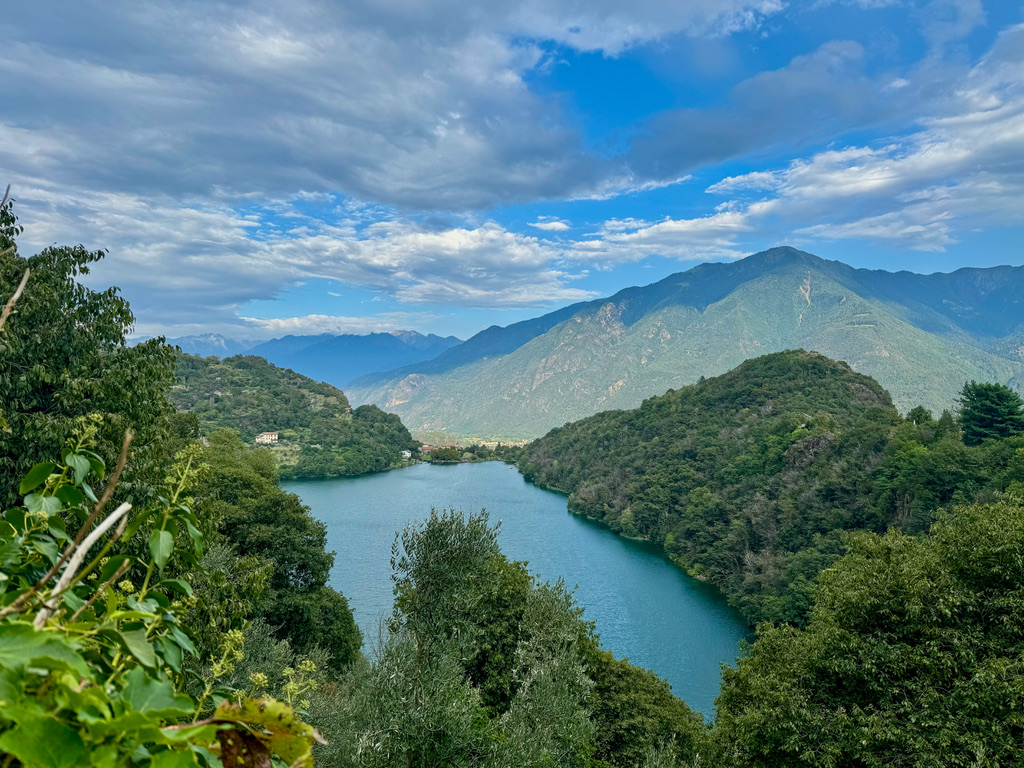
We walked through the Pyramids of Zone Nature Reserve – a place filled with these amazing, ever changing ‘erosion pyramids’.
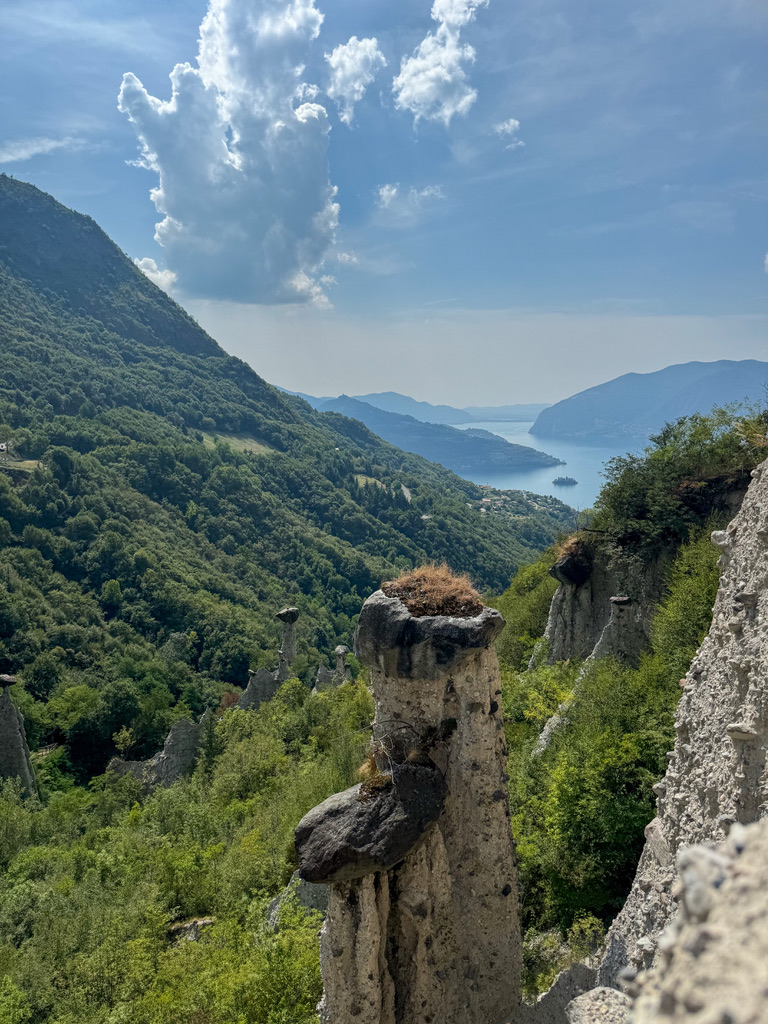
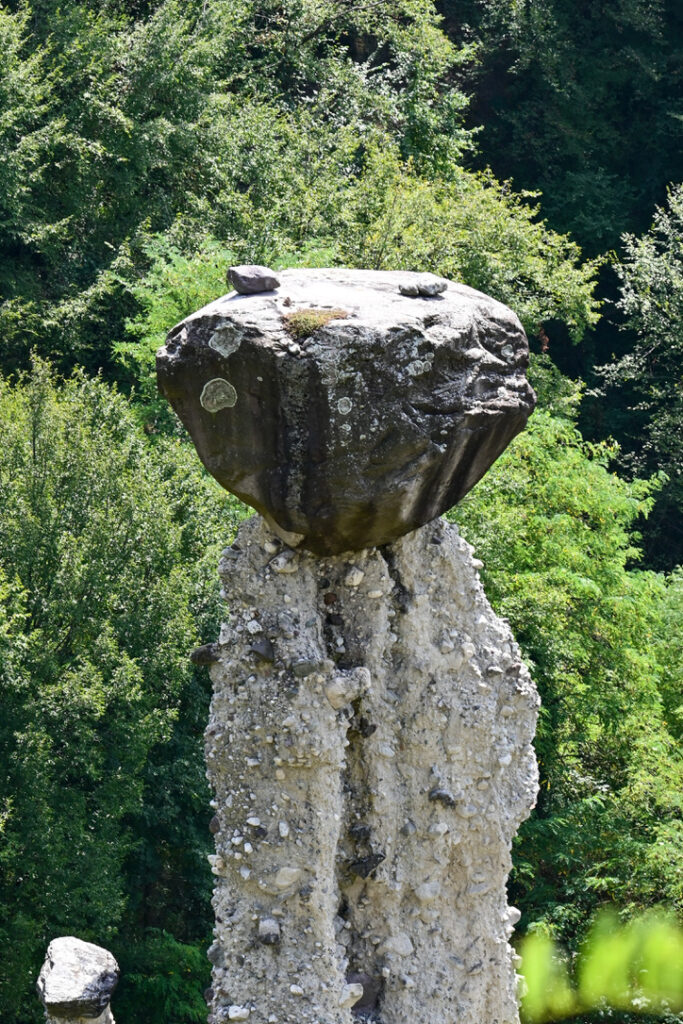
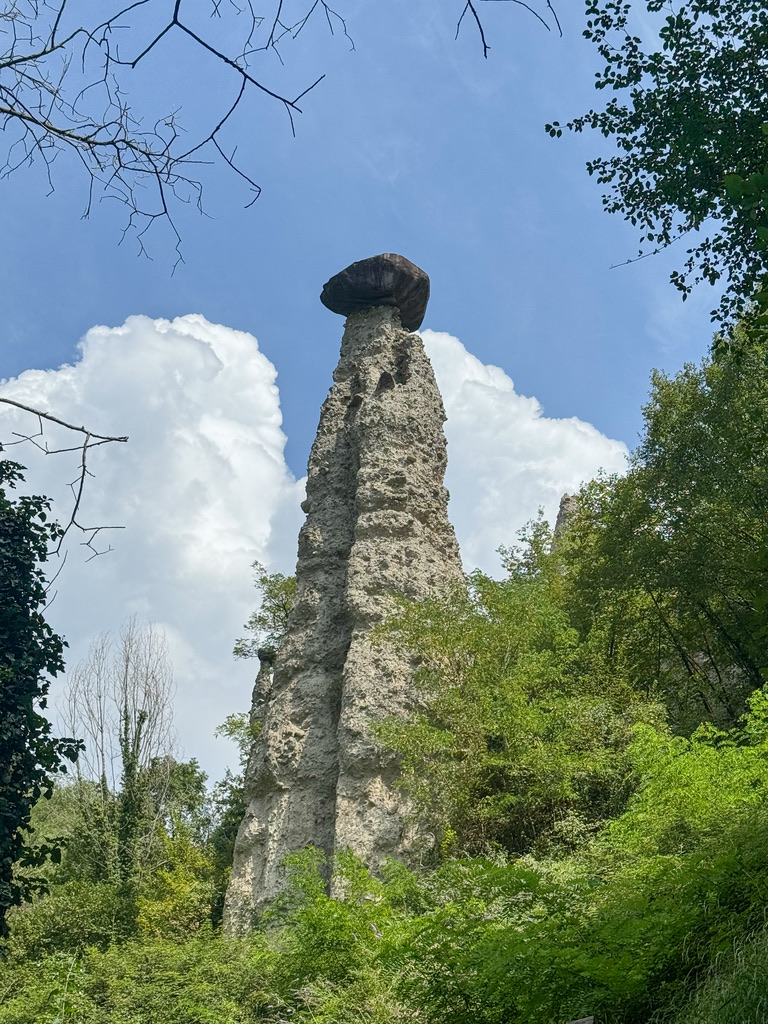
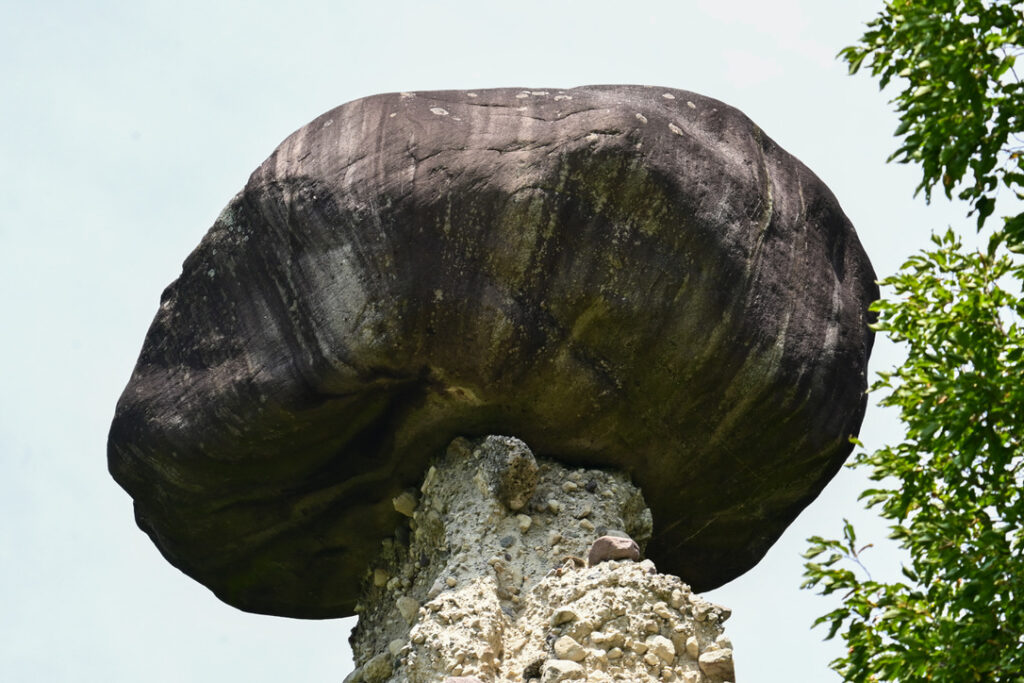
This day we did a walk that was much longer (and significantly steeper!) than we had expected…but look at the view over Lago d’Iseo!
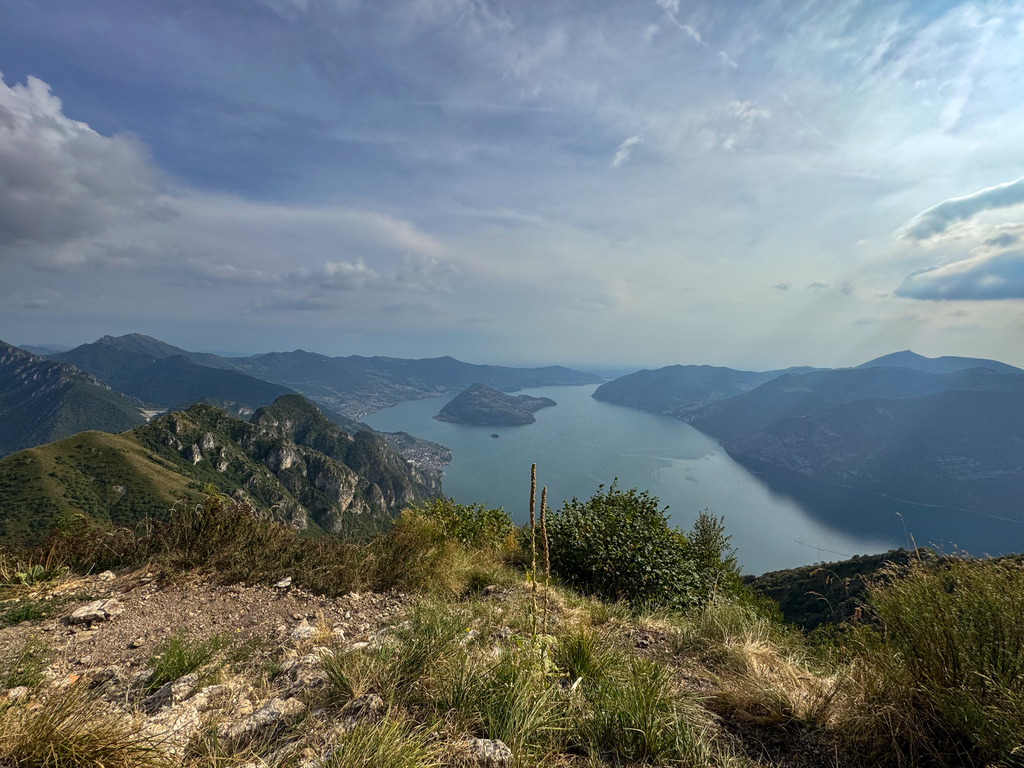
It was hard to leave the slow pace of lake-life and we could have easily spent weeks at the Italian Lakes, but it was time to move on towards Venice. We stopped for a night in Brescia to visit the Museo Mille Miglia – a museum celebrating the history of the annual Mille Miglia classic car race from Brescia to Rome and back again that has been going since 1927.
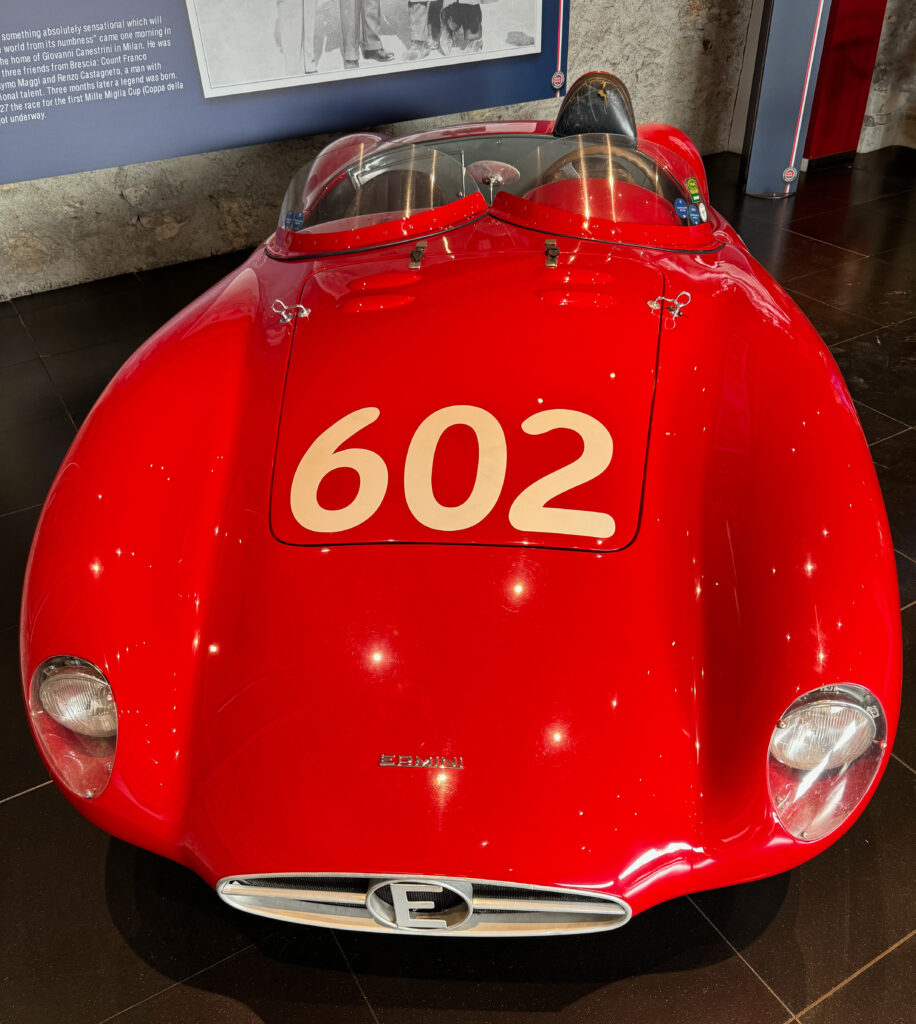
Many of the nearly 100 year old cars (Mercedes, Porsche, Bugatti, Maserati…) are stored onsite and are still used in the race today.
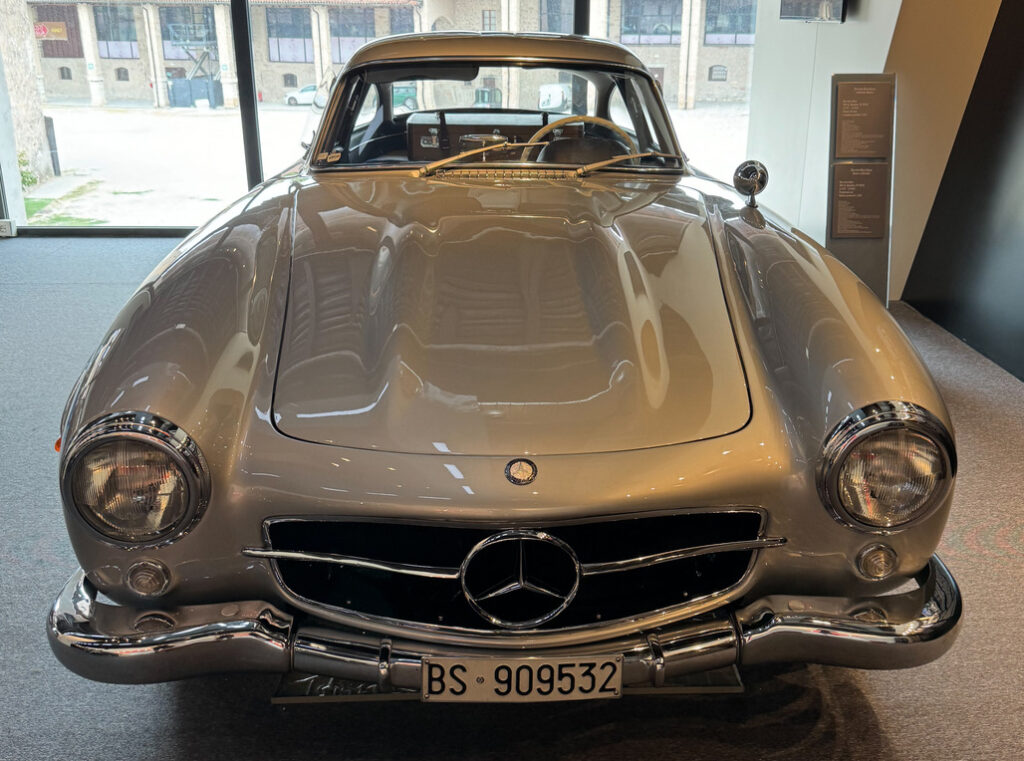
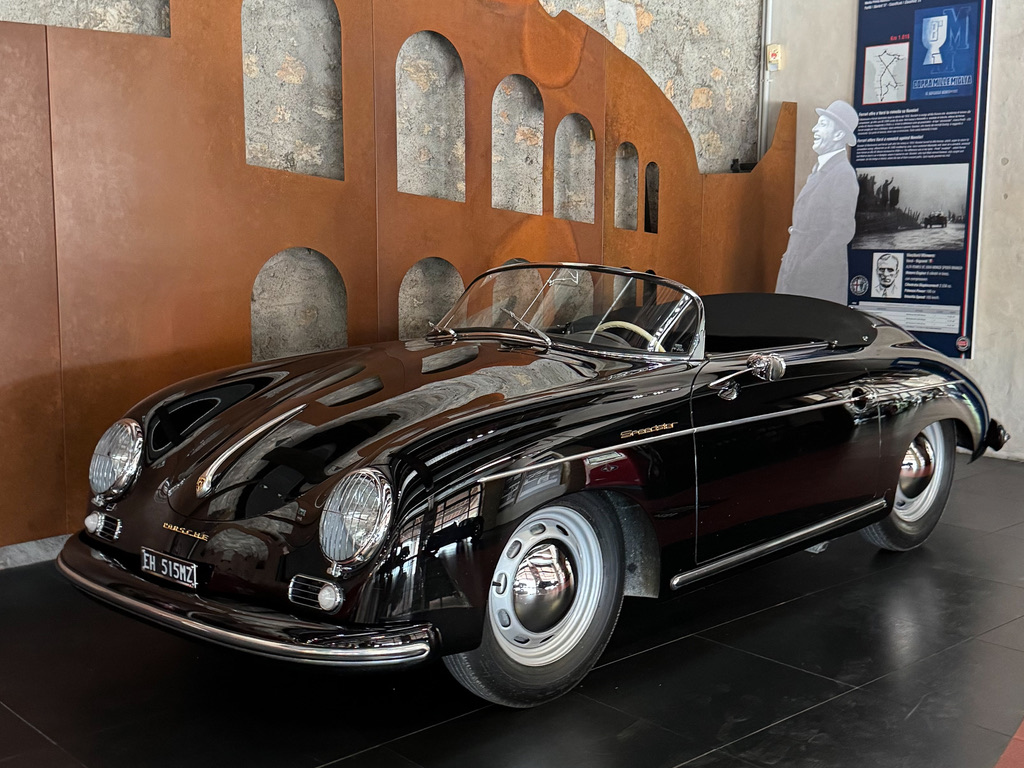

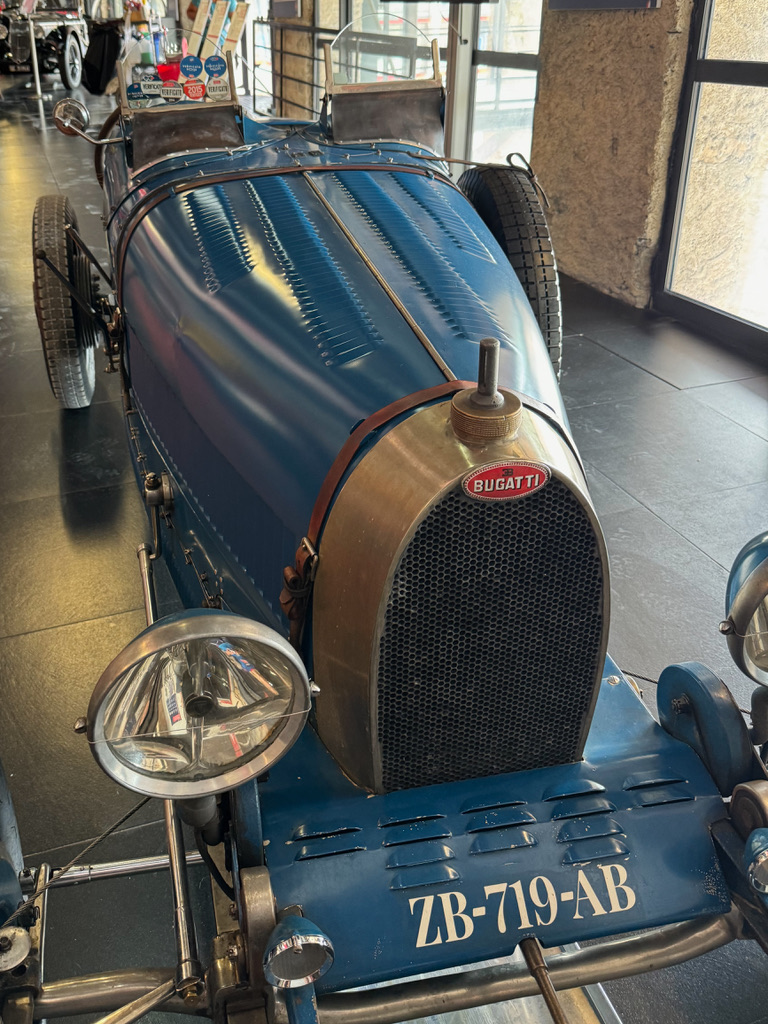

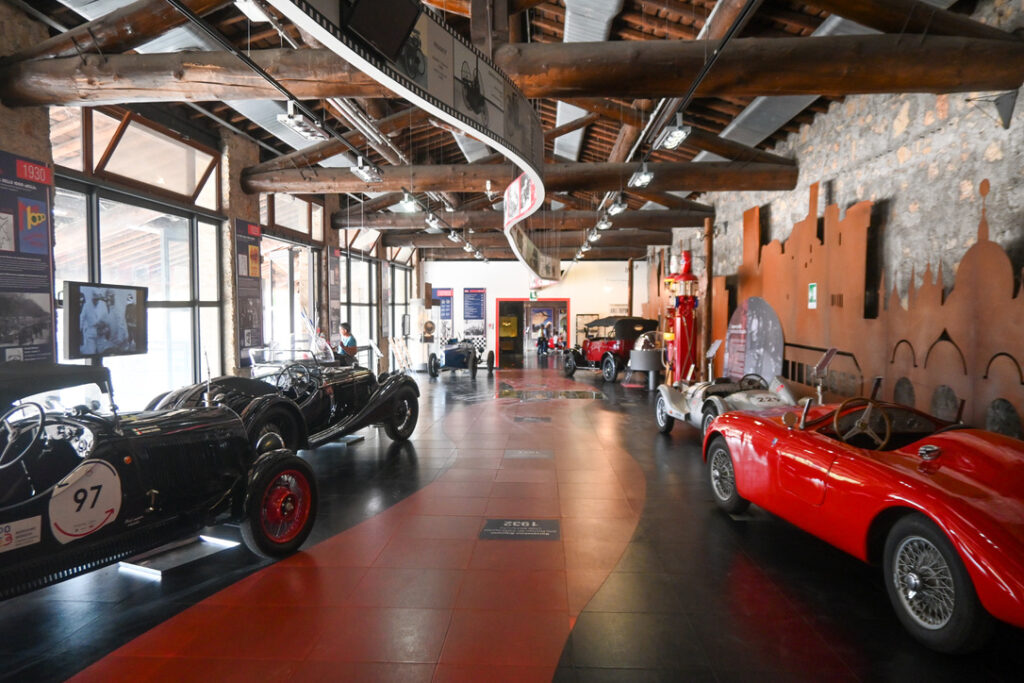
Our next stop was Venice. Logan and I have lovely memories of visiting Venice with Julie in 2008 so we were looking forward to sharing it with the kids. They looked at us a bit strangely when we told them half the fun is finding your way over the bridges through the narrow lanes and alleys, and that we were bound to be lost at least once – Venice is a city like no other!
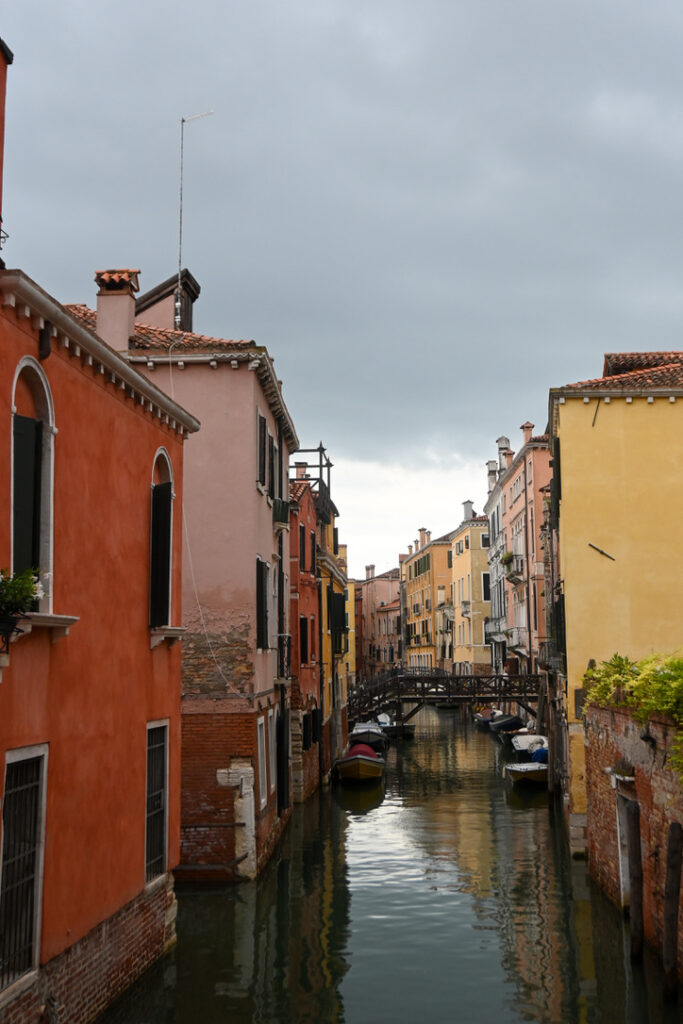
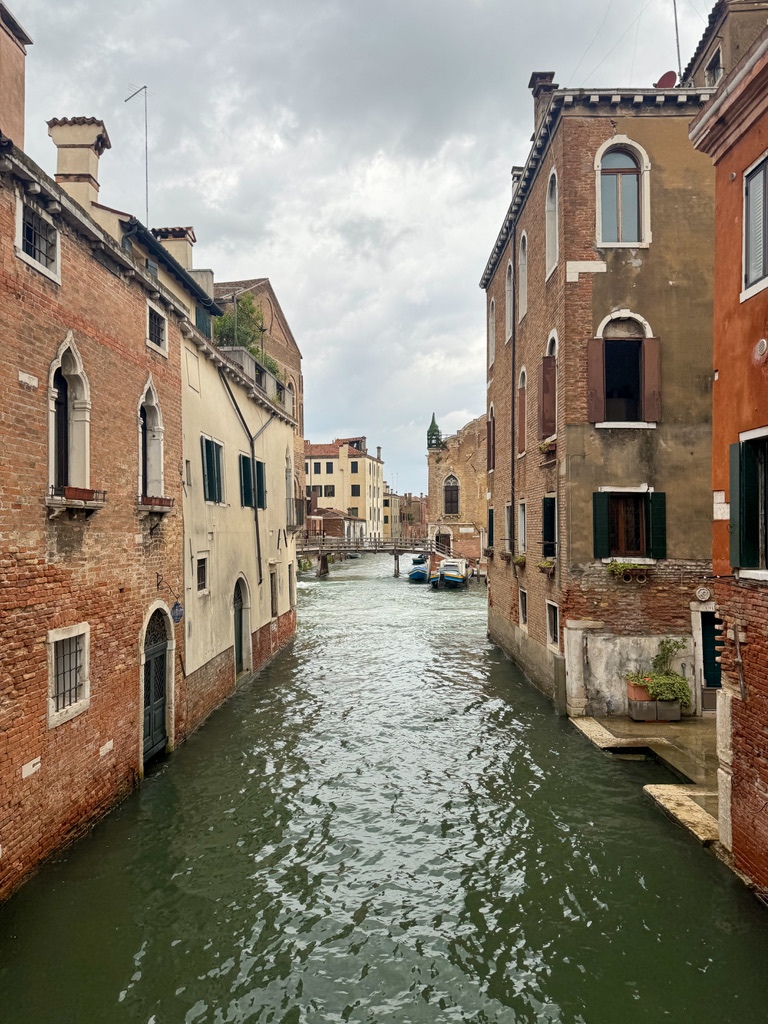
We had booked (free) tickets for the rooftop terrace at the Duty Free Store for late afternoon so, despite the forecast for heavy rain and thunderstorms, we caught the boat from our campervan park over the lagoon to Venice. It didn’t take long for the kids to see what we meant about Venice – such a pretty city but it’s so easy to lose your sense of direction. It also didn’t take long for the torrential rain to start, which unfortunately closed the rooftop terrace but we were glad to be in the city anyway and it was pretty amazing to see Piazza San Marco almost deserted.
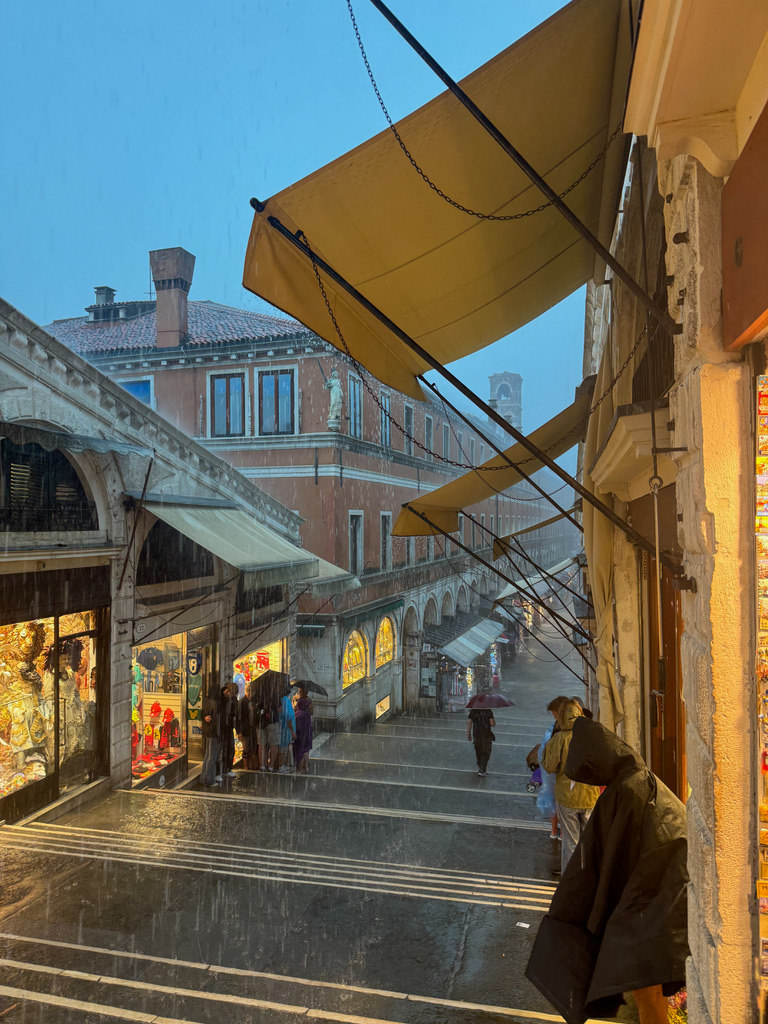
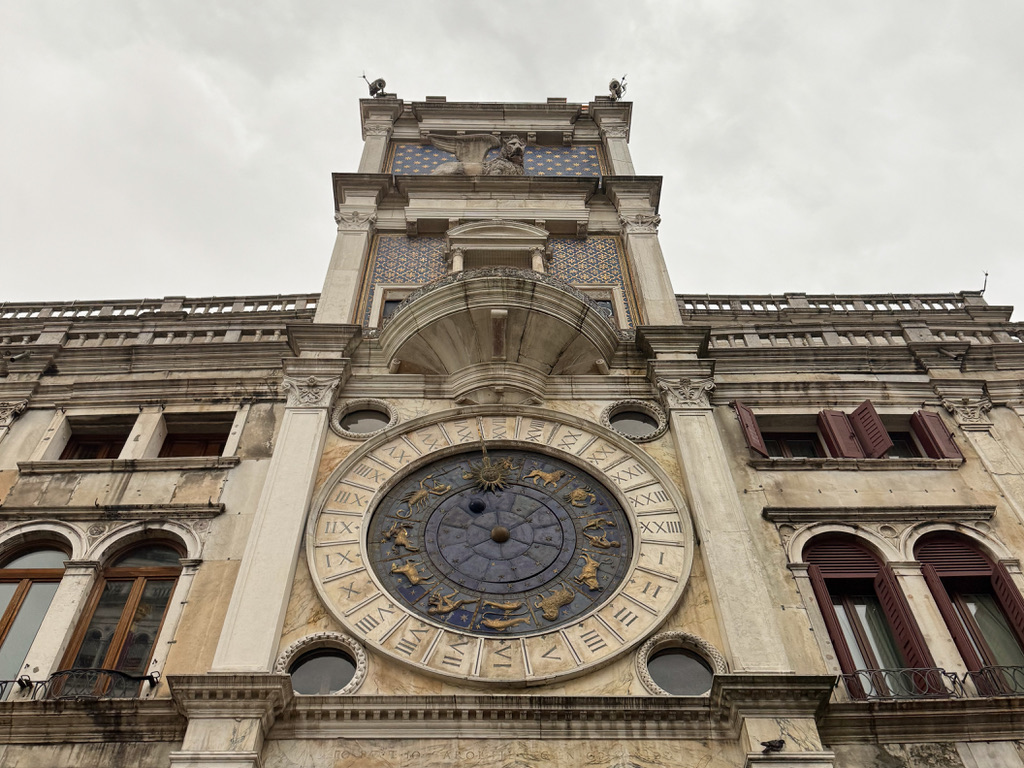

Thankfully the storm passed overnight so we caught the vaporetto out to Murano, the island famous for glass making since the 13th century. The Museo del Vetro (Murano Glass Museum) was a great way to experience the fascinating history of glass making, particularly the Venetian glass beads.
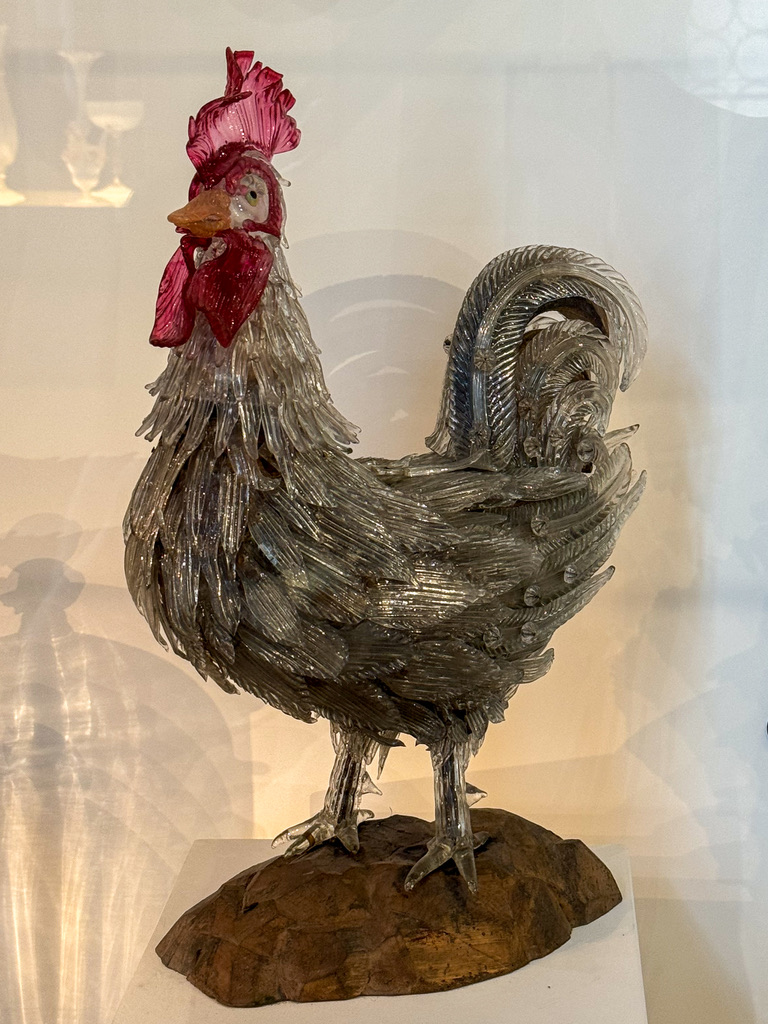
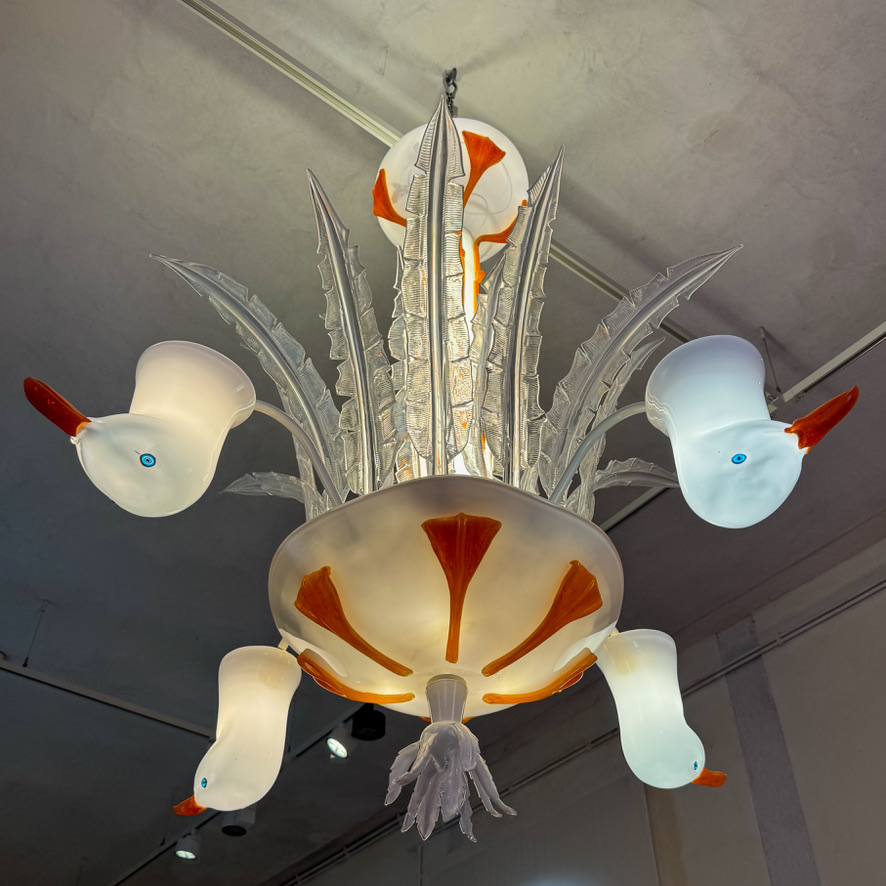
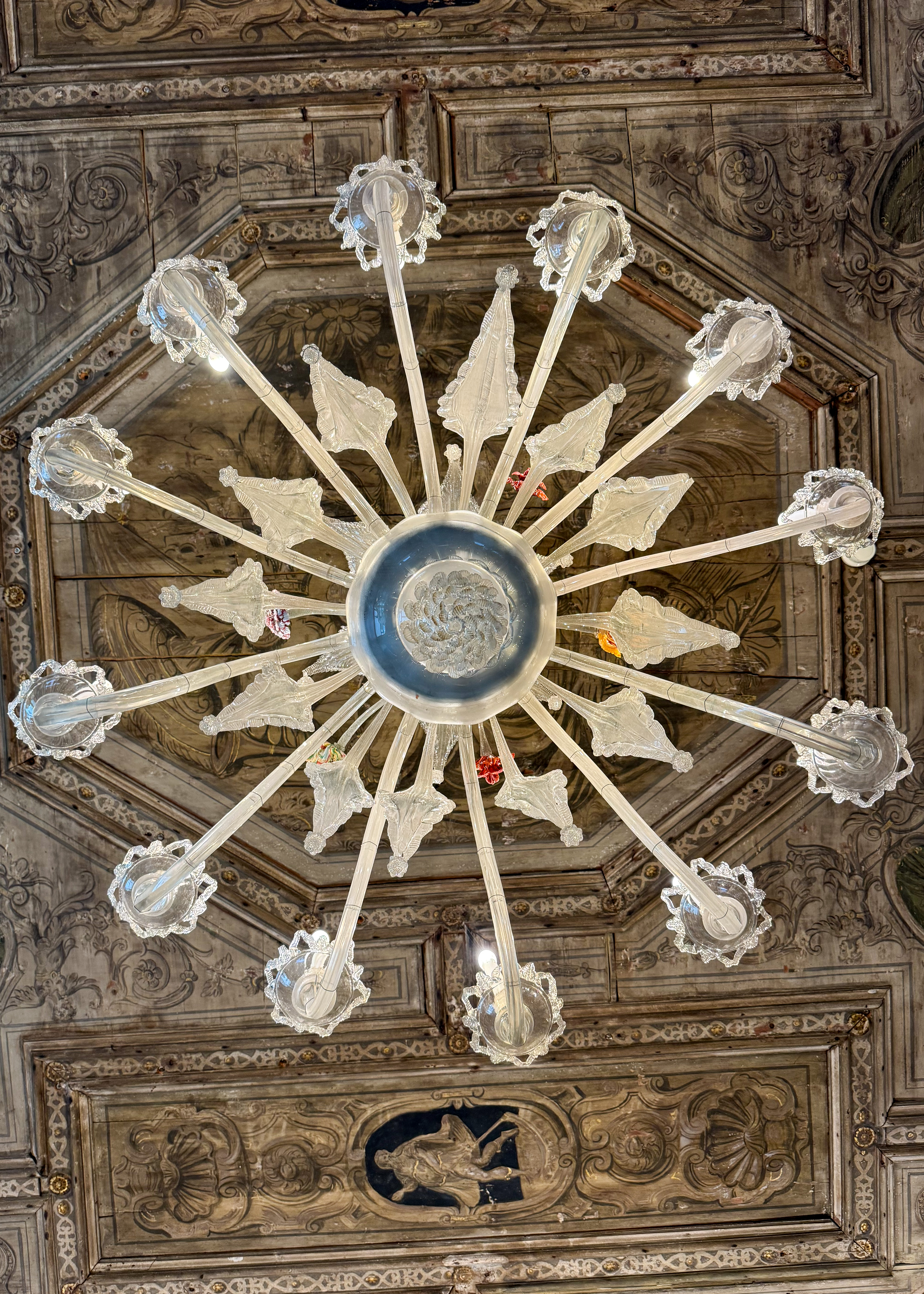
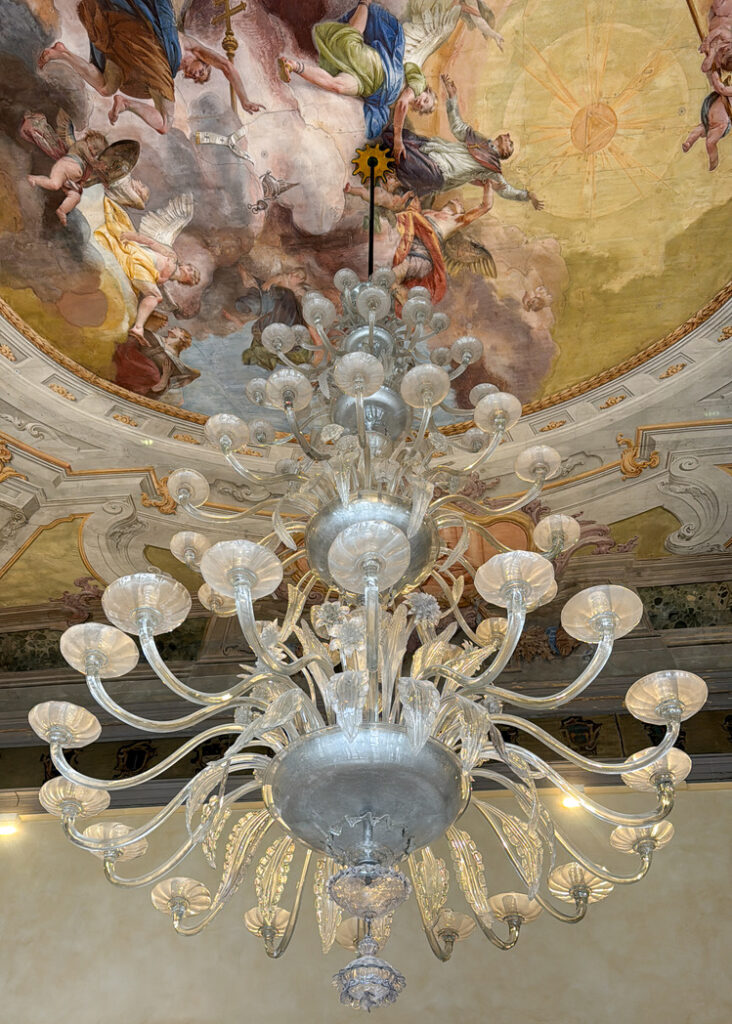
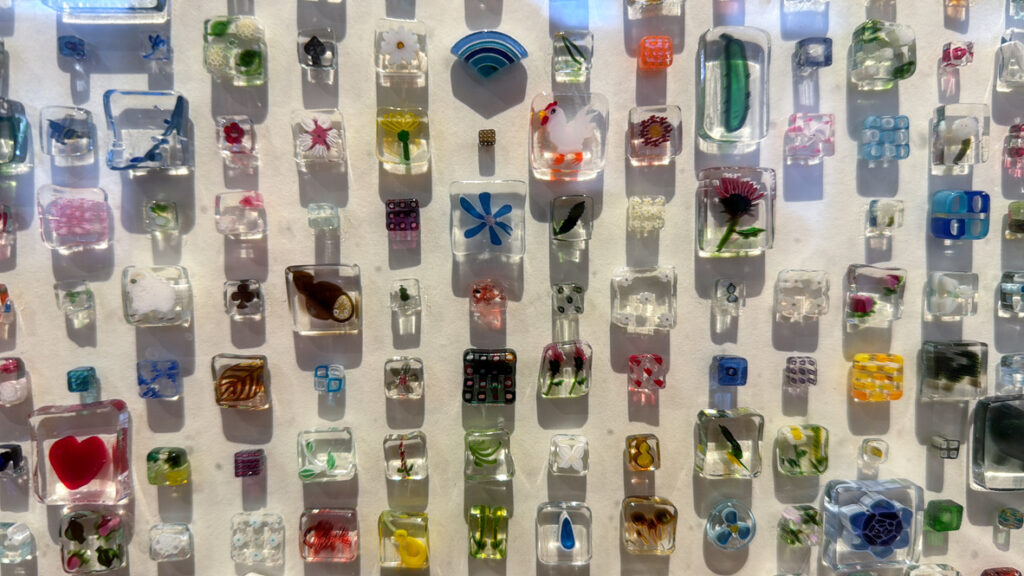
The shops were full of beautiful locally made glass pieces, mass-produced imported knick knacks, and objects that must appeal to someone (a giant blue glass horse anyone?).
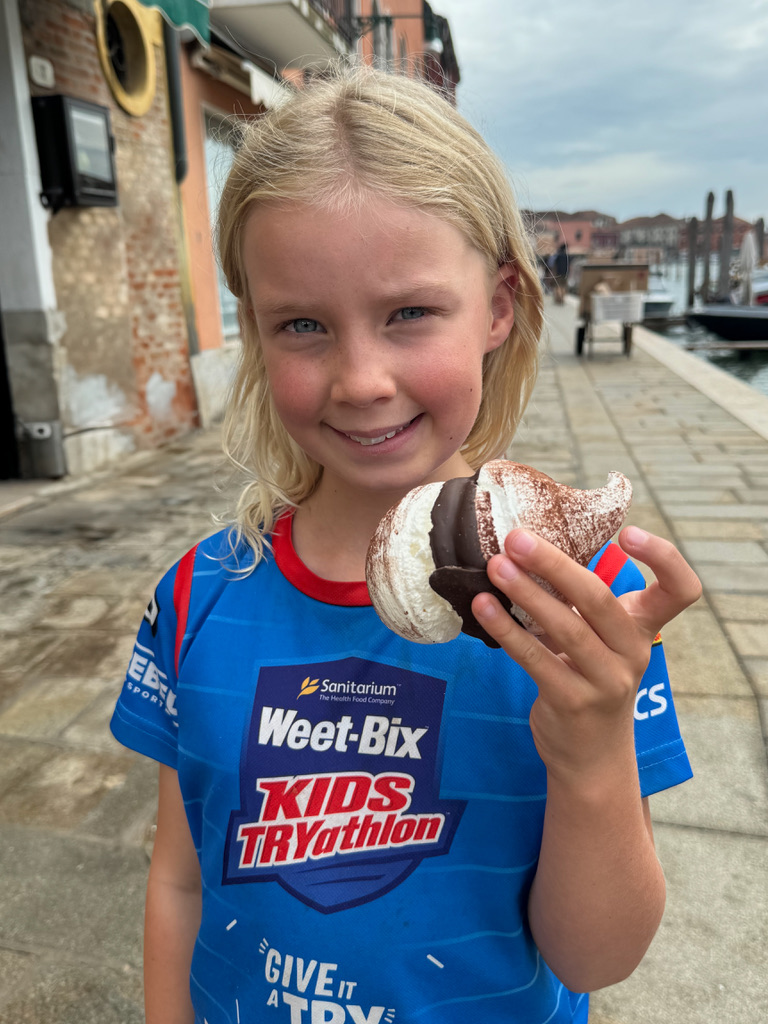
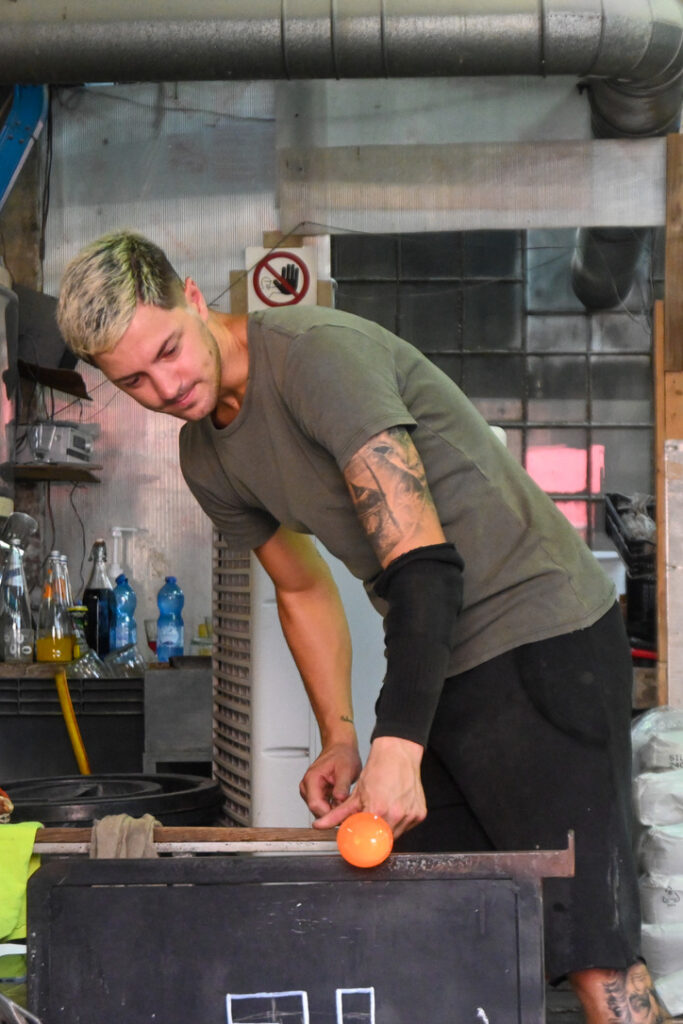
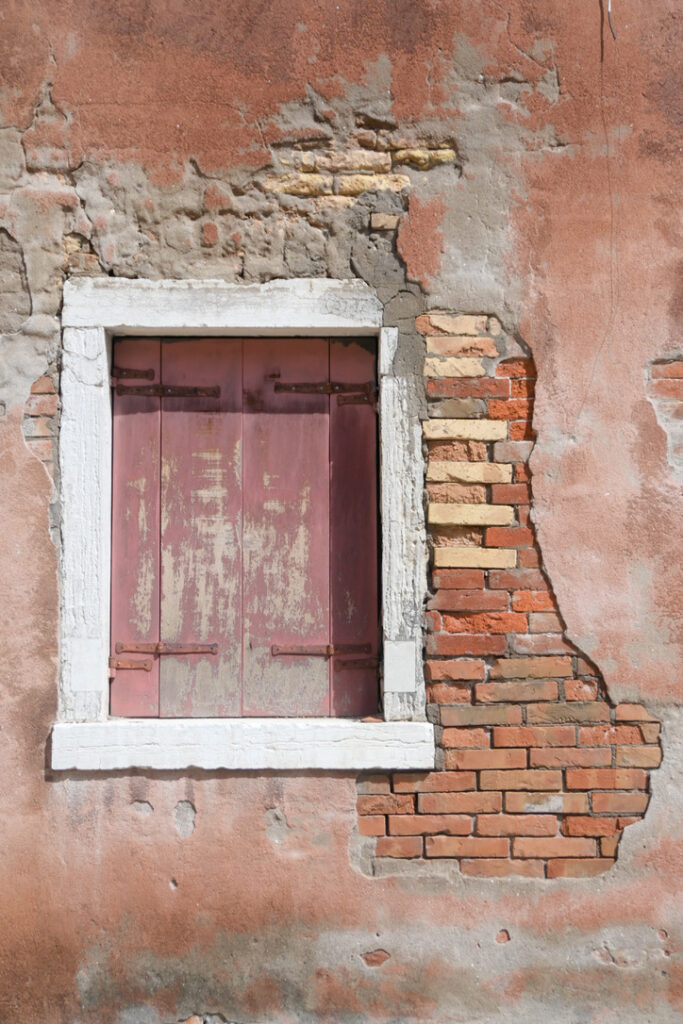
Our next stop was Burano, the island famous for lace making although very little lace is produced there now. We went hunting for a supermarket to get some lunch and in doing so ended up away from the tourist area where it was peaceful and idyllic. The houses of Burano are painted in bright colours – originally to help the fishermen find their homes when the thick fog rolled in but now just a feature of the island. We had fun finding our favourite houses!
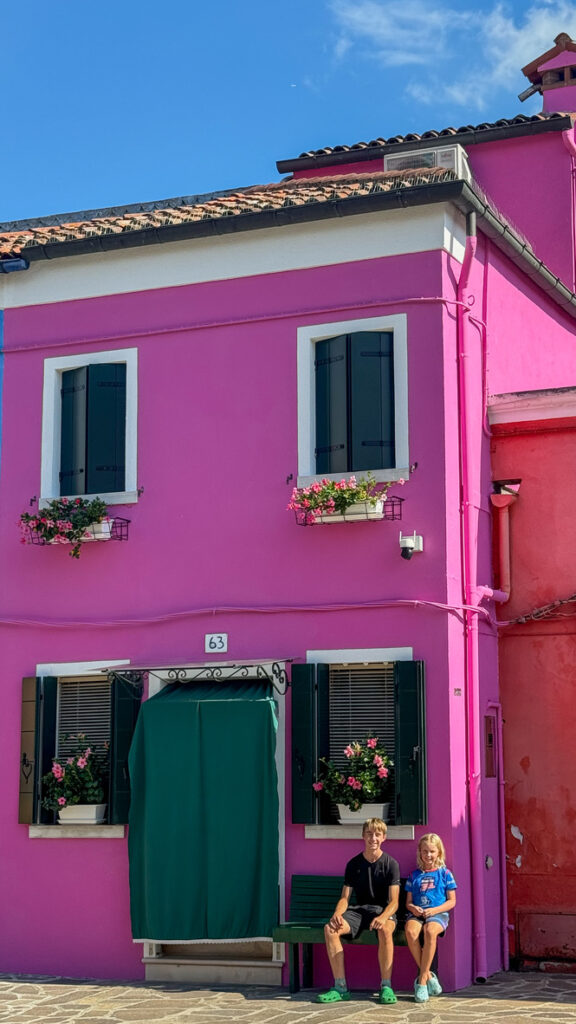
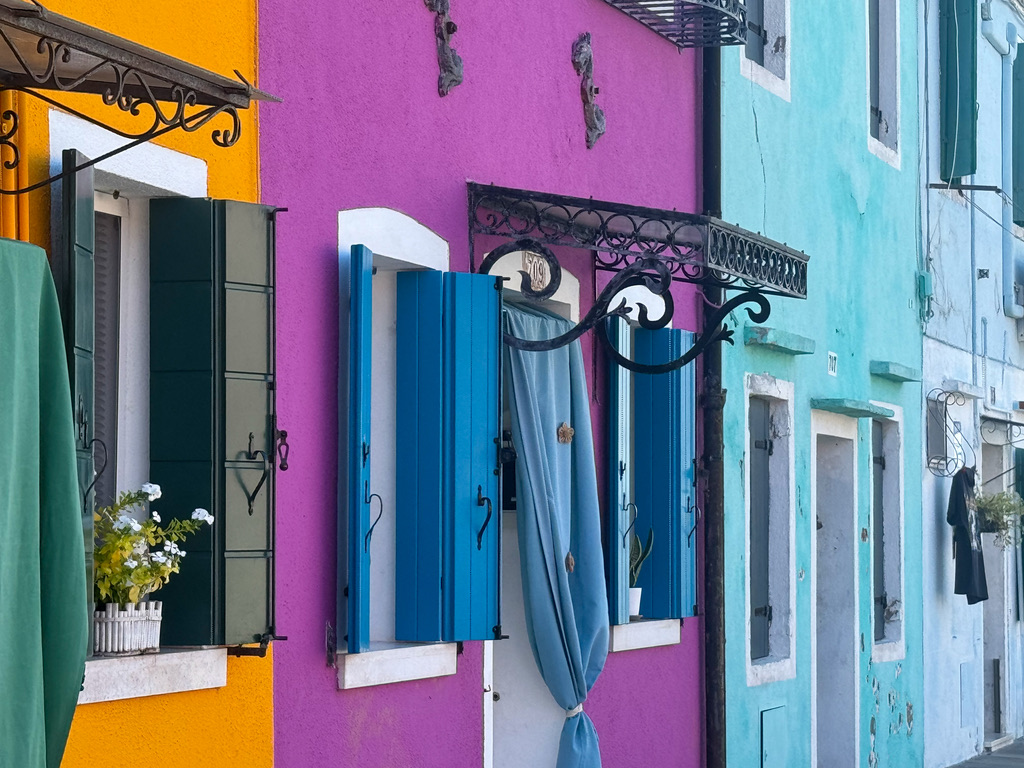
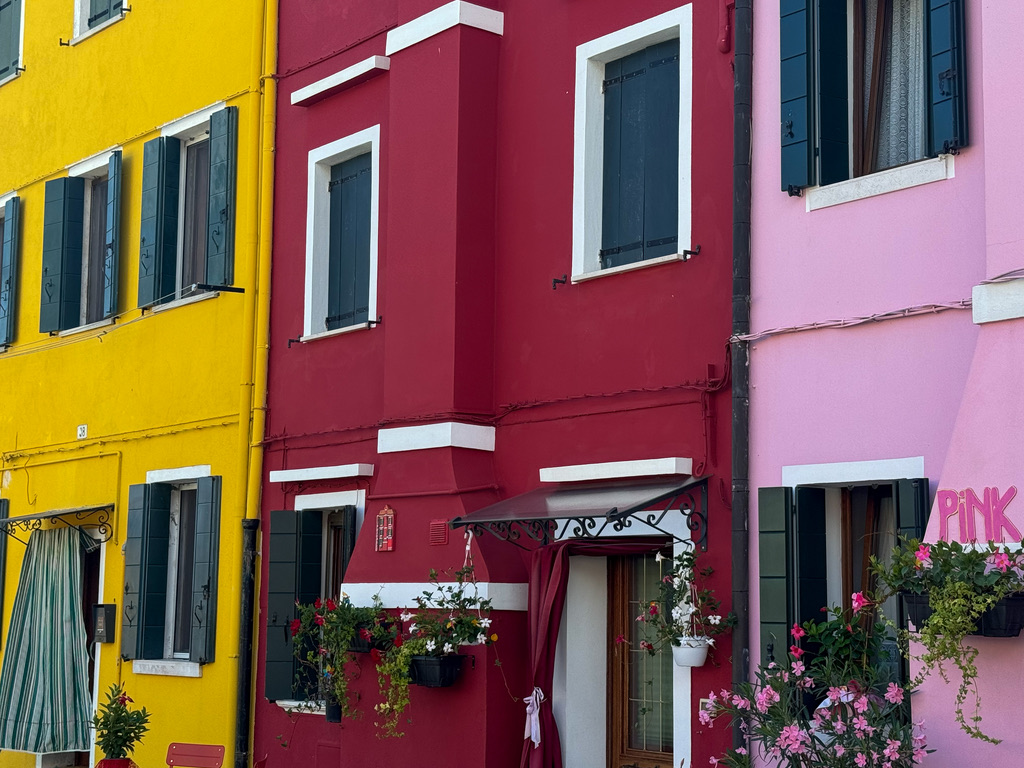

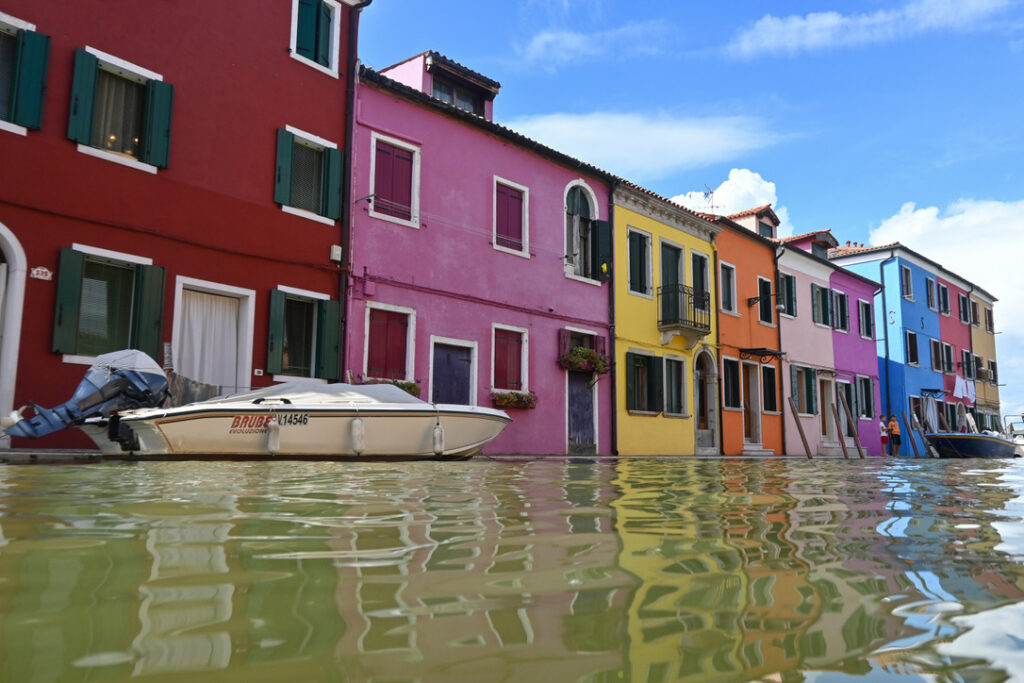
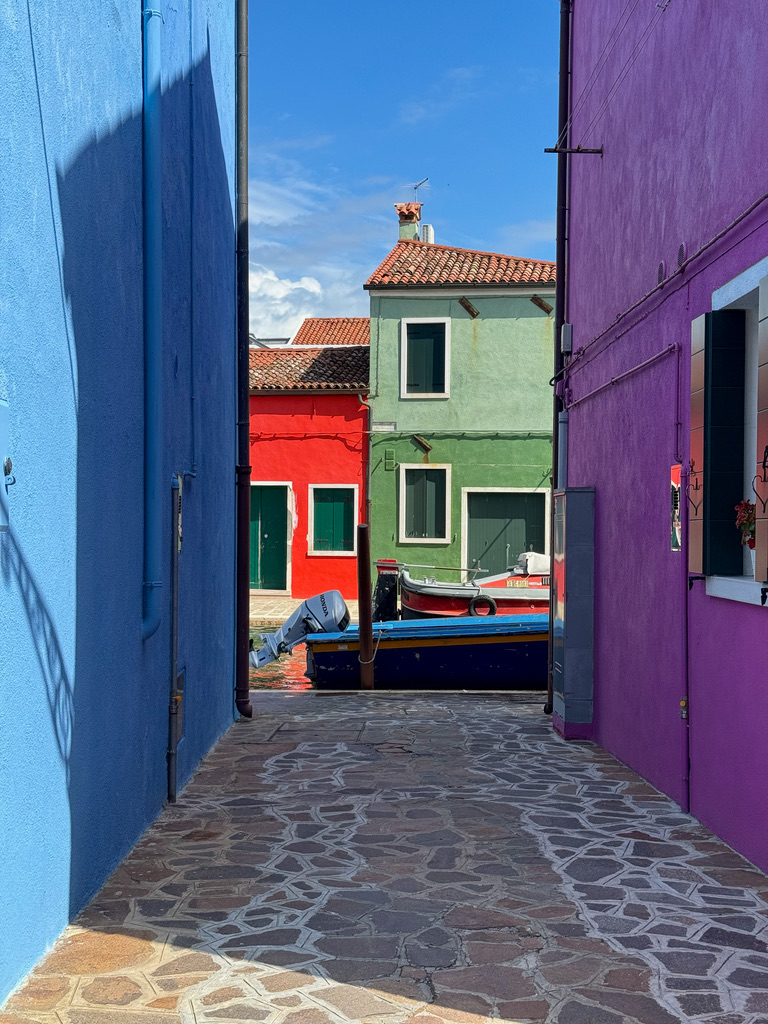
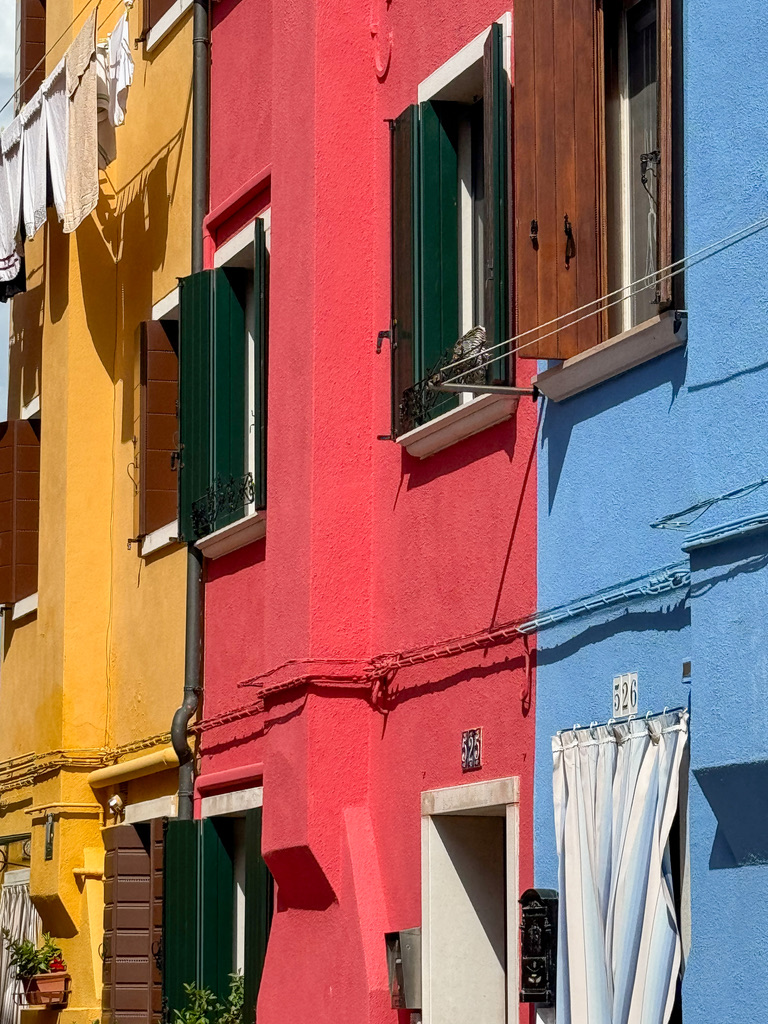
Back in Venice, the kind man on the door of the DFS rooftop terrace honoured our tickets from the day before, despite it being fully booked, so we had a great view over the Grand Canal.
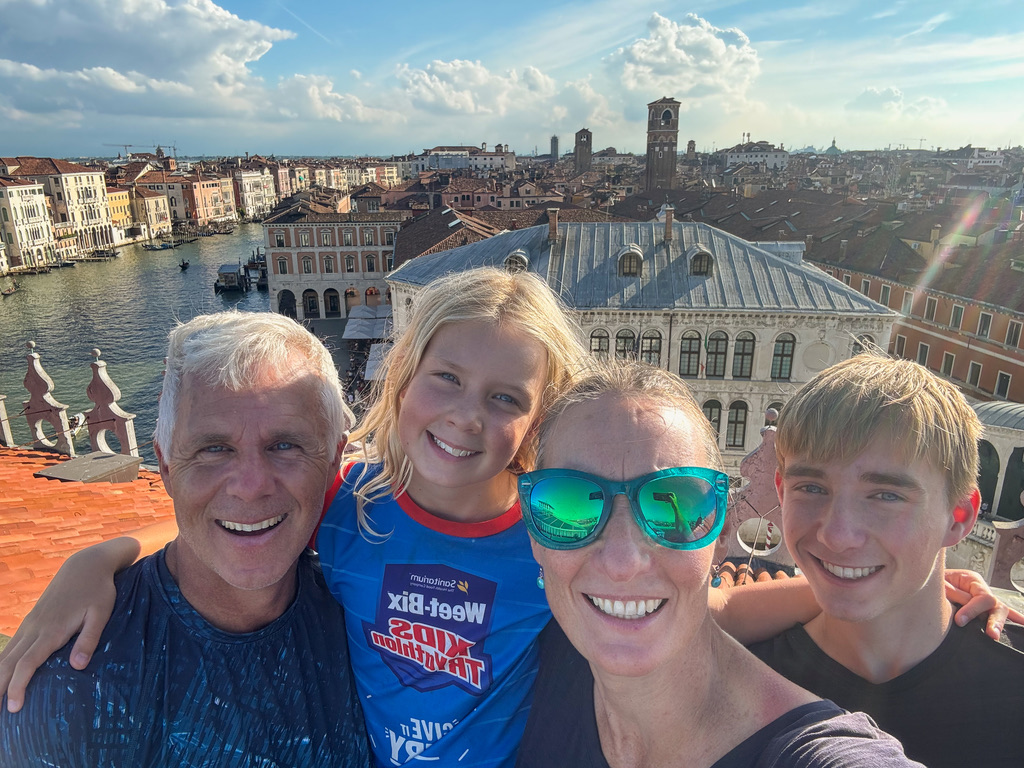
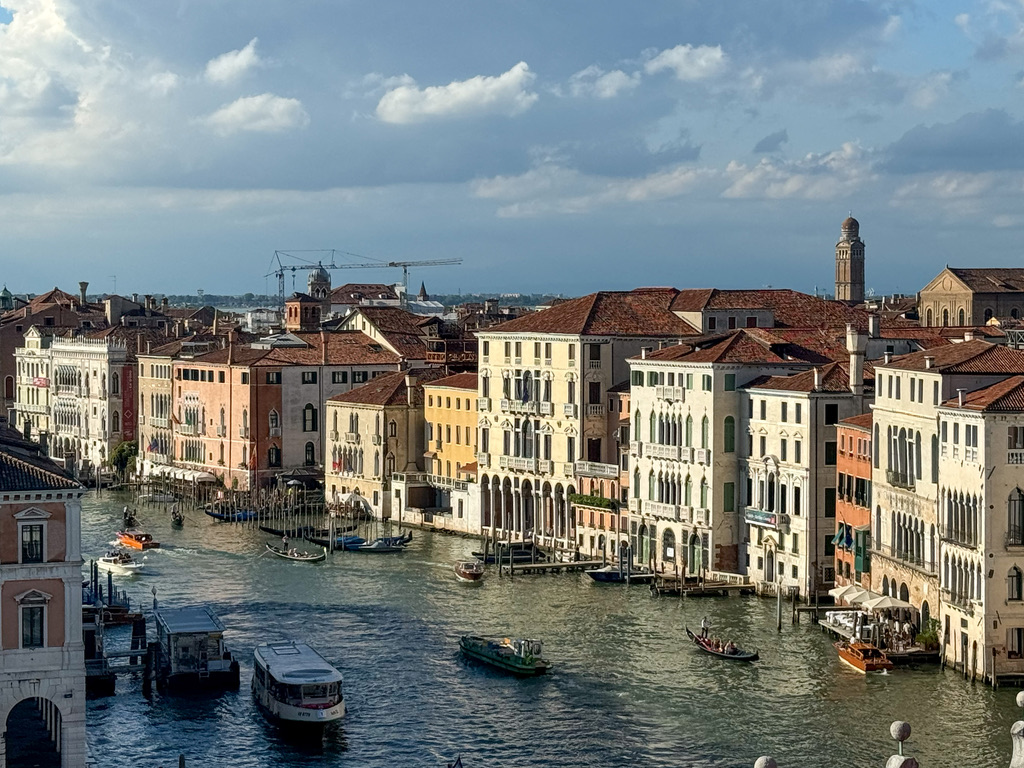
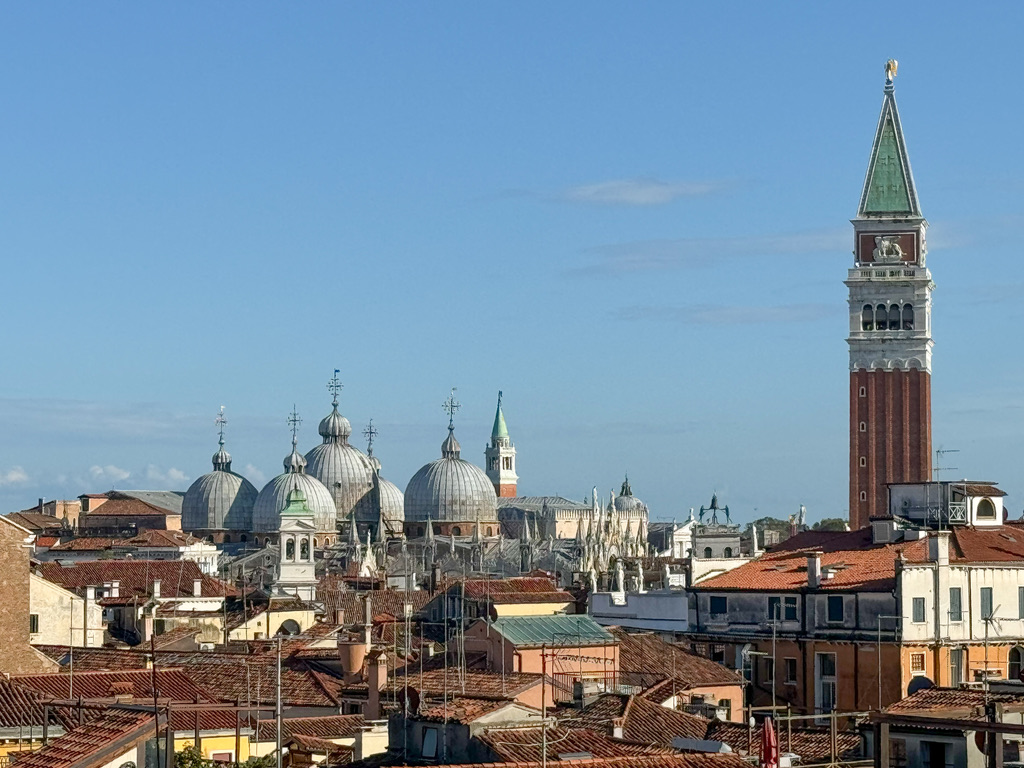
It was fun to see Venice without the rain and we thoroughly enjoyed its beauty during the afternoon, evening and into the night.
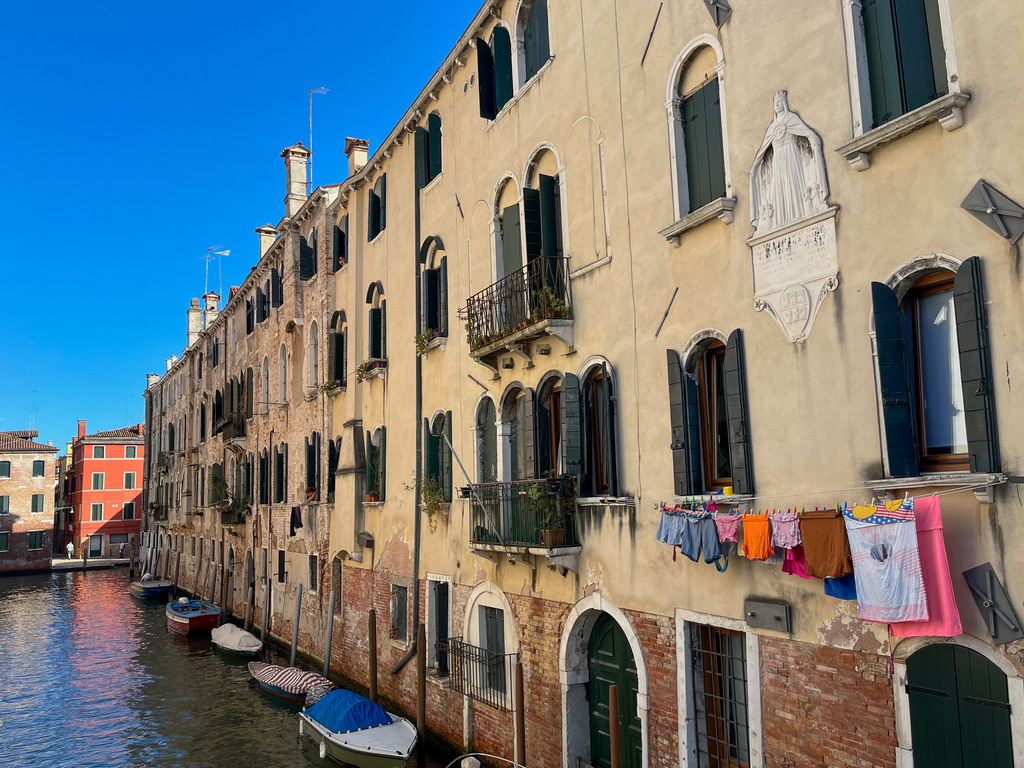
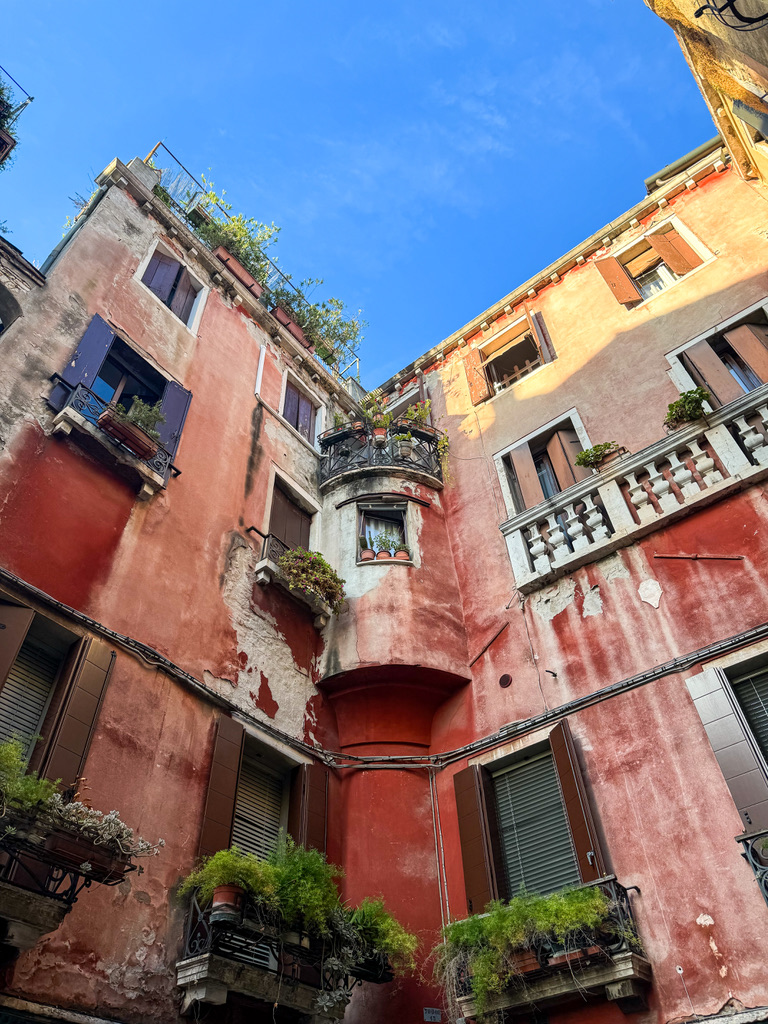
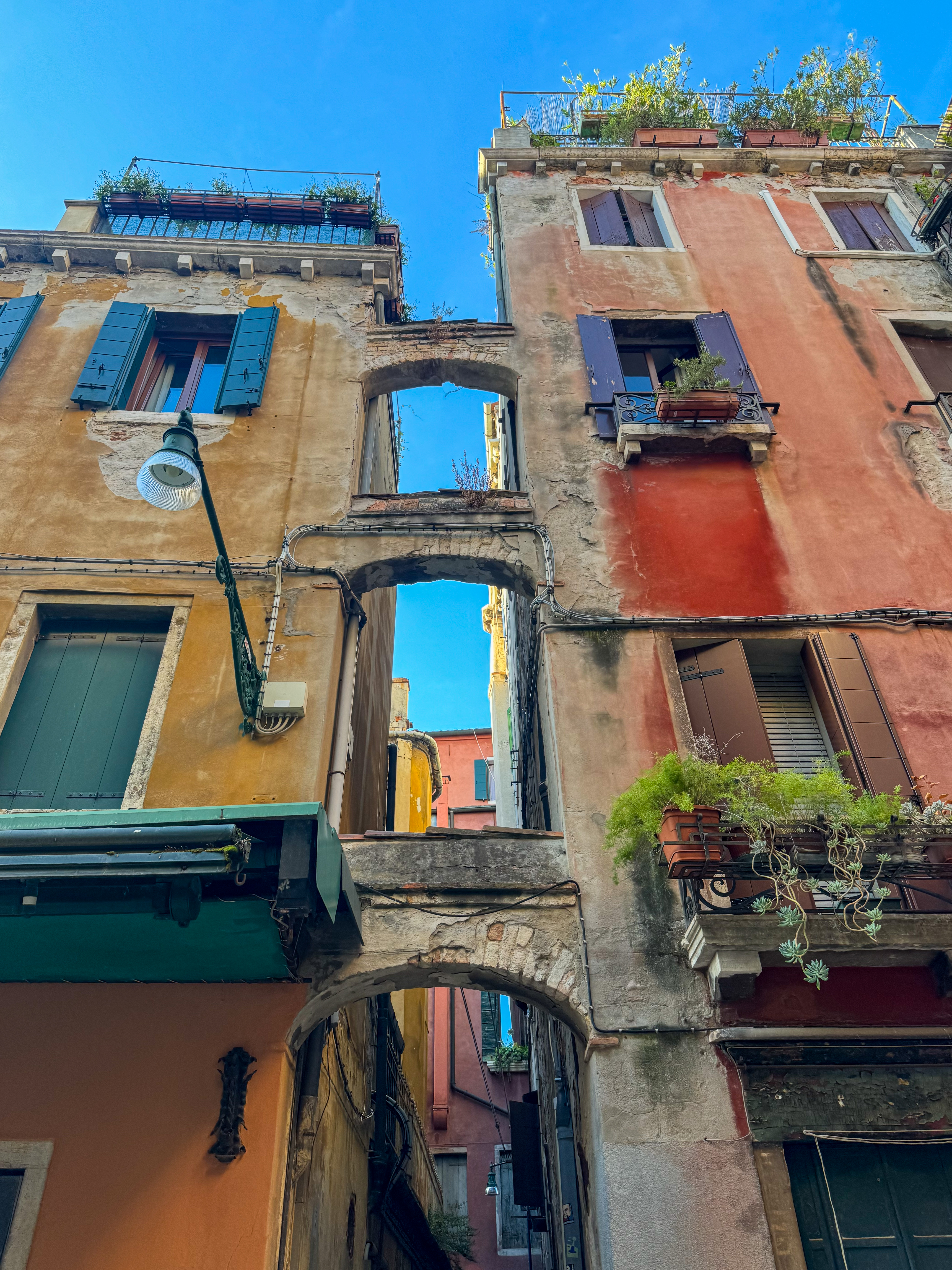
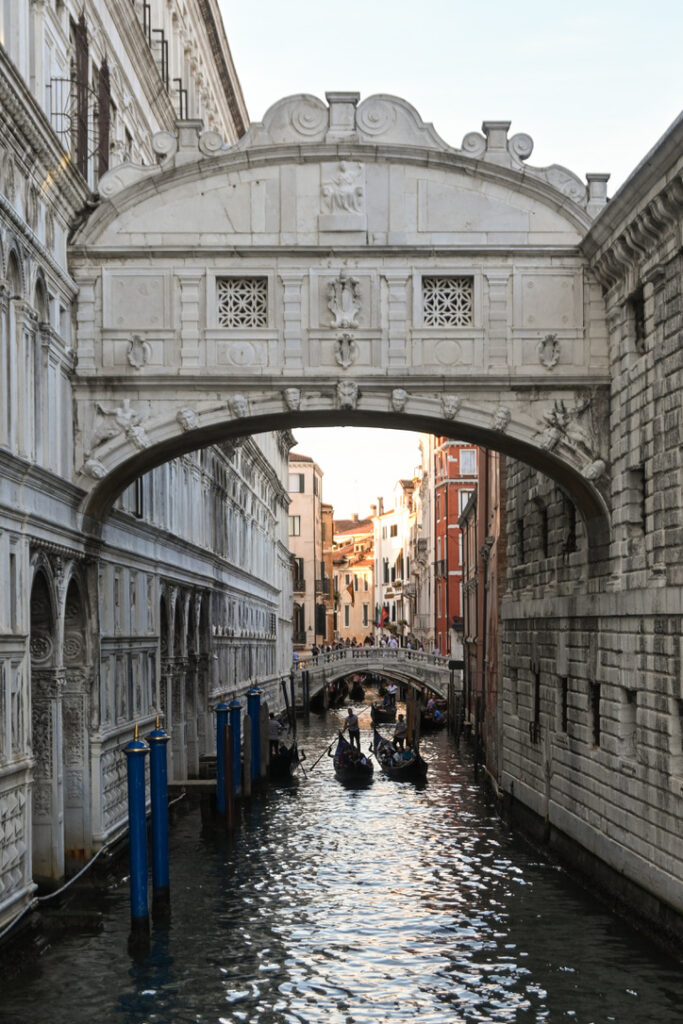
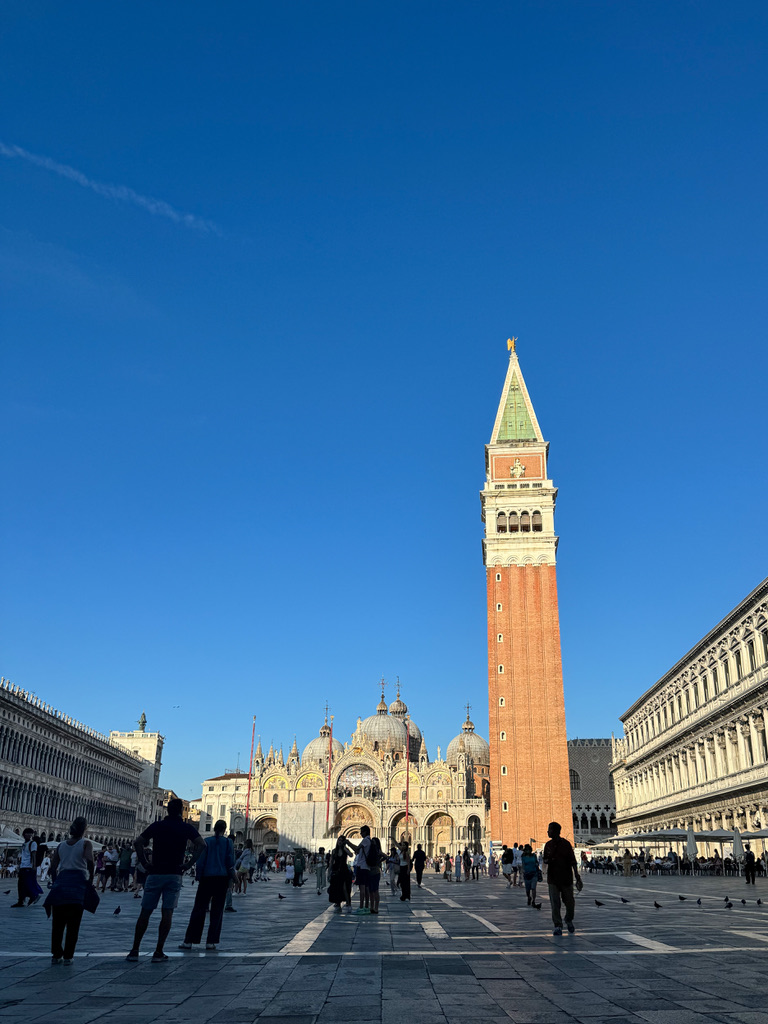
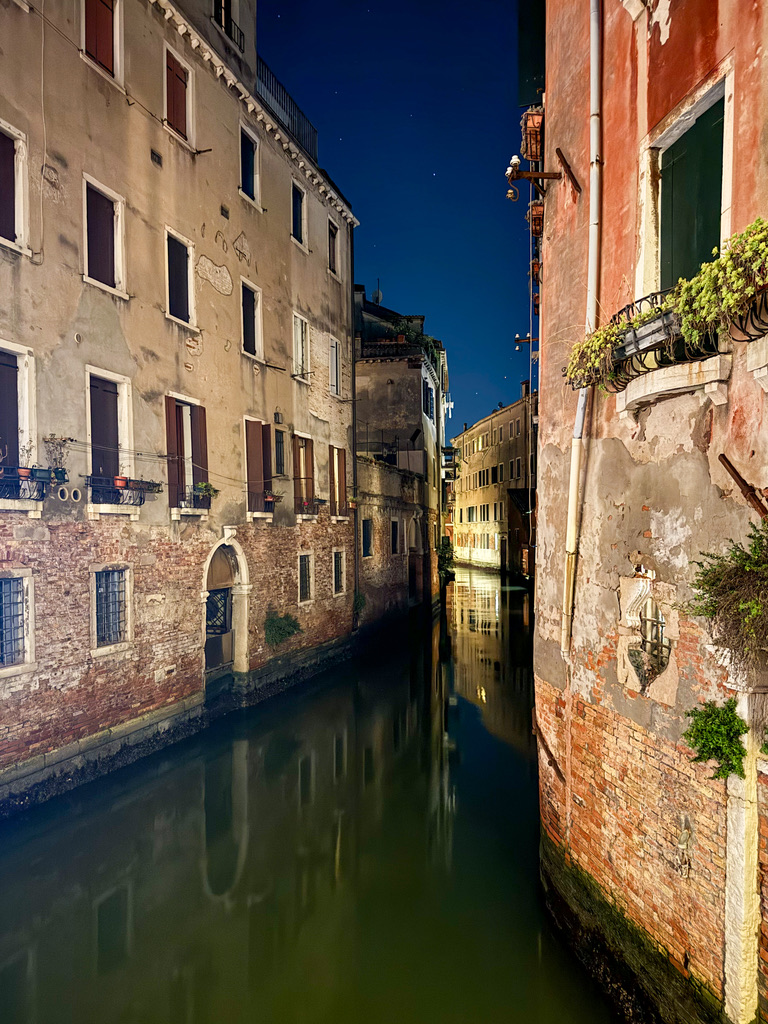
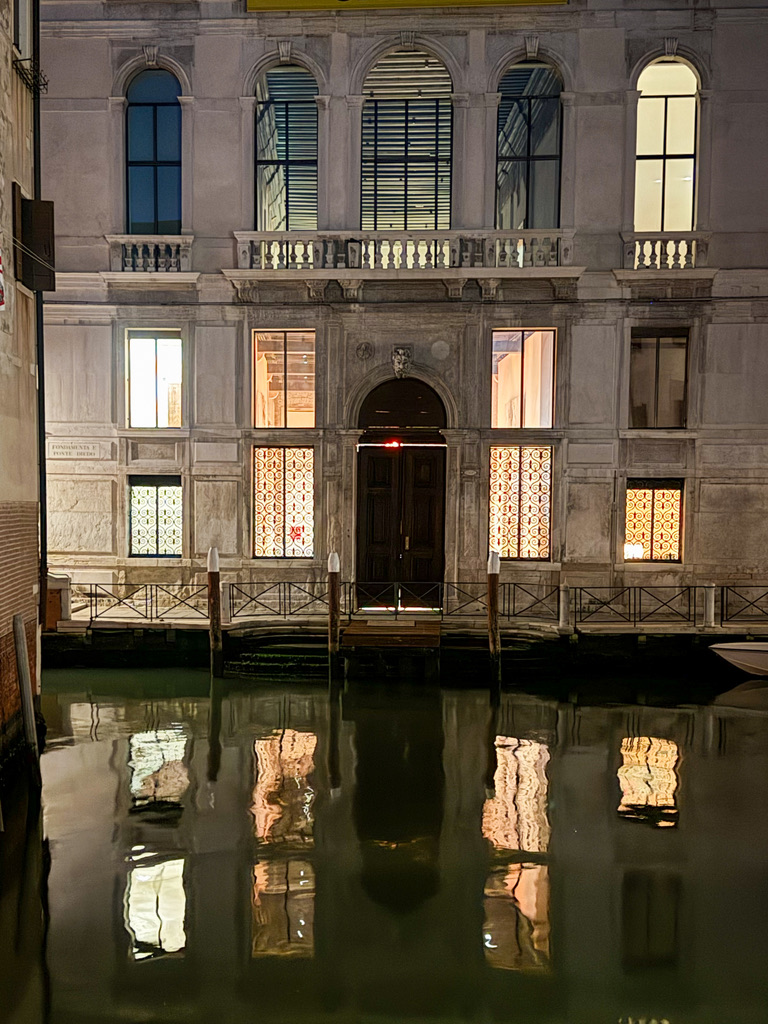
We had a very funny experience (when our phones went flat) to try and find our way back to a specific spot we’d been before. We used a bit of dead reckoning, a bit of identifying features (there’s the chicane bridge, there’s the lolly shop, there’s that cool church…) and quite a bit of guessing – then Logan (as a joke) suggested that we should follow the couple in front of us as they were on Google maps on their phones and looked like they knew where they were going. But when they turned off down a dark alley, it didn’t seem like such a good idea to follow them. When those very same people crossed in front of us walking in completely the other direction 5 minutes later, still looking at their phones, we all had a giggle. When they then swerved out of an alley to now be immediately in front of us to walk the same way as us another 10 minutes later, still looking at their phones, we all cracked up! It was even funnier when it turned out their destination was McDonalds and our destination was just a few doors down. Venice certainly is a tricky city to navigate but it has such a unique and captivating charm!
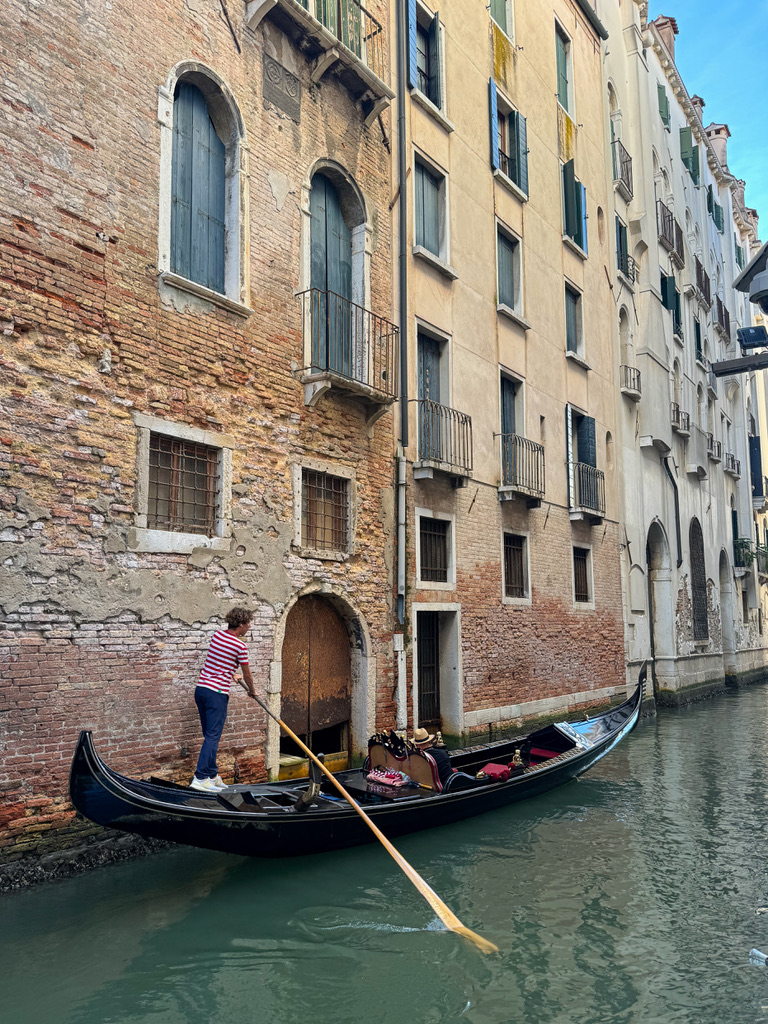
From Venice we headed across the border into Slovenia. Wow! What a spectacular country! We spent most of our time in Slovenia in the Triglav National Park (Slovenia’s only National Park) on either side of the Vršič Pass. Triglav National Park felt a little bit like the Wānaka region in New Zealand – fabulous scenery, small villages, and loads of adventure activities available to try out.
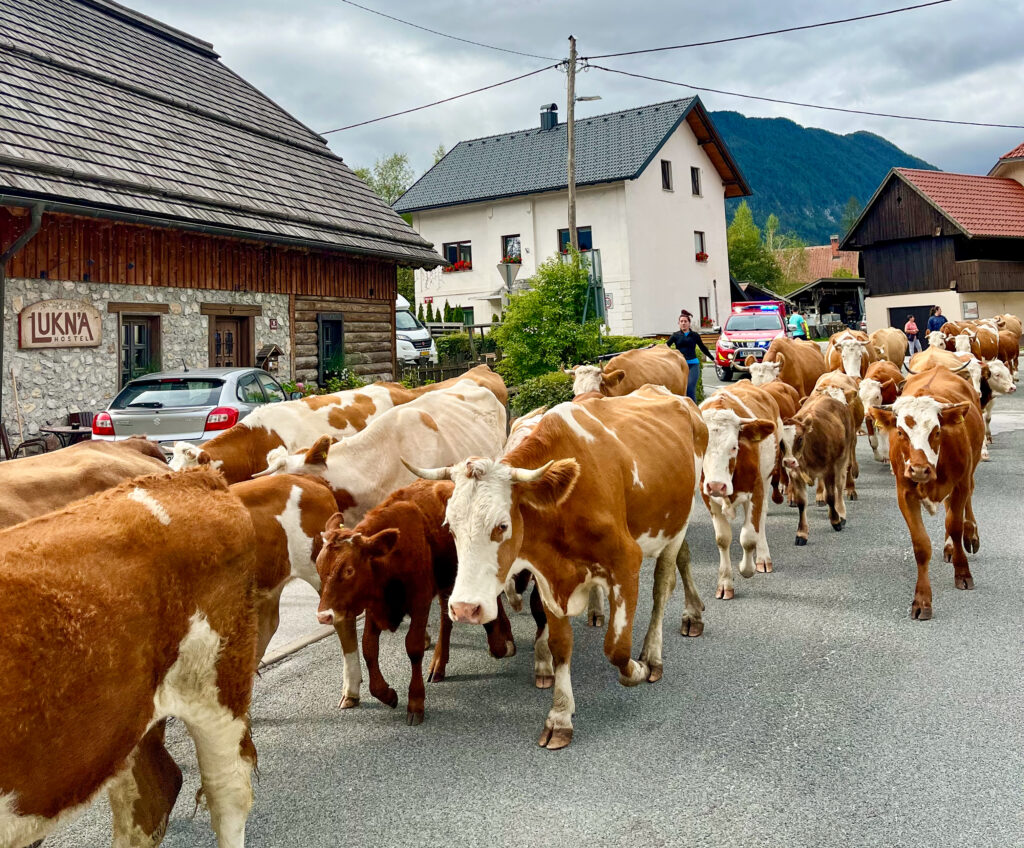
On the south west side of the park, we started at Tolmin Gorges – the colour of the water was just so stunning! You are not allowed to swim in lots of the rivers and lakes but the kids loved playing next to the water regardless (although they would have loved to have had a dip too!).
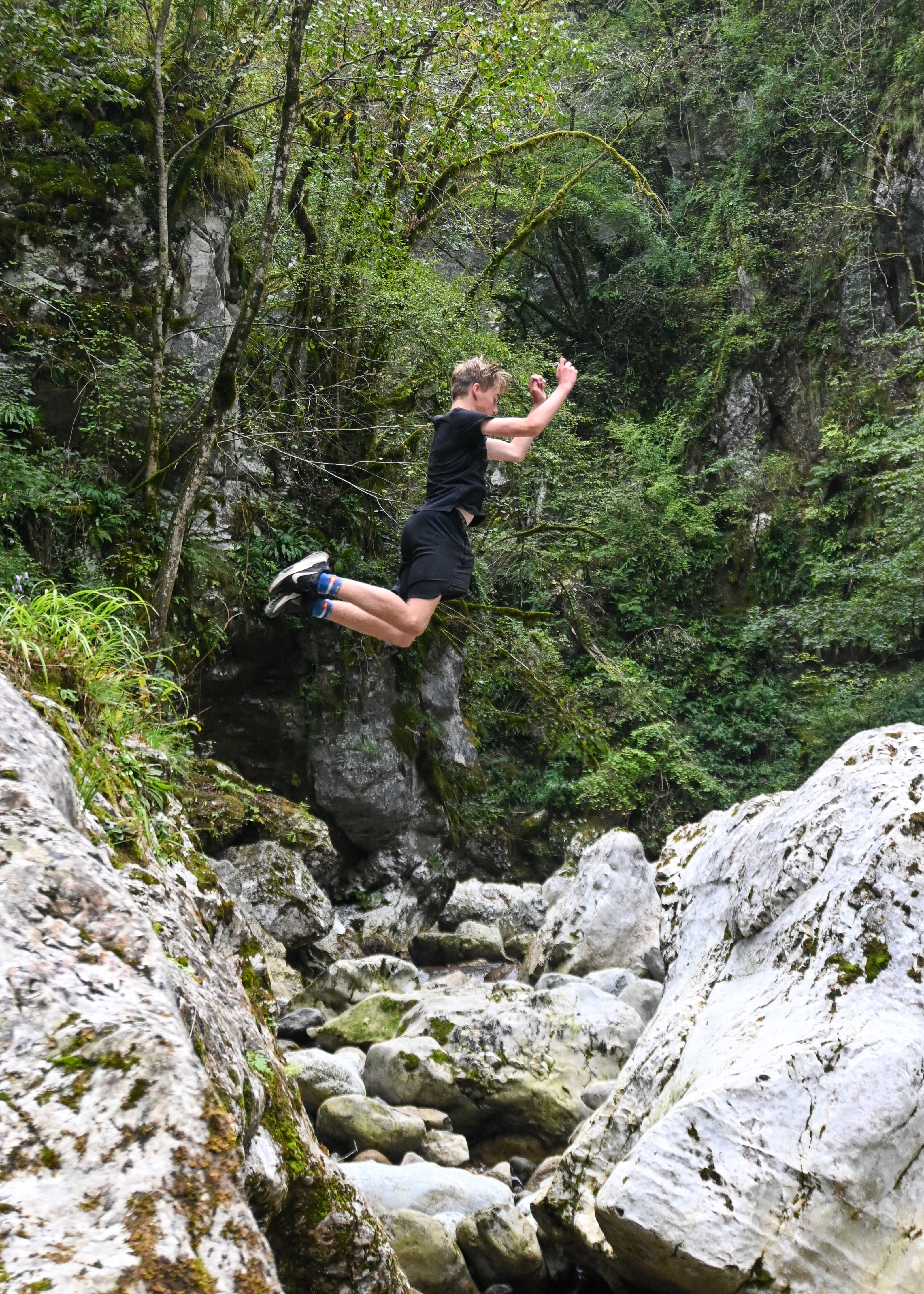

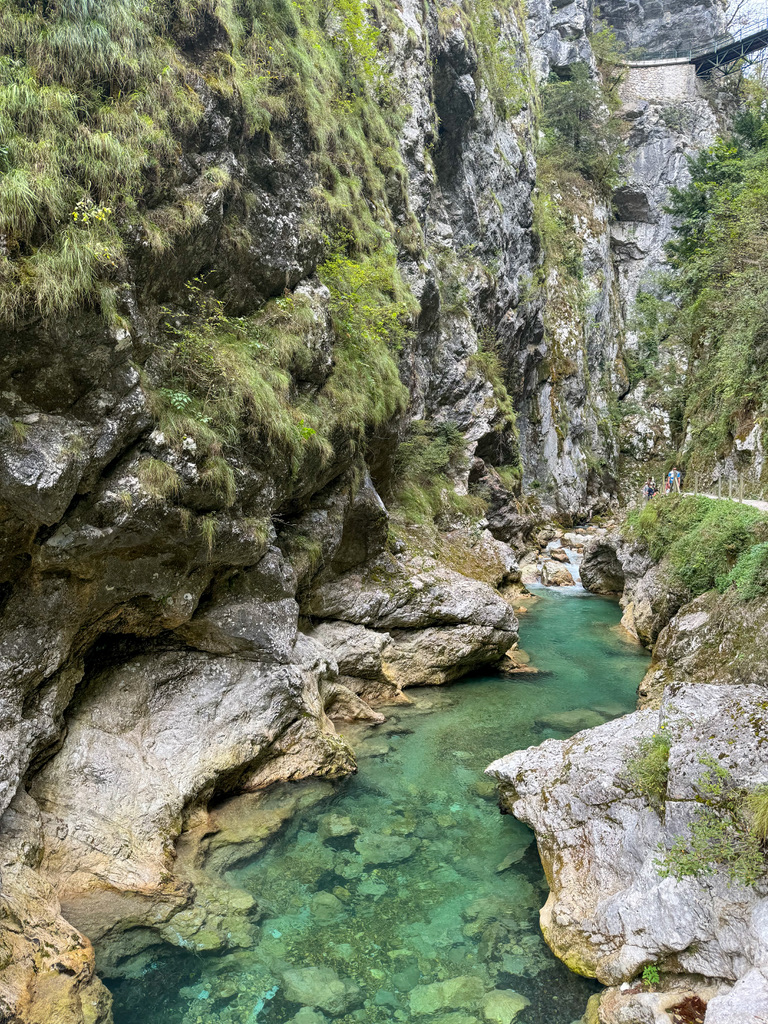
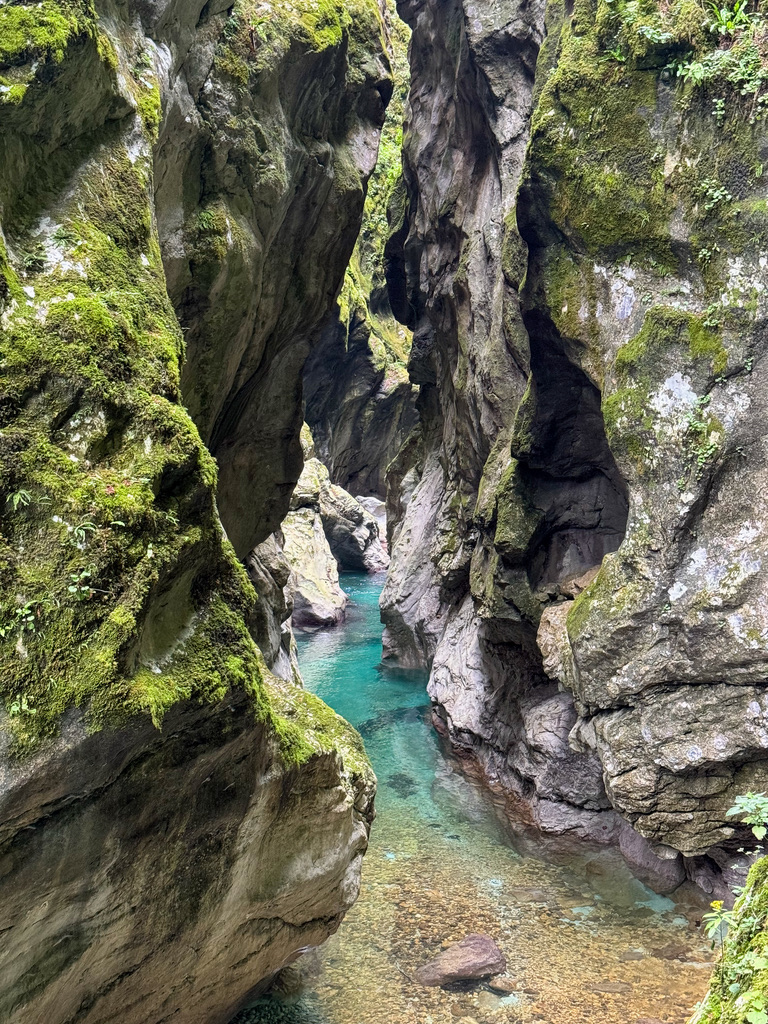
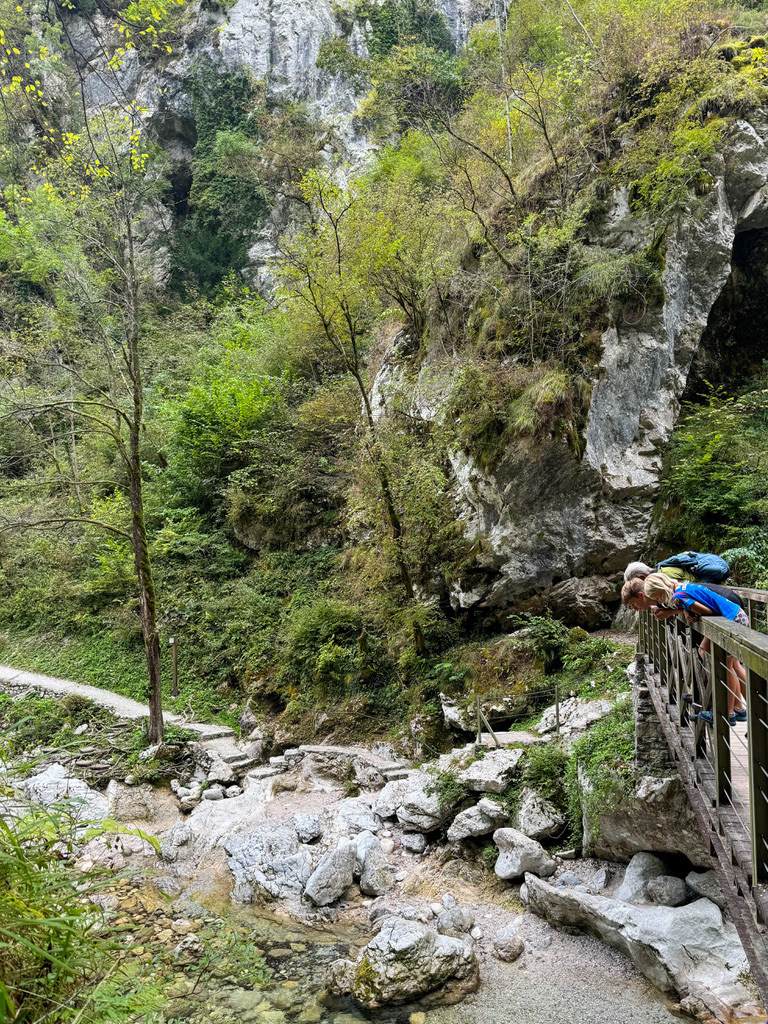
We then found Napoleon’s Bridge over the Soča River. There has been a bridge here, where the gorge is the narrowest, since ancient times. This stone version was built in 1750 and Napoleon marched his troops over it on the way to battle, hence the name. The Soča River runs at a pretty constant 5-8 degrees Celsius, but that didn’t stop our crazy kids from leaping and flipping into it!
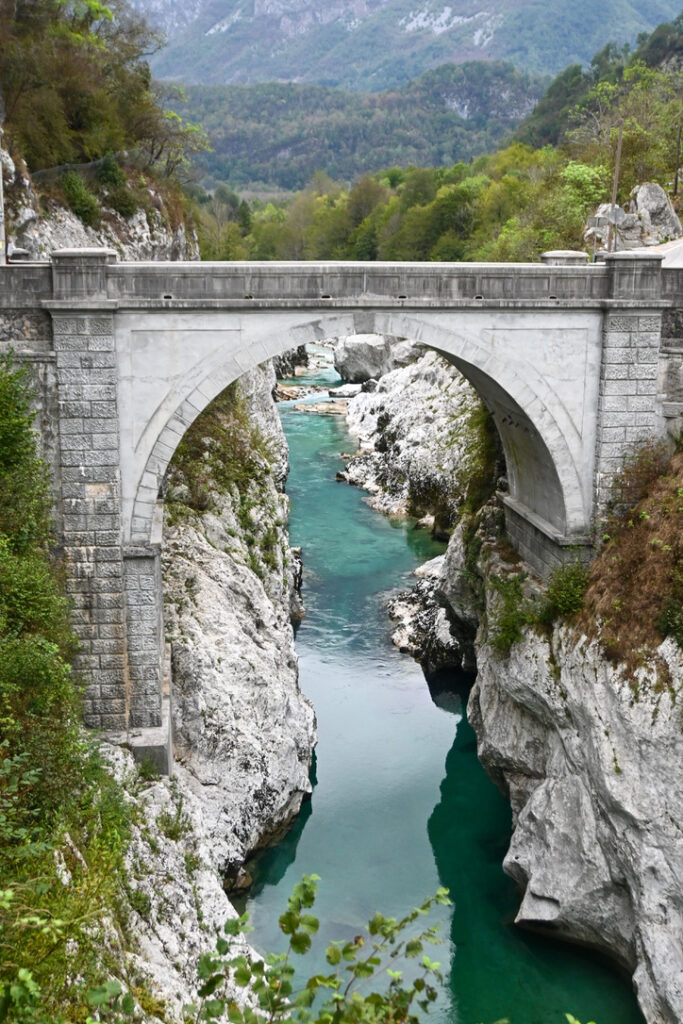
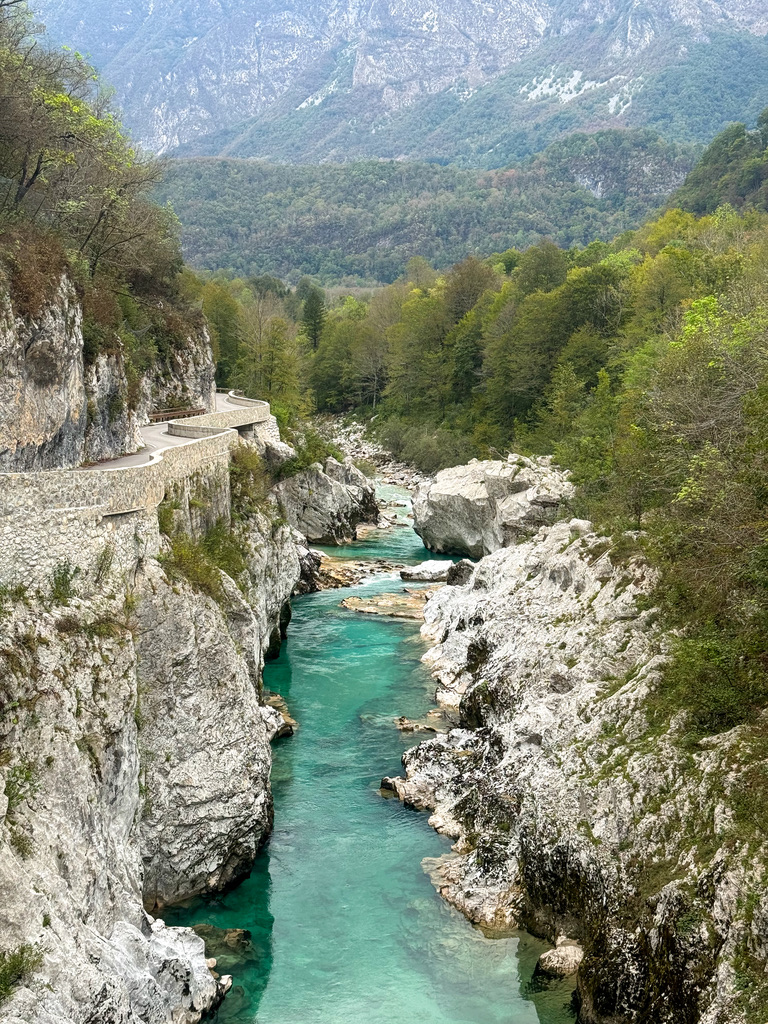
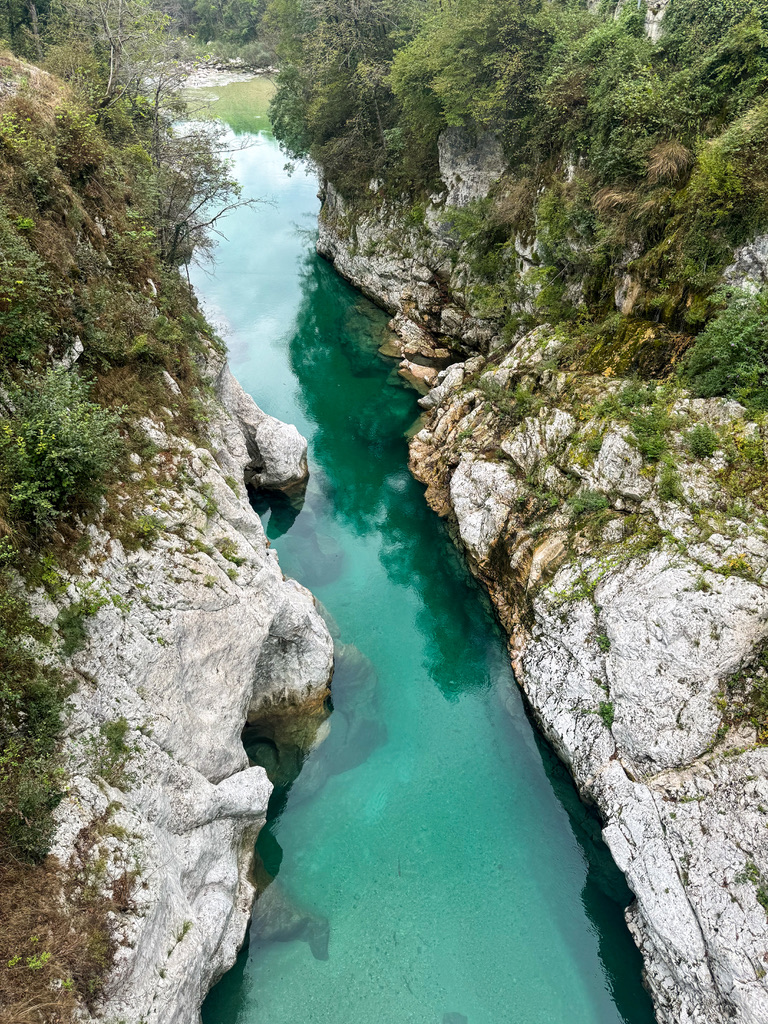
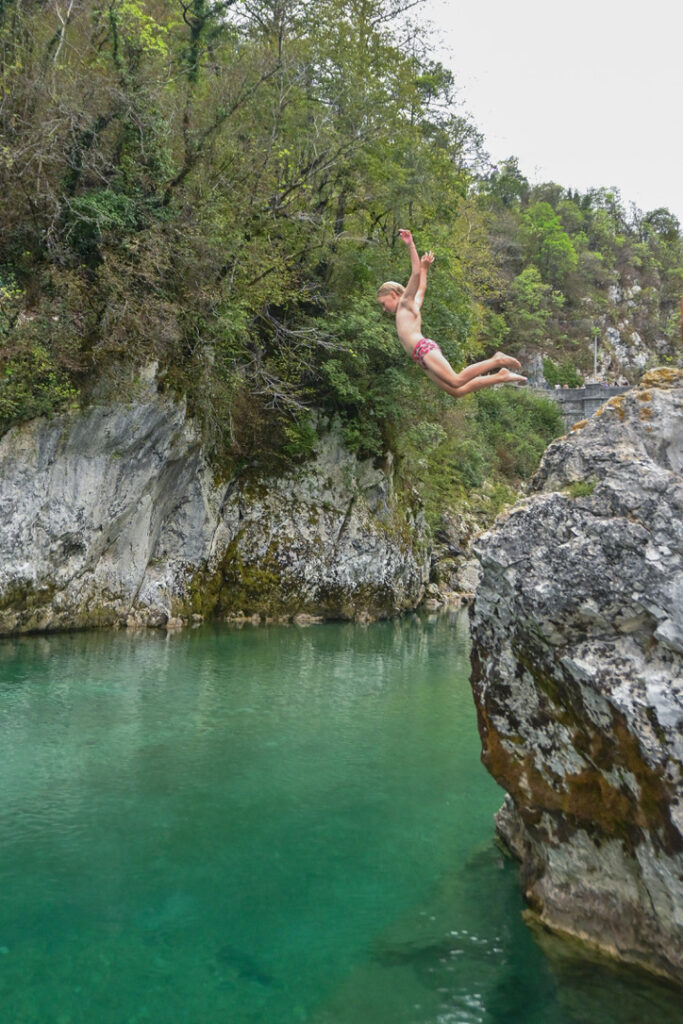
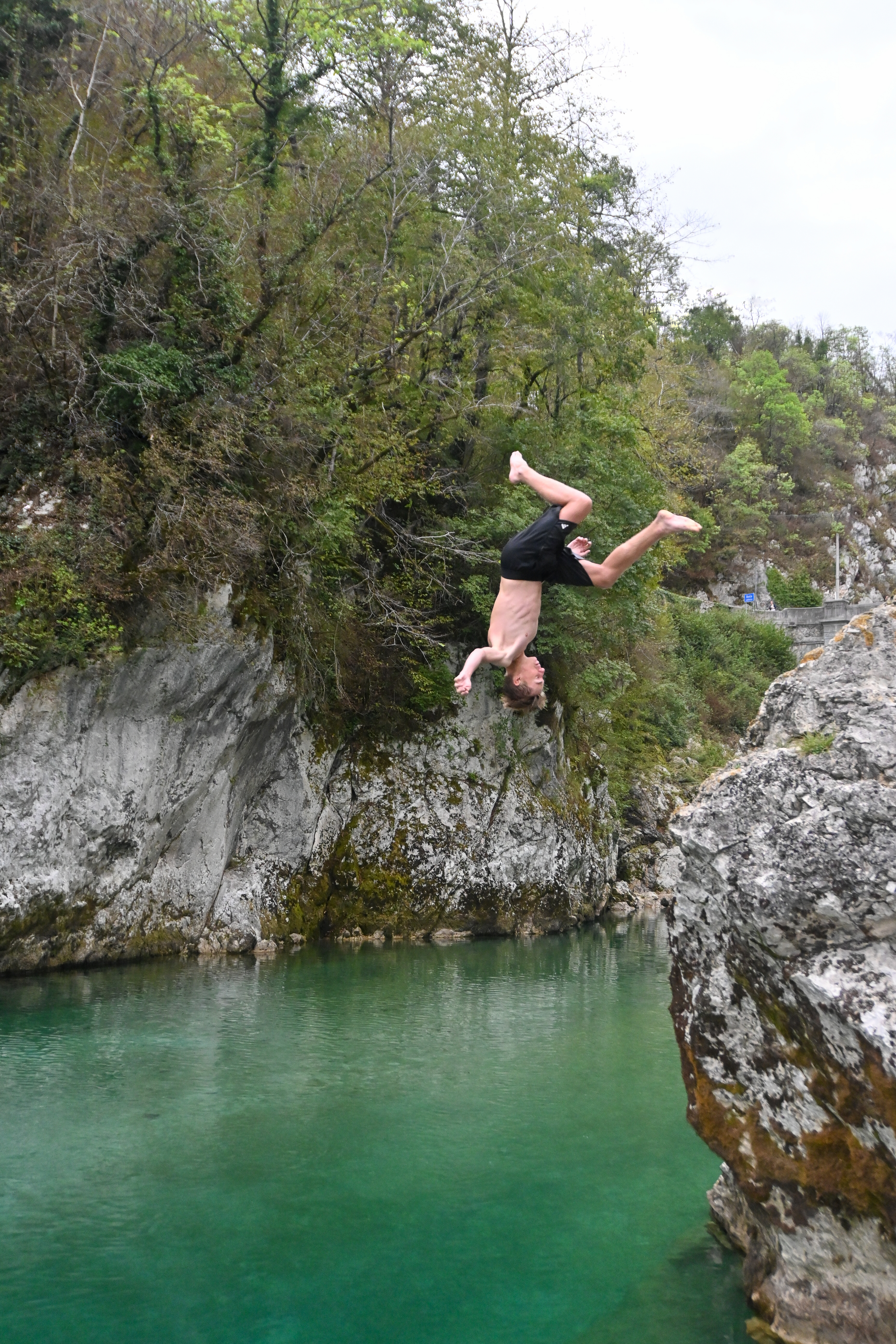
From there, we found a lovely camping spot at an informal campground next to the Gljun River.
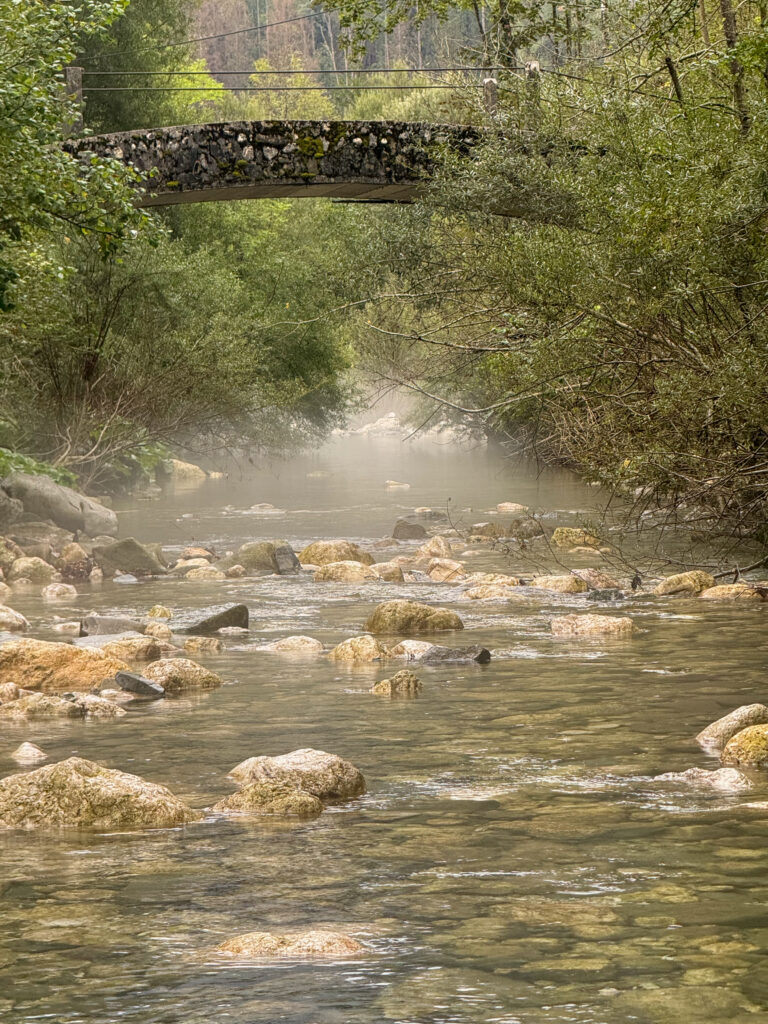
Soon after making camp, heavy rain, thunder and lightning started and continued all through the night and the next morning. It was fascinating to see how fast the river level rose. The sun came out in the afternoon and the river slowly went down but we had enjoyed some chill out time and chatting with the other campers.
The next two days were full of sunshine and adventure – and boy did we have some fun!
First up was the Virje Waterfall – a short walk from our campsite. All of the information we had read mentioned a beautiful pool at the bottom of a gentle waterfall, but as the river was still so full, we saw this massive, majestic waterfall instead!
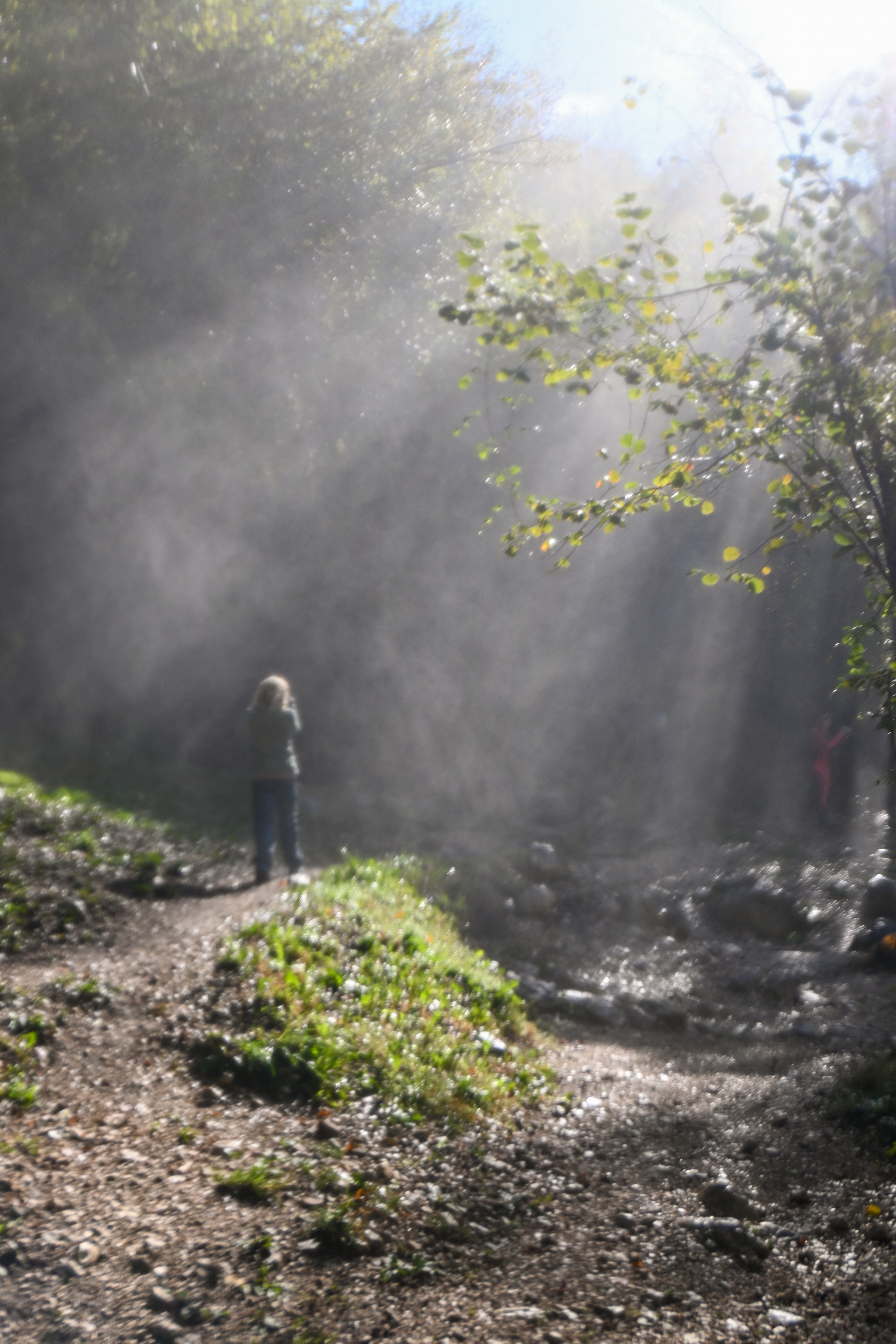
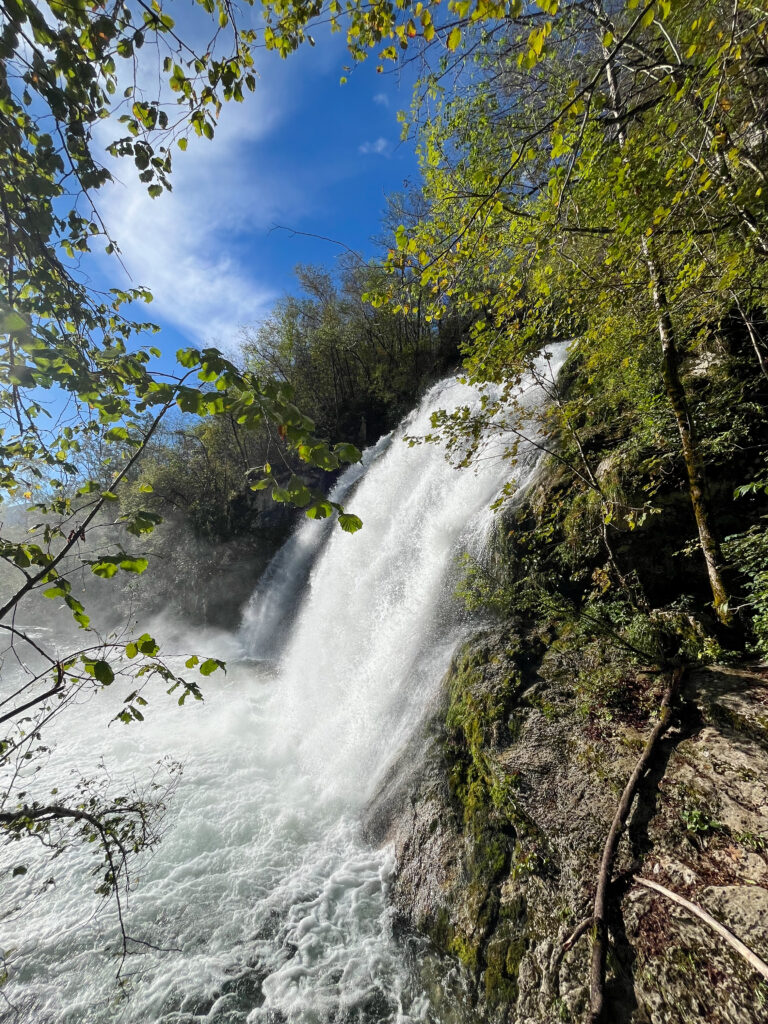
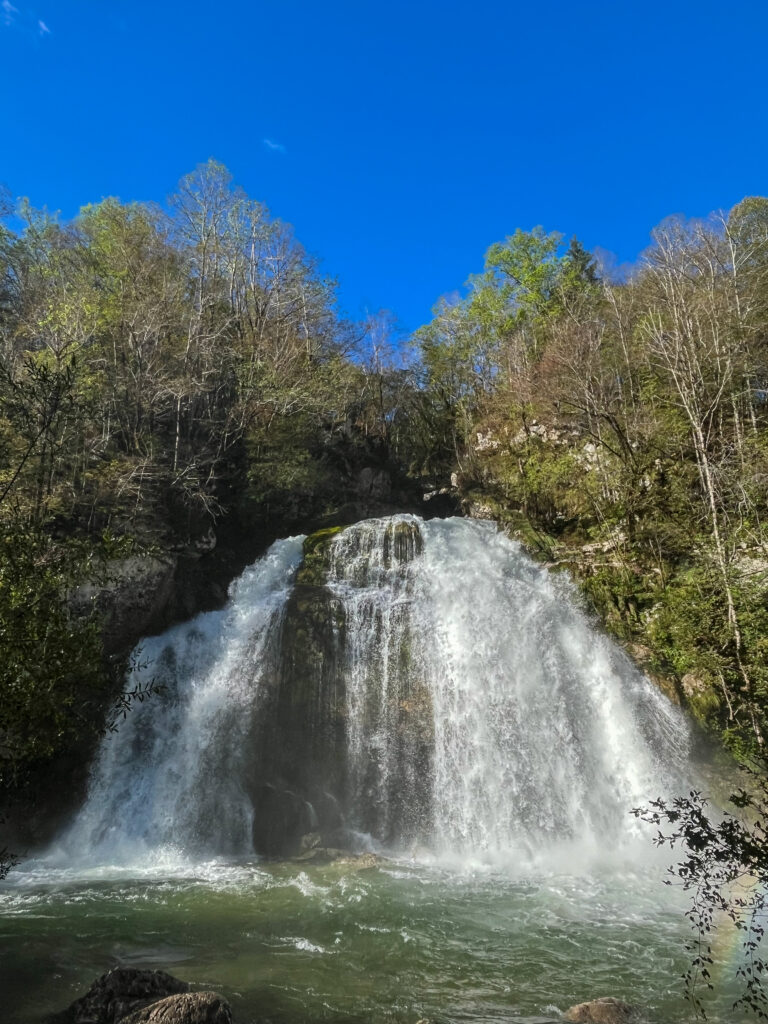
The whole area was full of water gushing throught the trees.
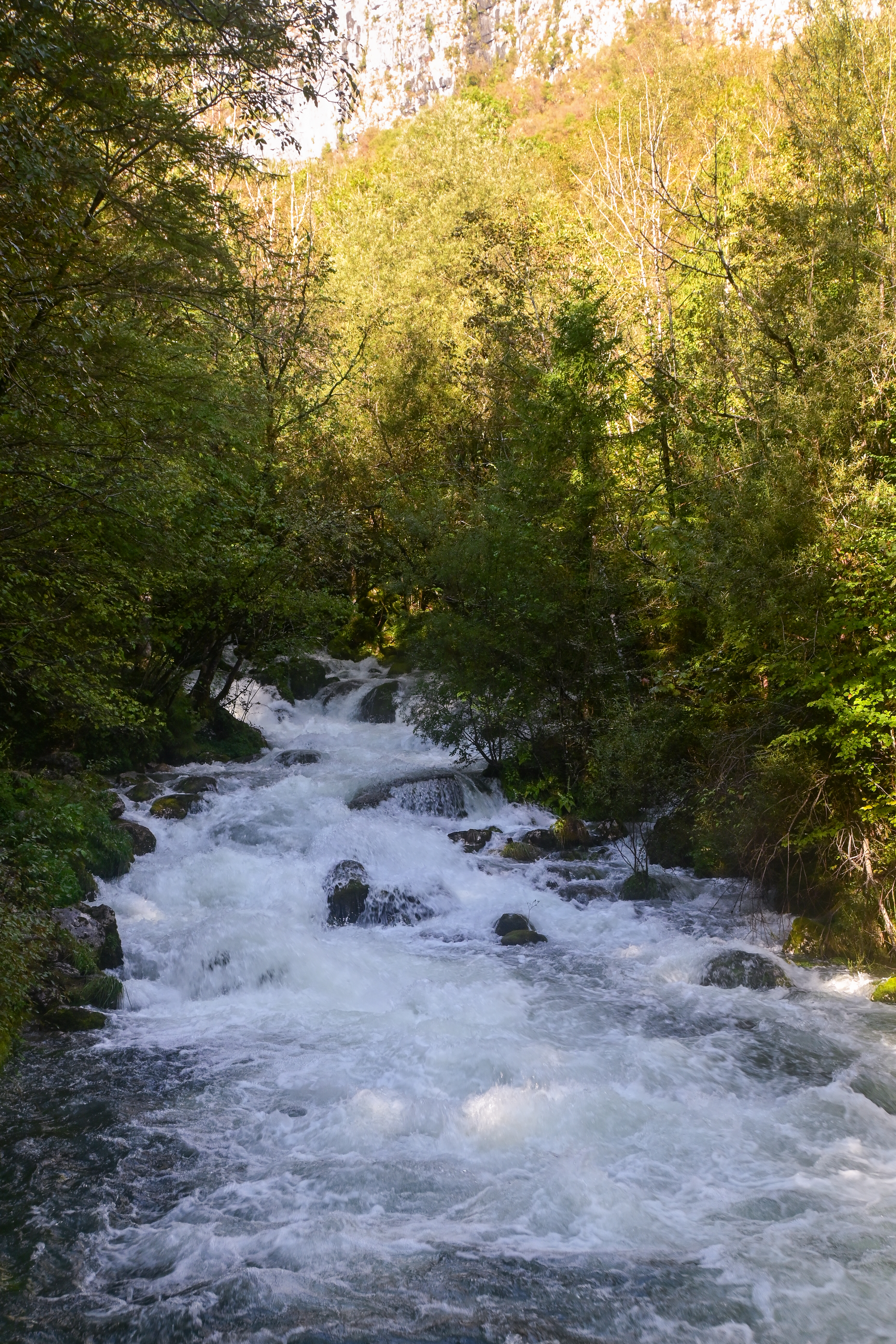
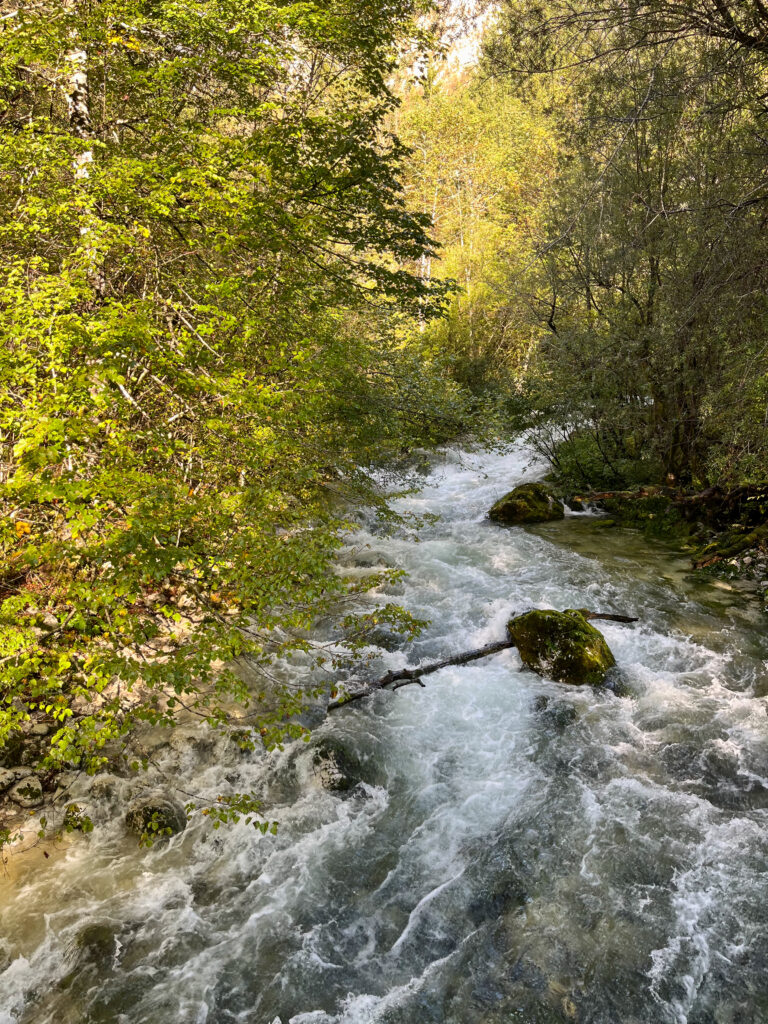
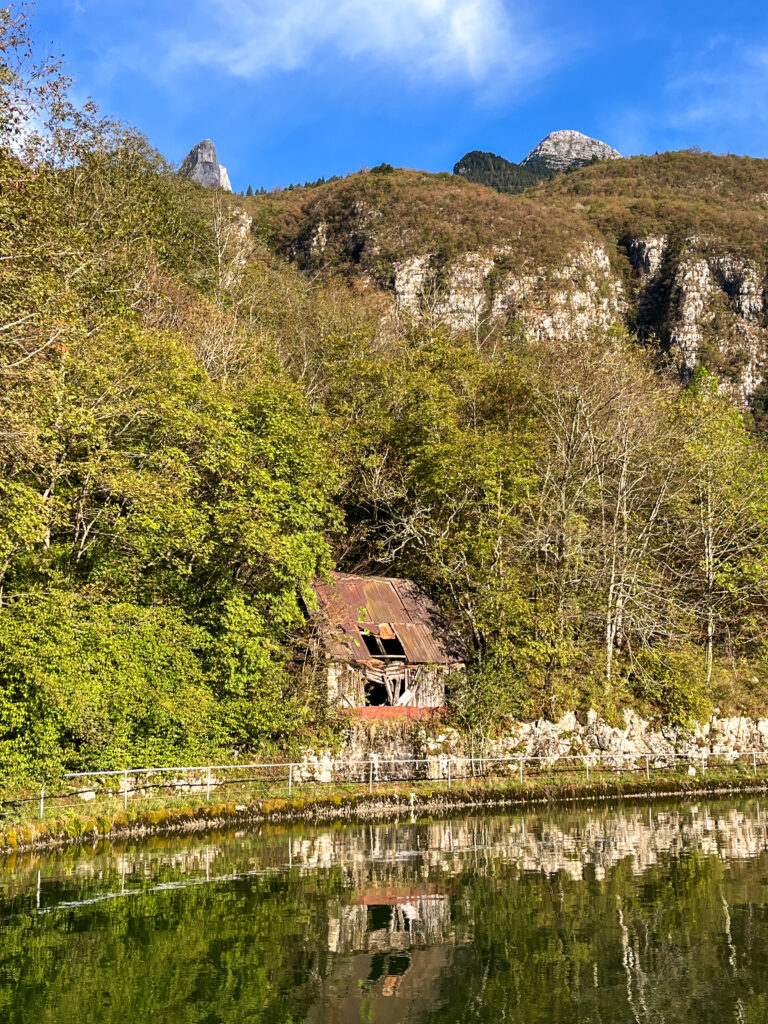

Next was ziplining! The zipline spanned across 10 different wires totalling 2 kilometres all the way down the Učja Gorge. Some of the wires were high above the river, others were through a gap in the gorge walls – all were gorgeous and super fun!
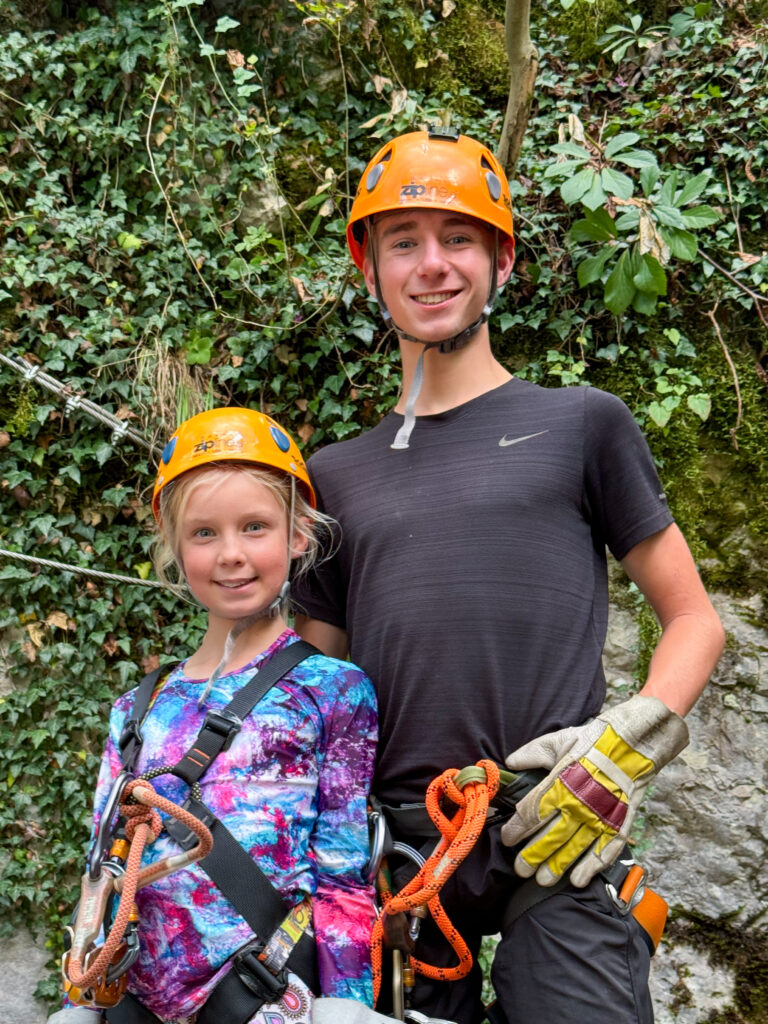
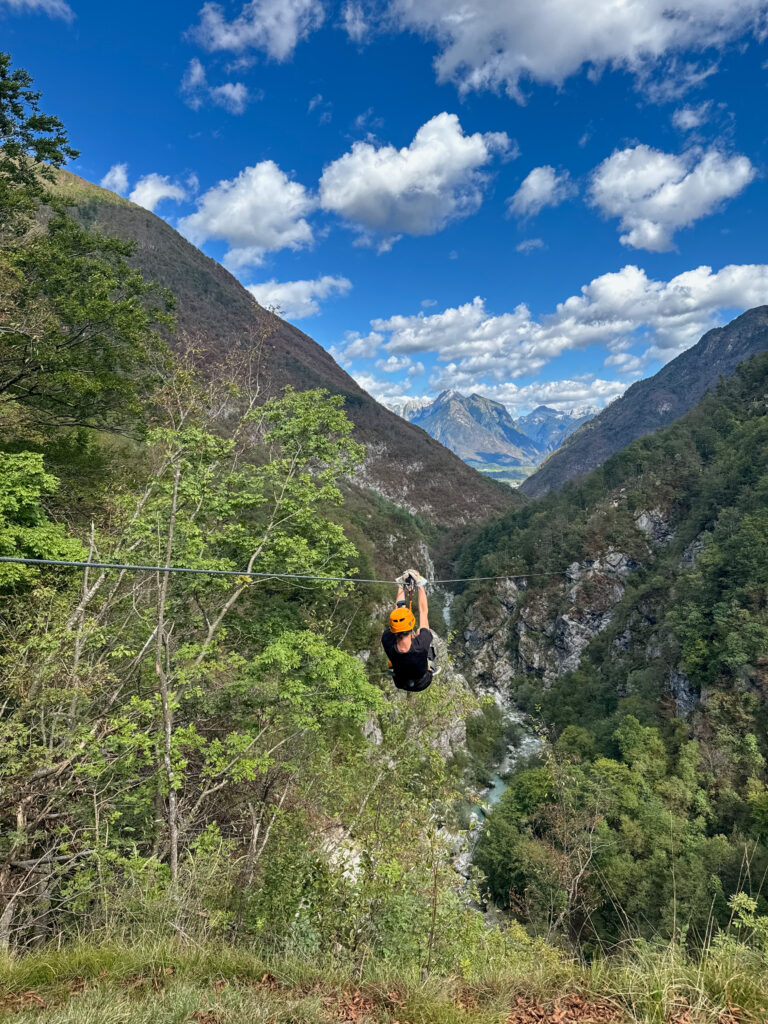
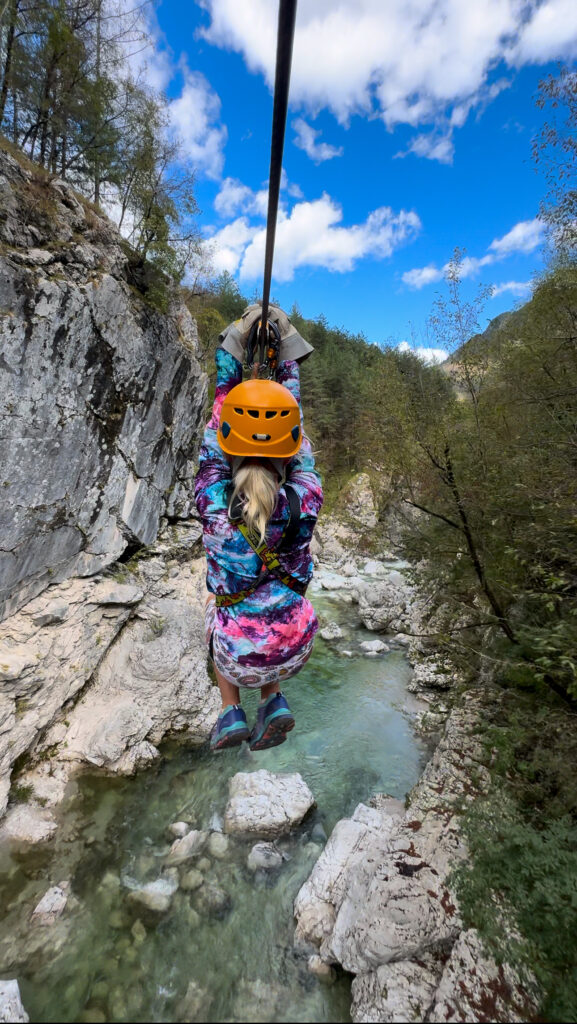
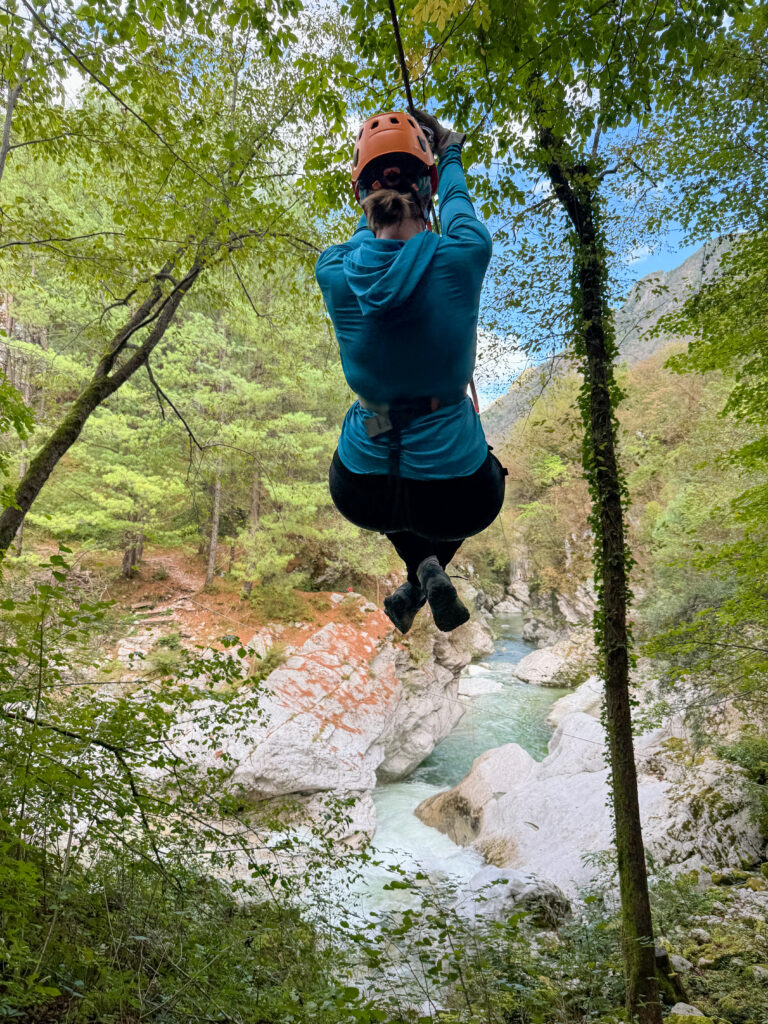
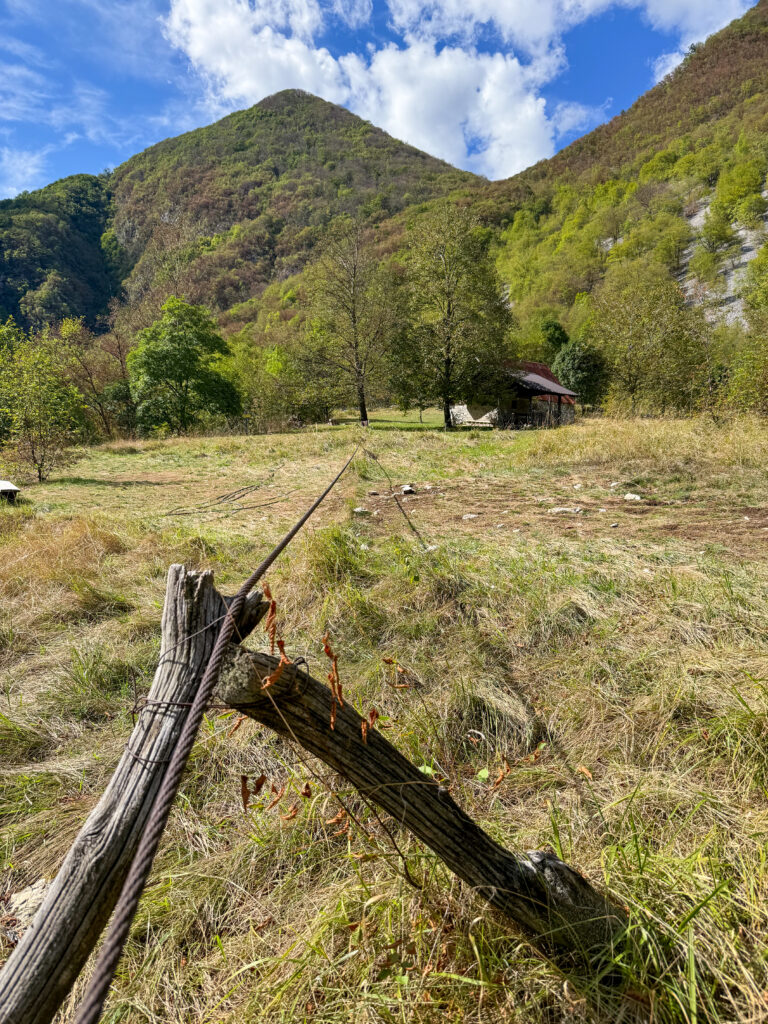
Much to the surprise of our guides, we finished off with a leap into freezing Učja River (something they usually only offer in the summer).
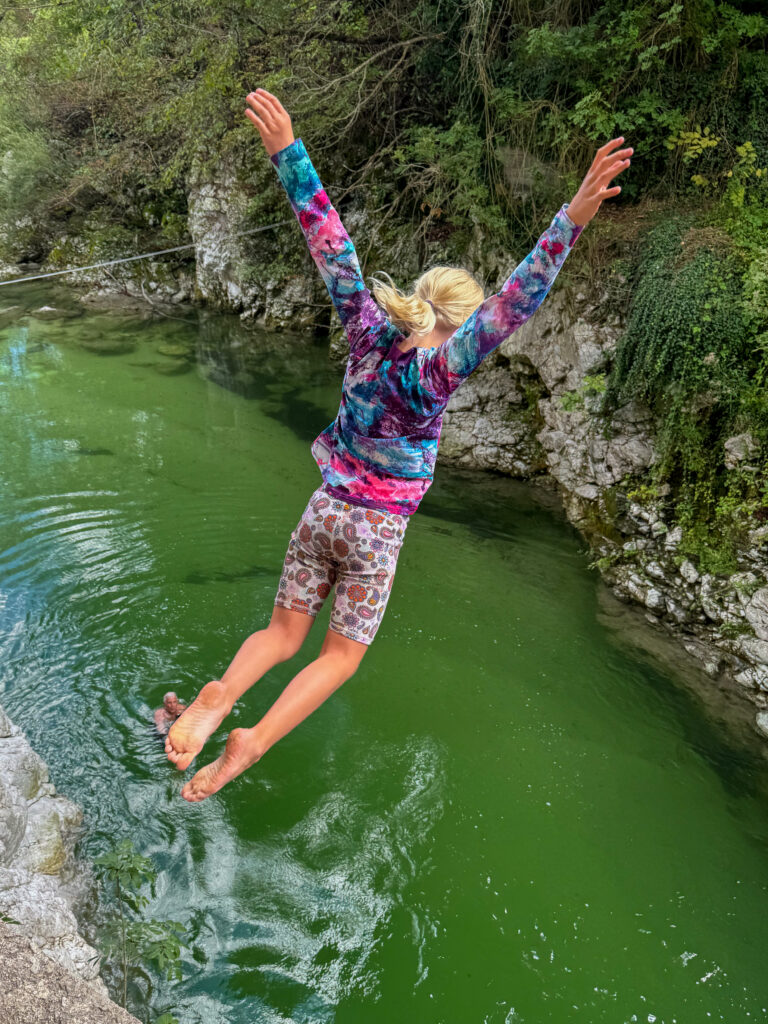
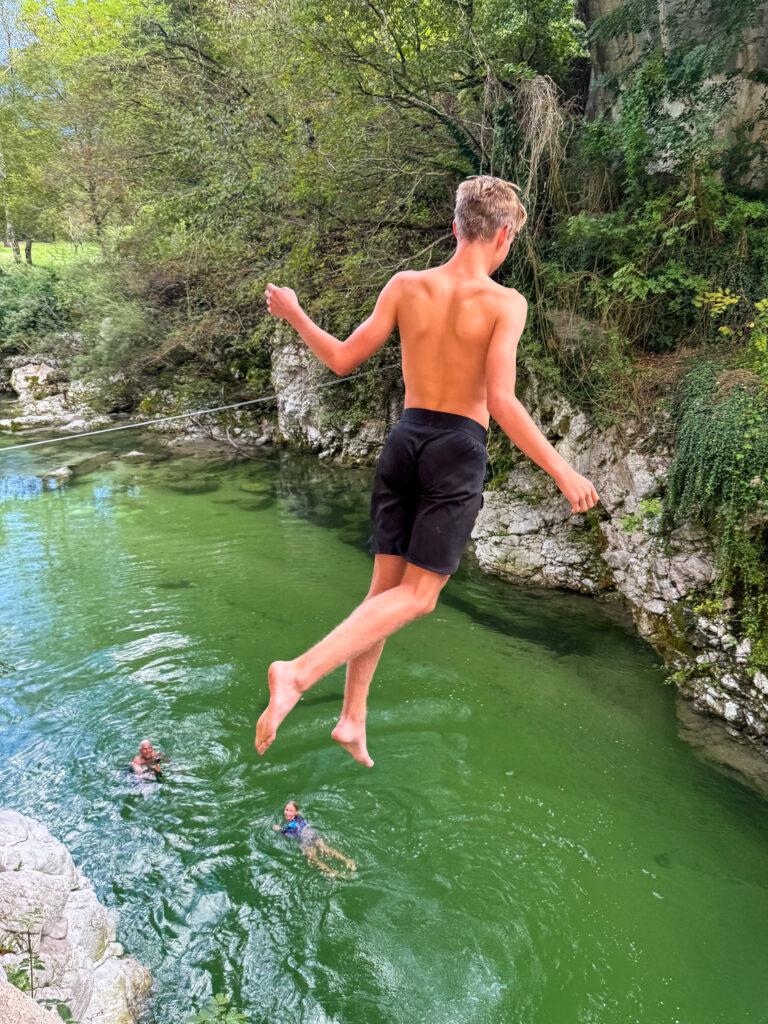
In the afternoon we walked up to Šunik Water Grove. We decided that this was definitely where fairies come to play!
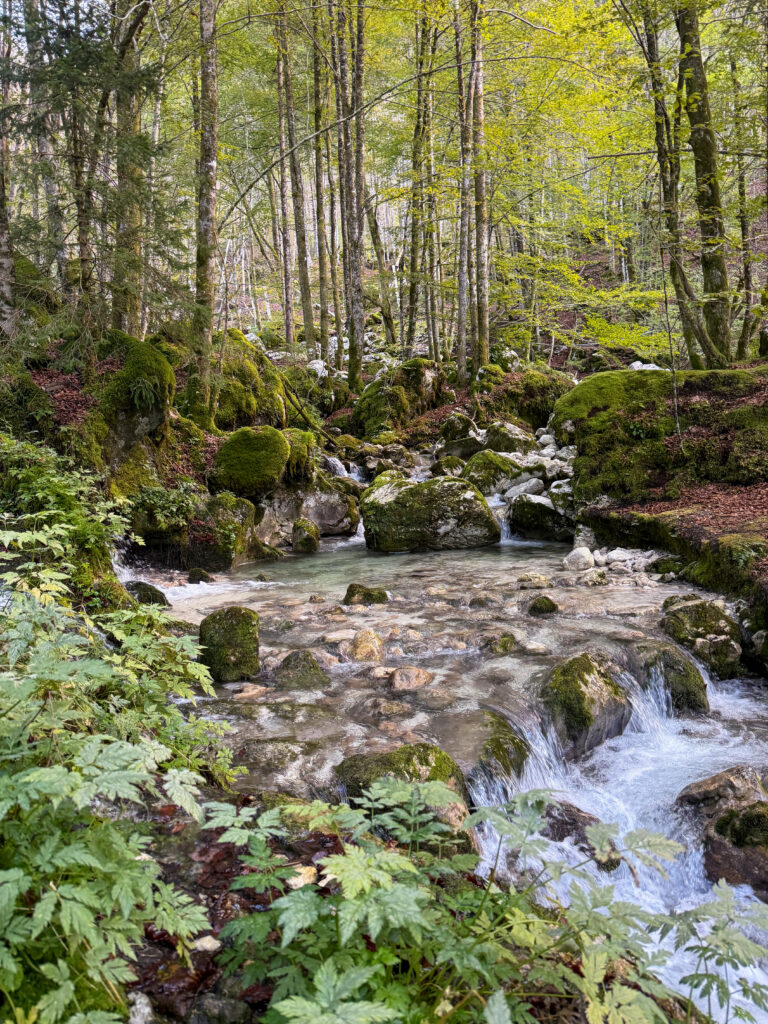
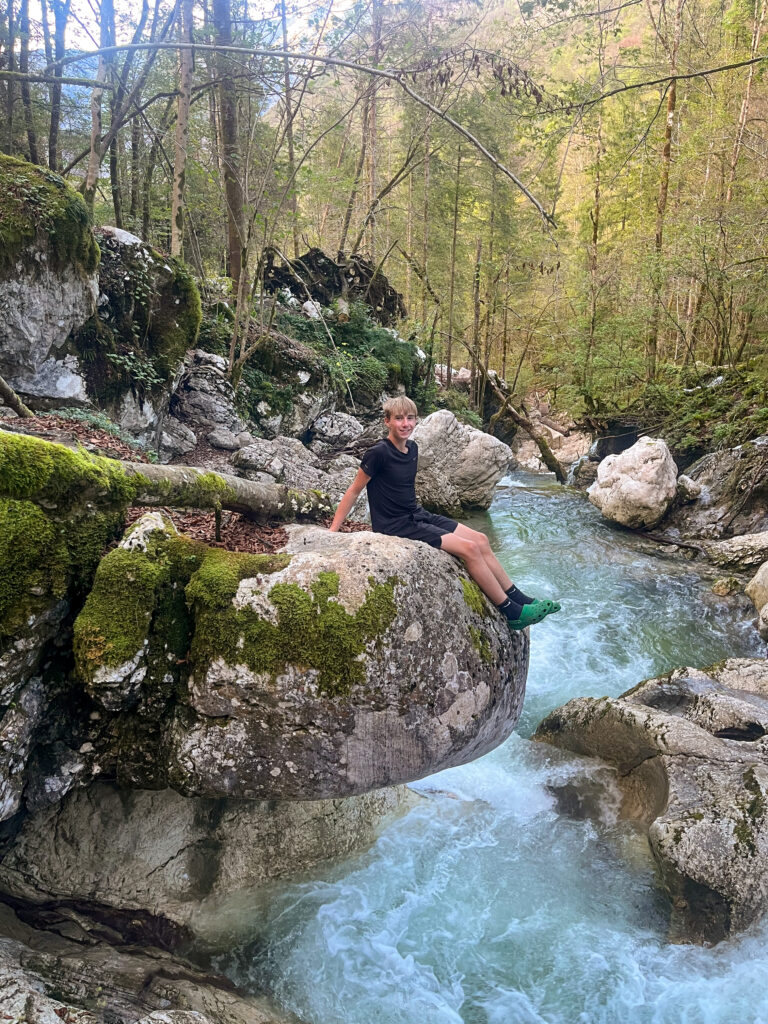

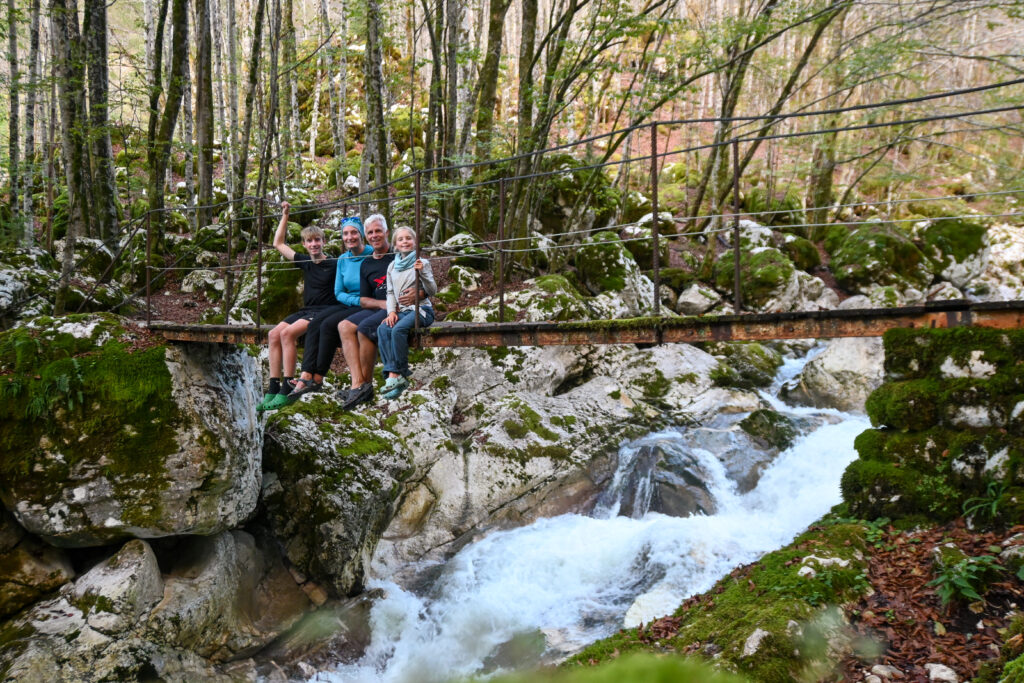
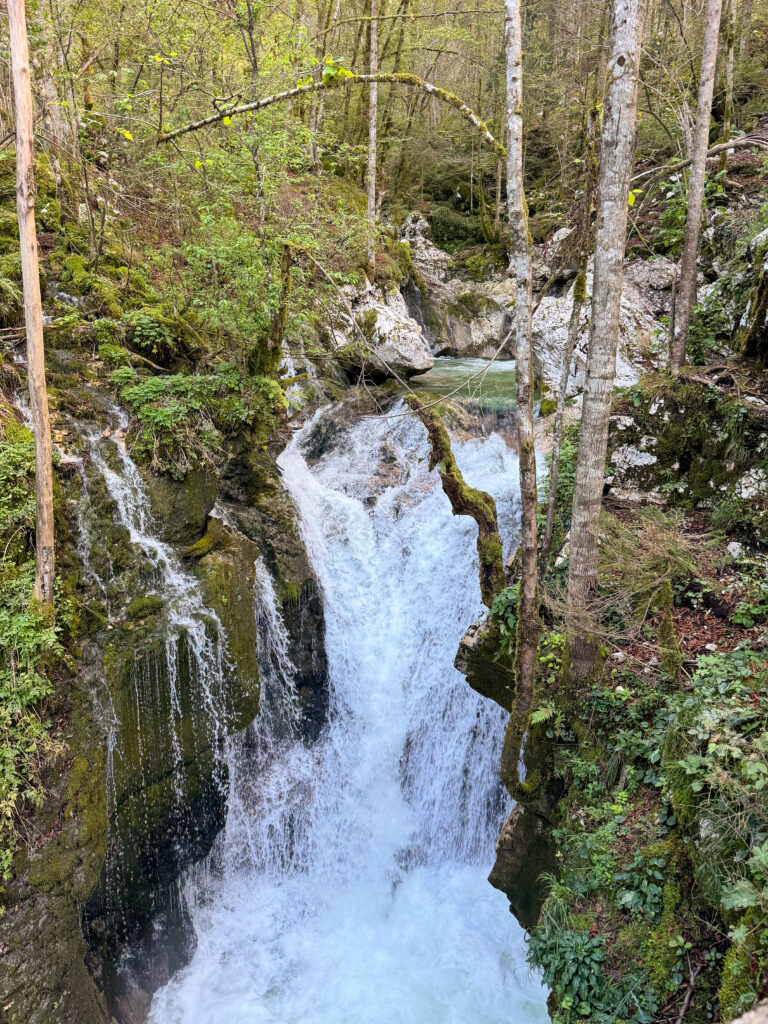
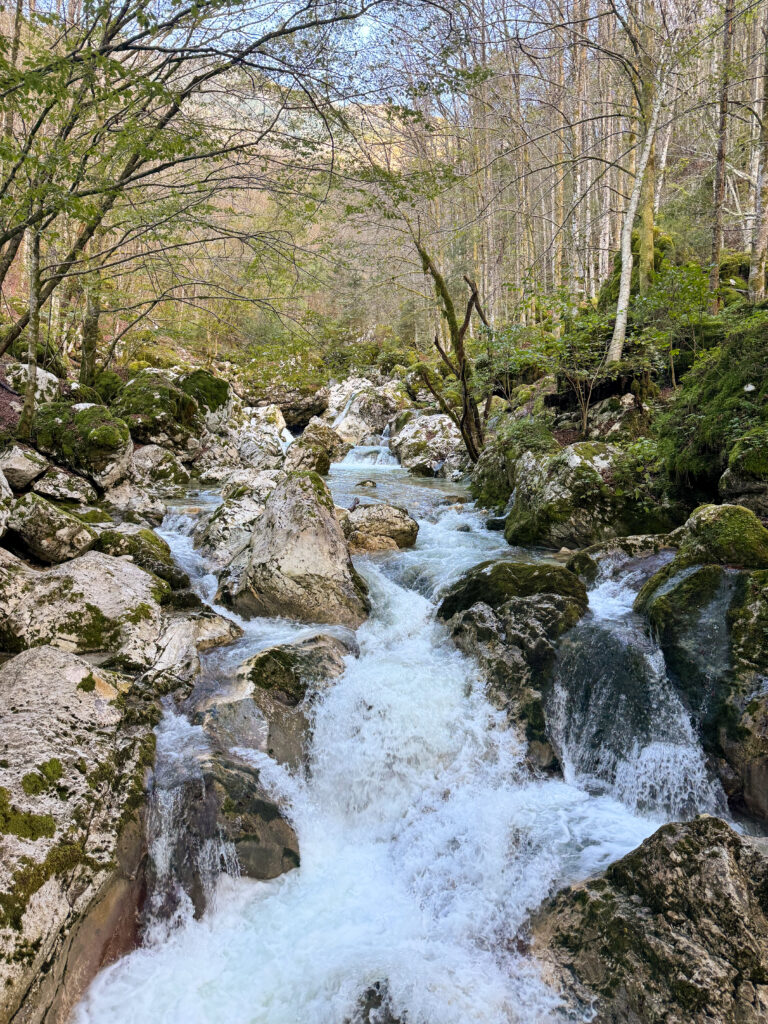
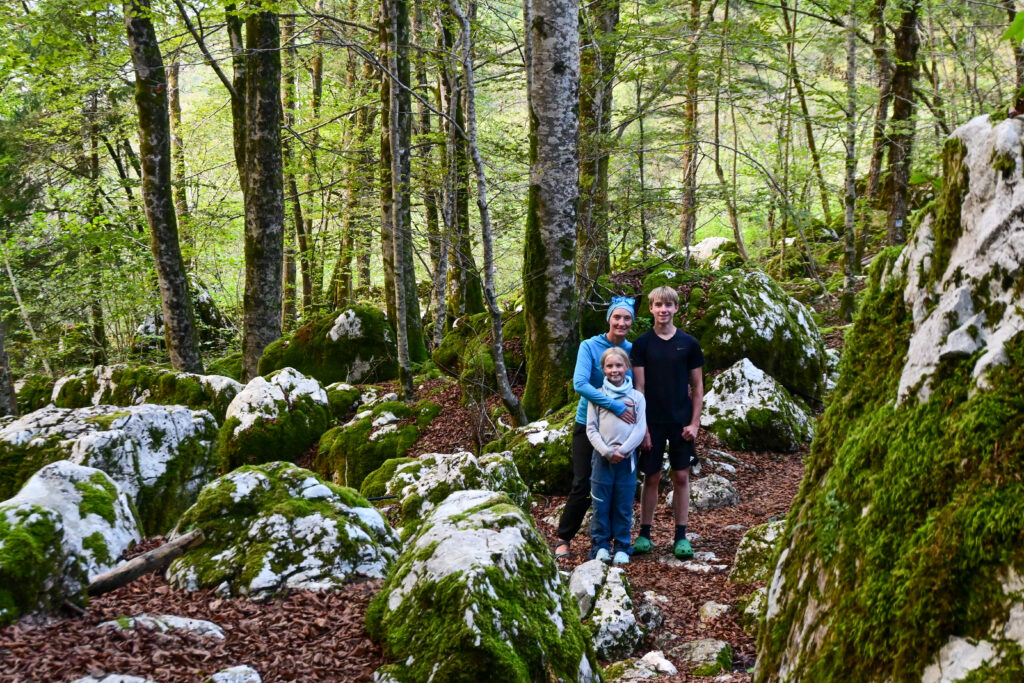
The next morning we were up early to walk to the source of the Soča River – the place where the Soča first emerges out of the ground. As we had such a wonderful time in and around the Soča, it felt good to see where this gorgeous river begins.
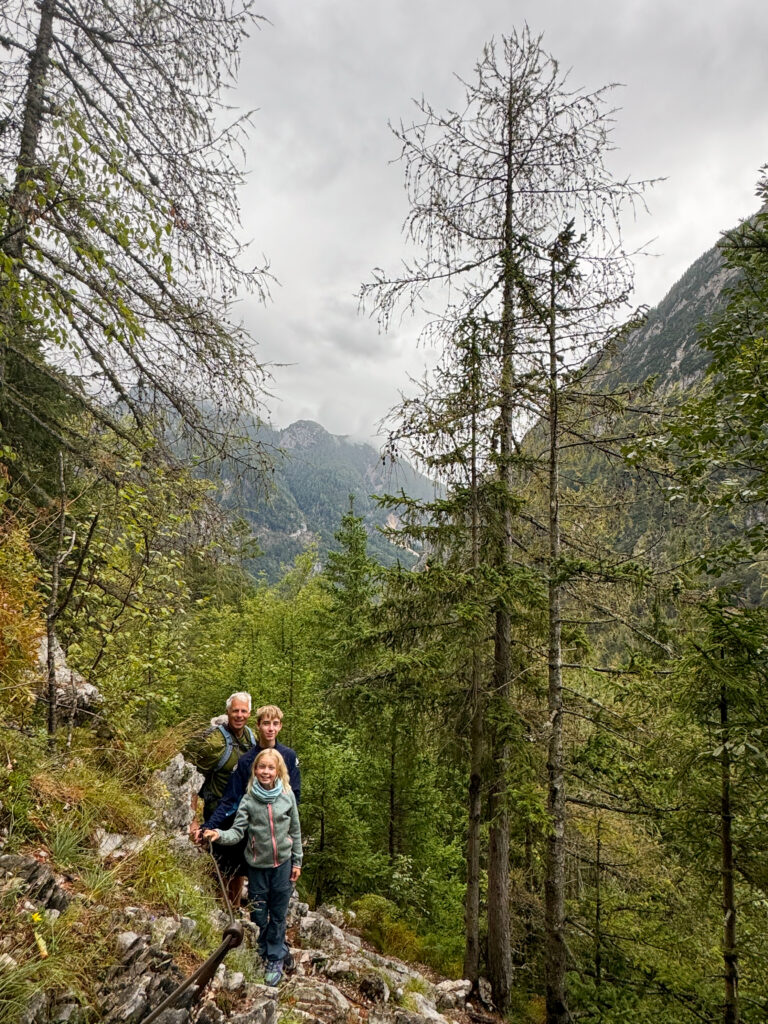
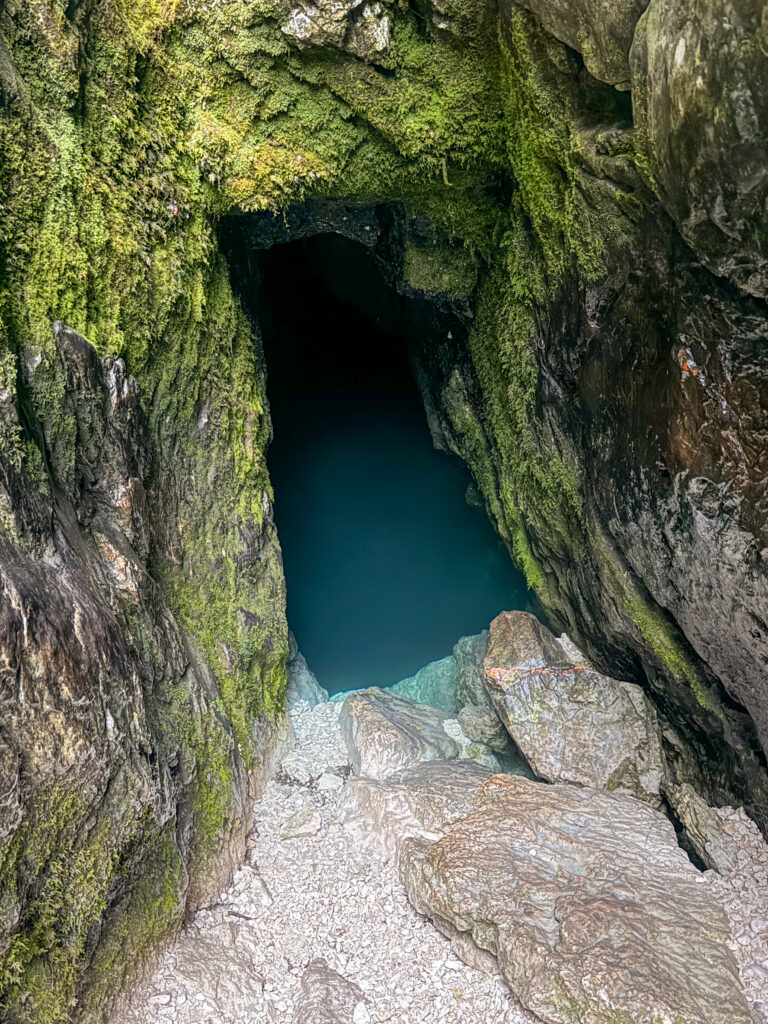
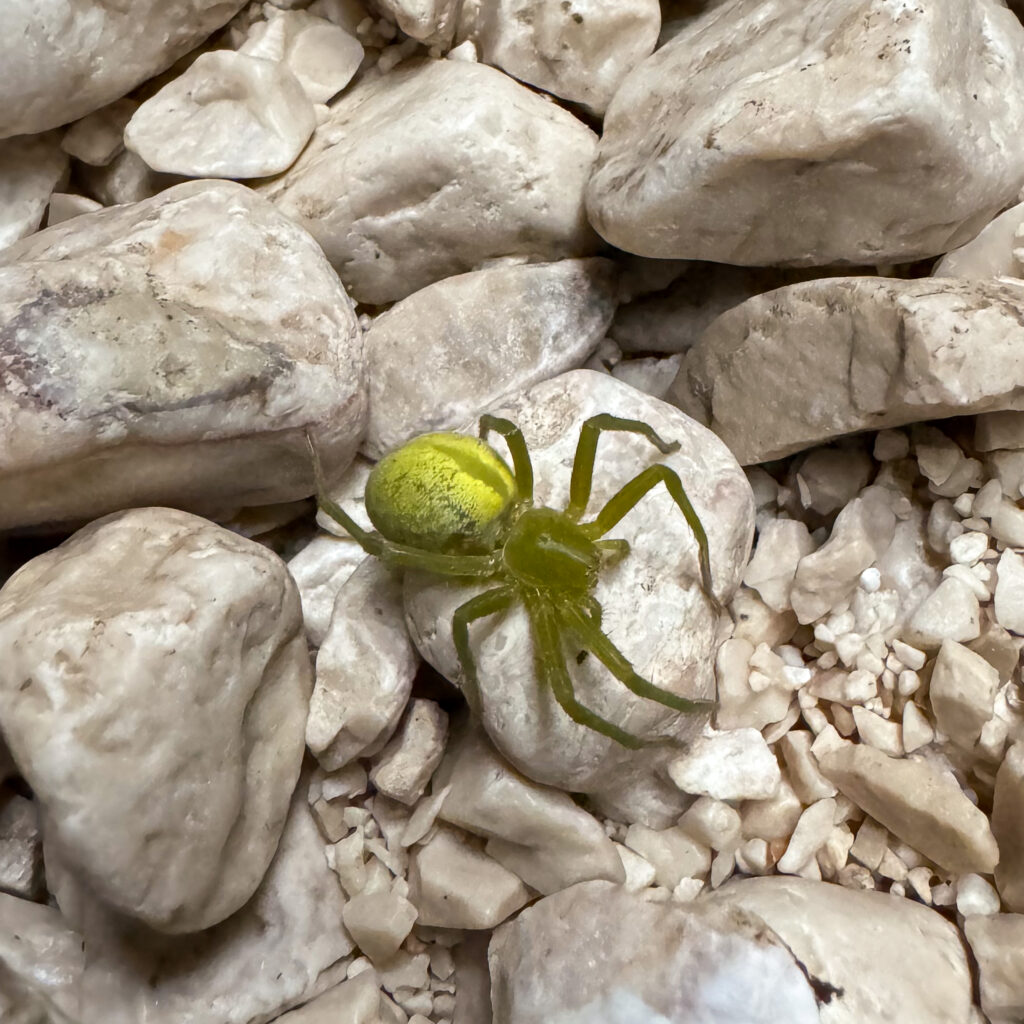
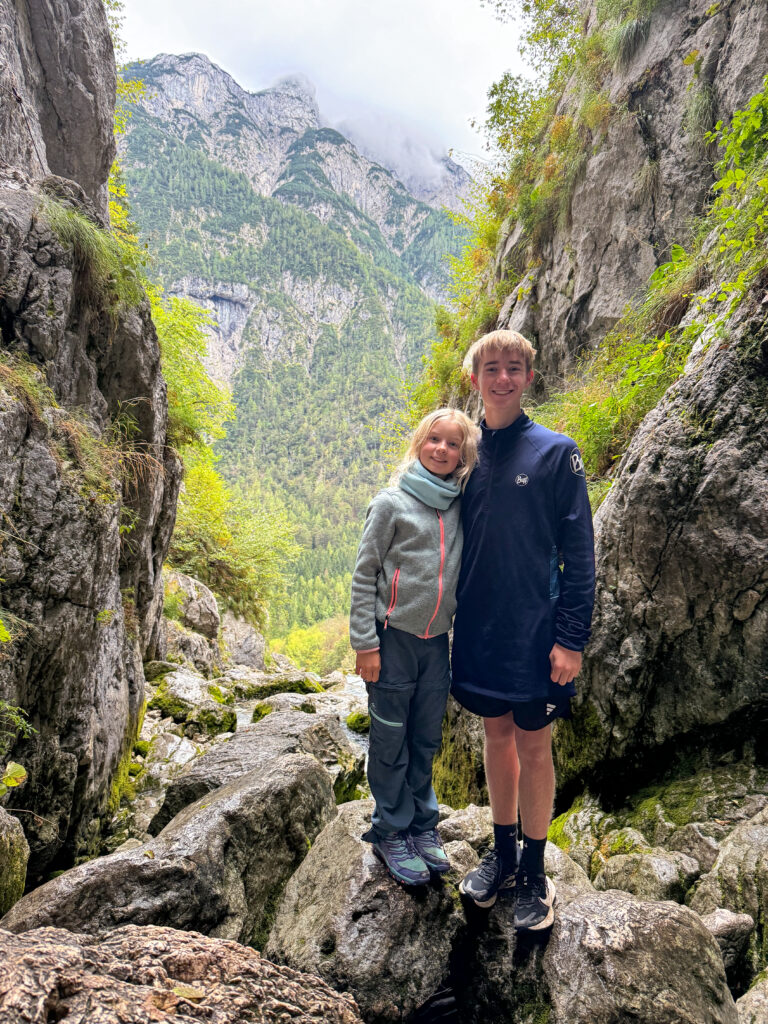
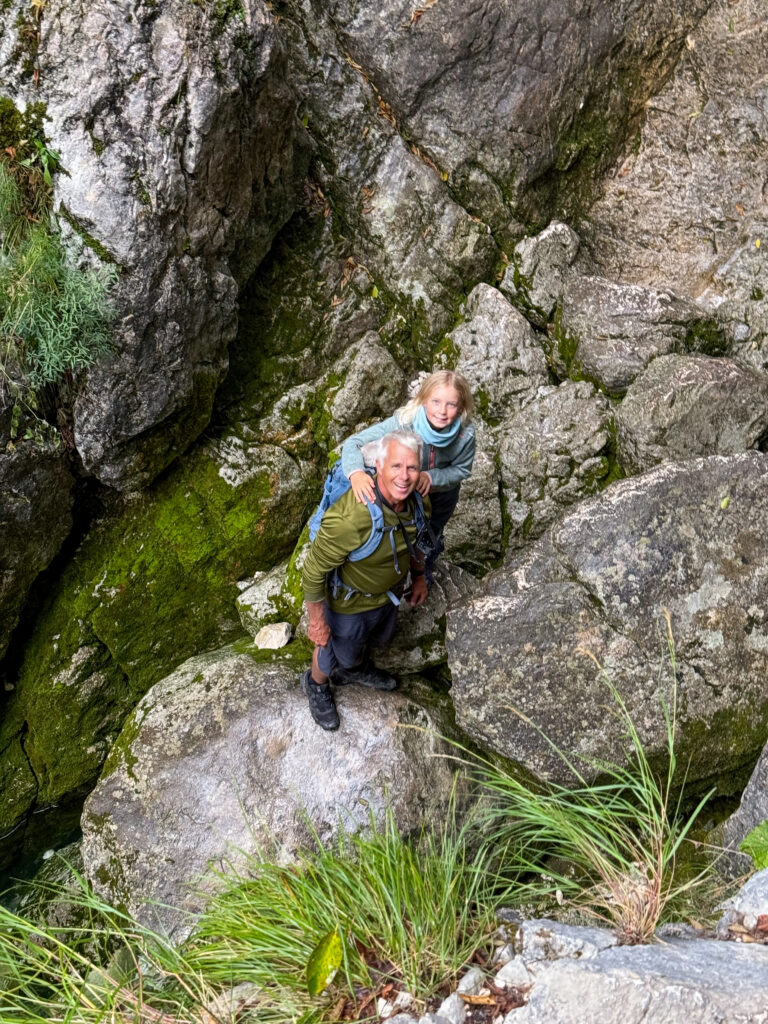
We then drove up over the Vršič Pass into the clouds – a road built by Russian prisoners of war with 50 hairpin turns (24 on the way up and 26 on the way down!). I found it amusing that every hairpin was labelled with a large blue sign and proceeded to call out each one but the kids soon told me to be quiet as it apparently wasn’t nearly as funny as I thought it was! The signs at the top say you can see for miles and miles at all the surrounding peaks of the Julian Alps – we could hardly see our hands in front of our faces!
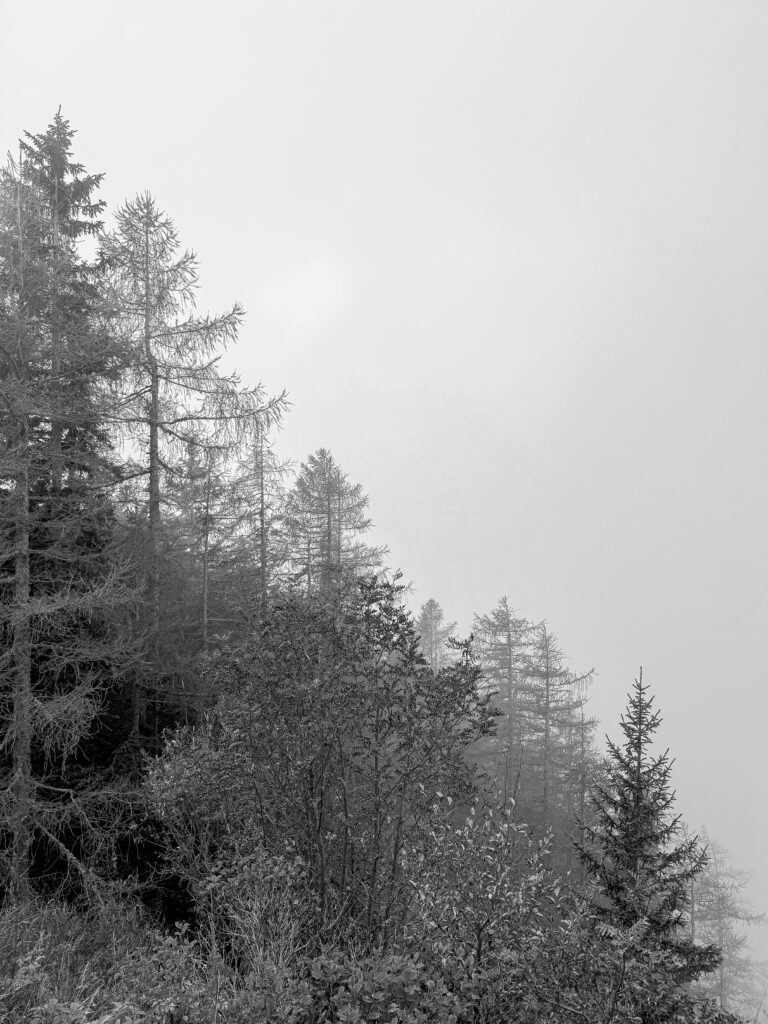
We loved climbing via ferrata in Andorra but the kids really wanted to have another go when it wasn’t raining so we’d been looking for other places we could do it without a guide. The village of Mojstrana over the Vršič Pass seemed just the right place.
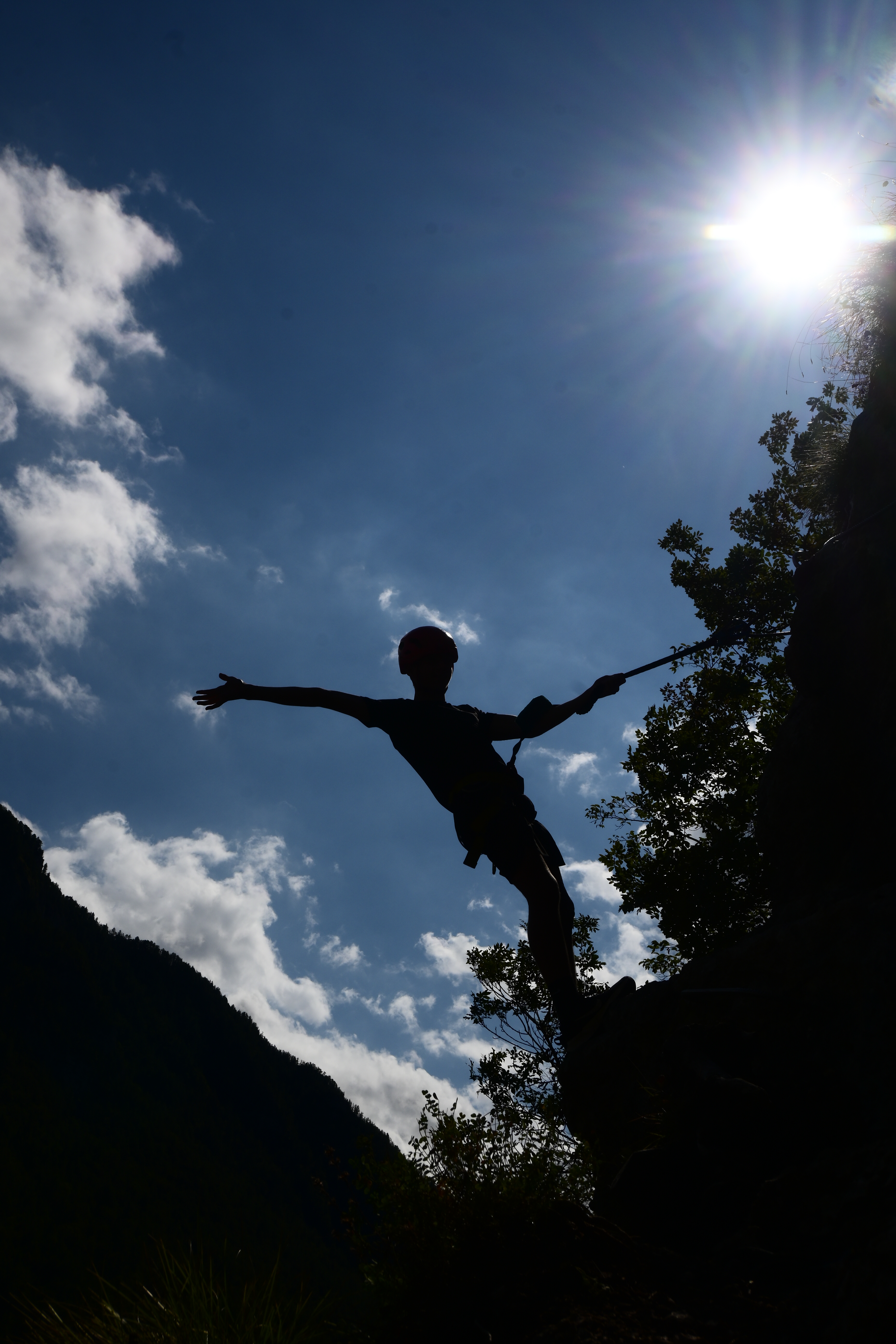
We climbed up two different routes that each took us about two hours to complete, plus 30 minutes each to walk back down through the forest, and both were absolutely beautiful! The first one was up a cliff above the village and, other than a tricky start, was pretty straight forward.
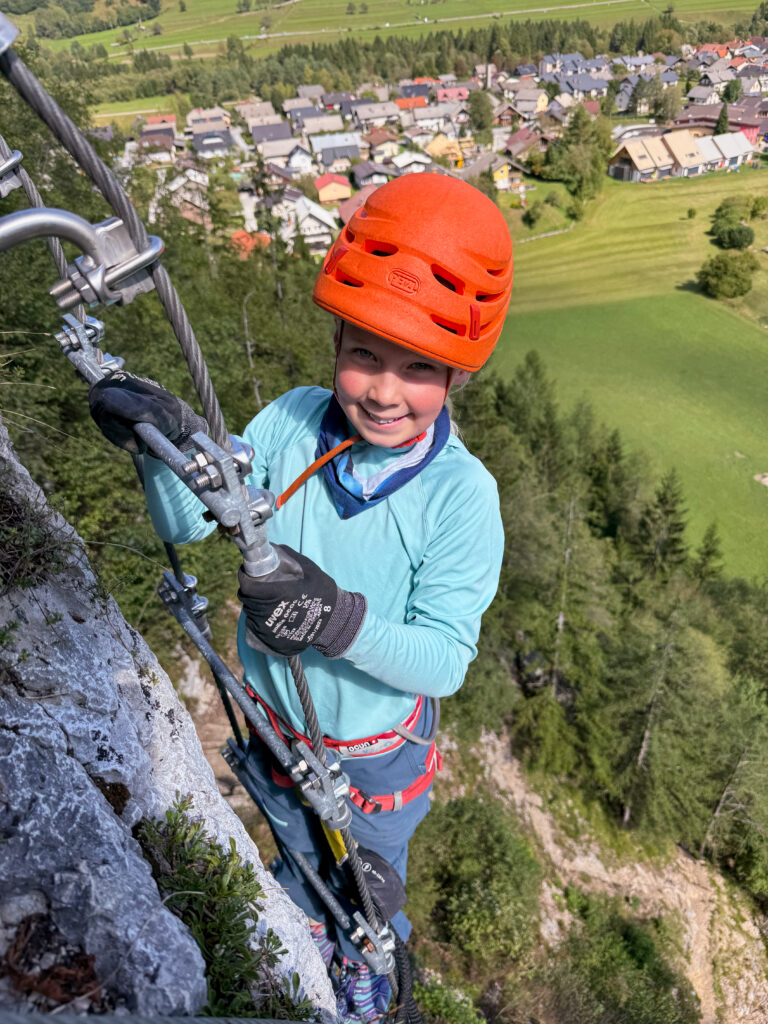
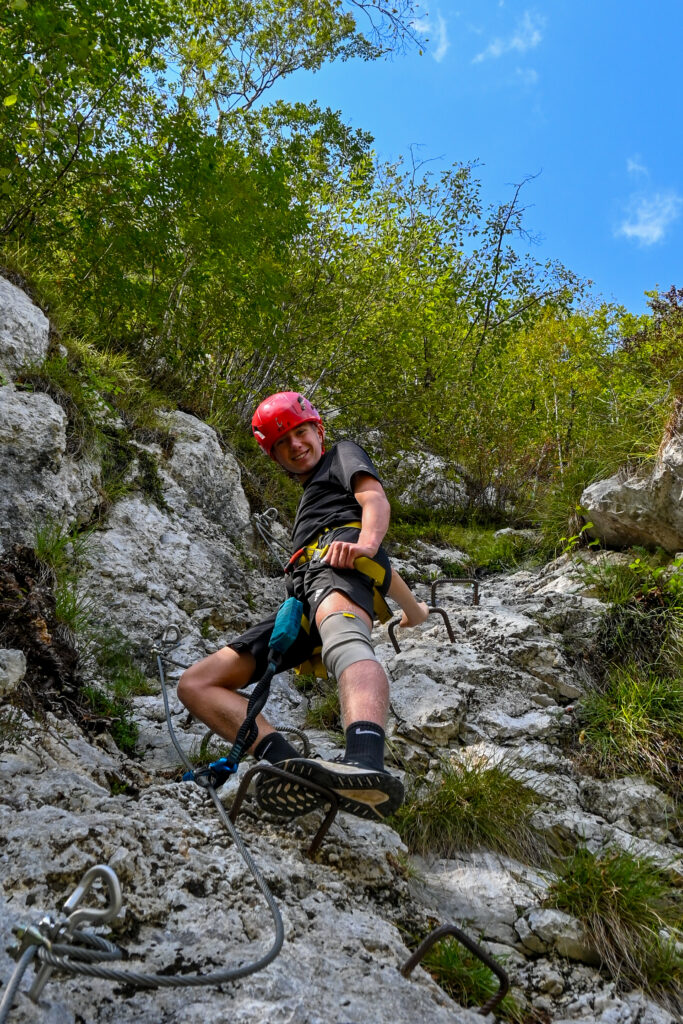

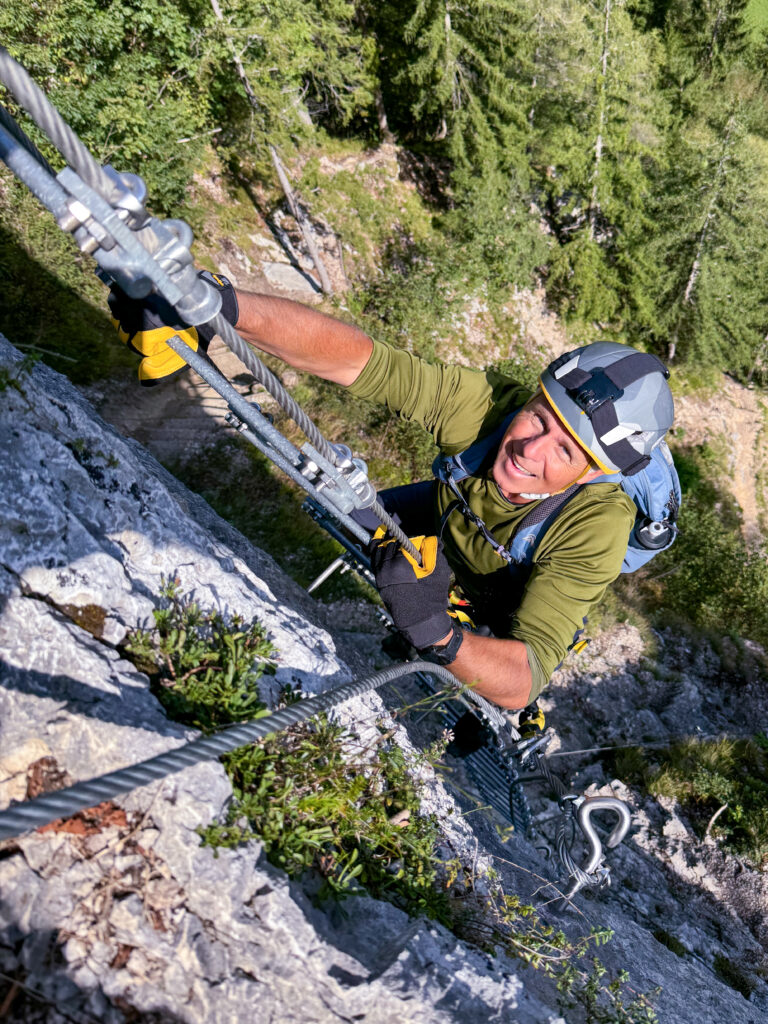
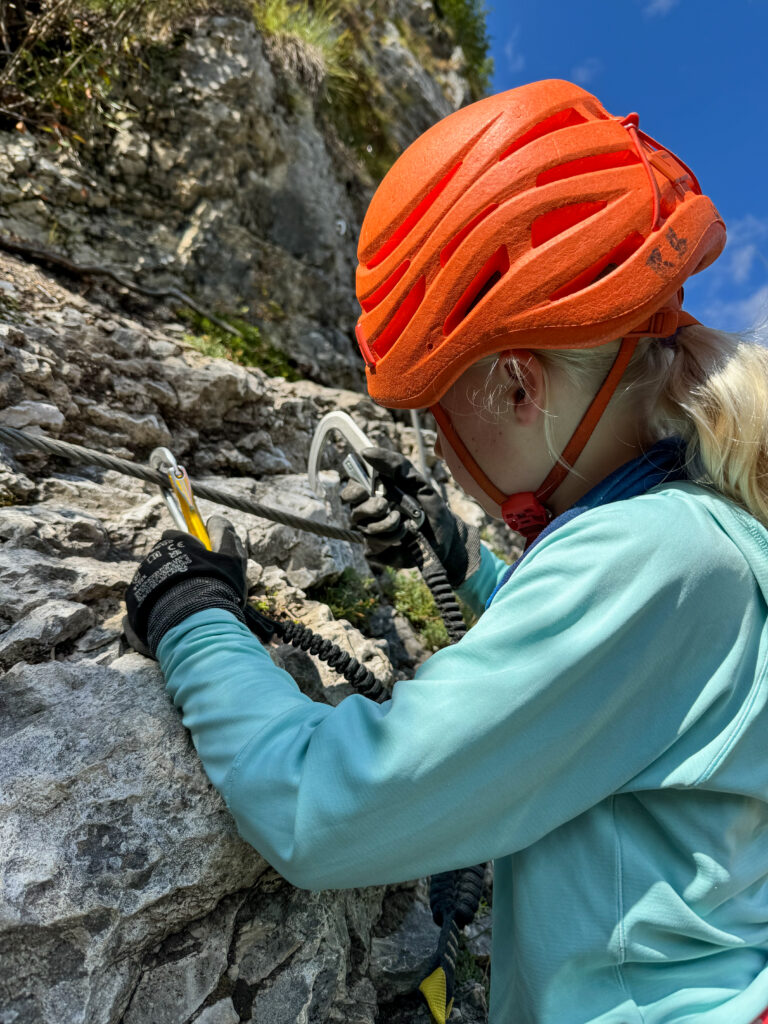
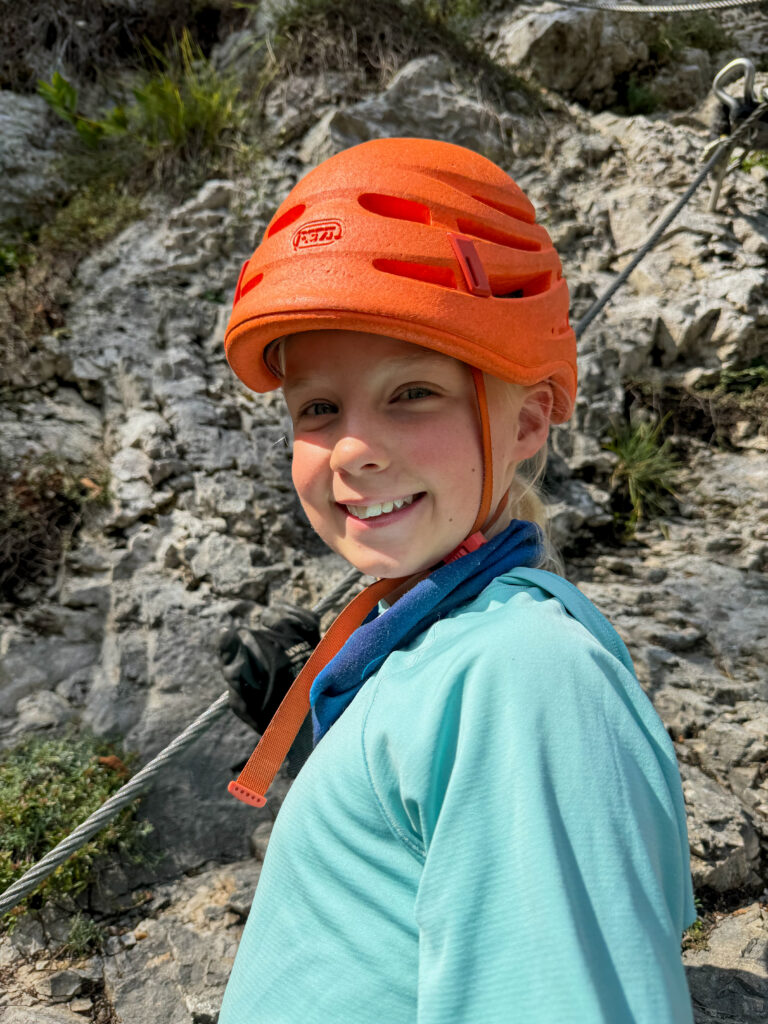
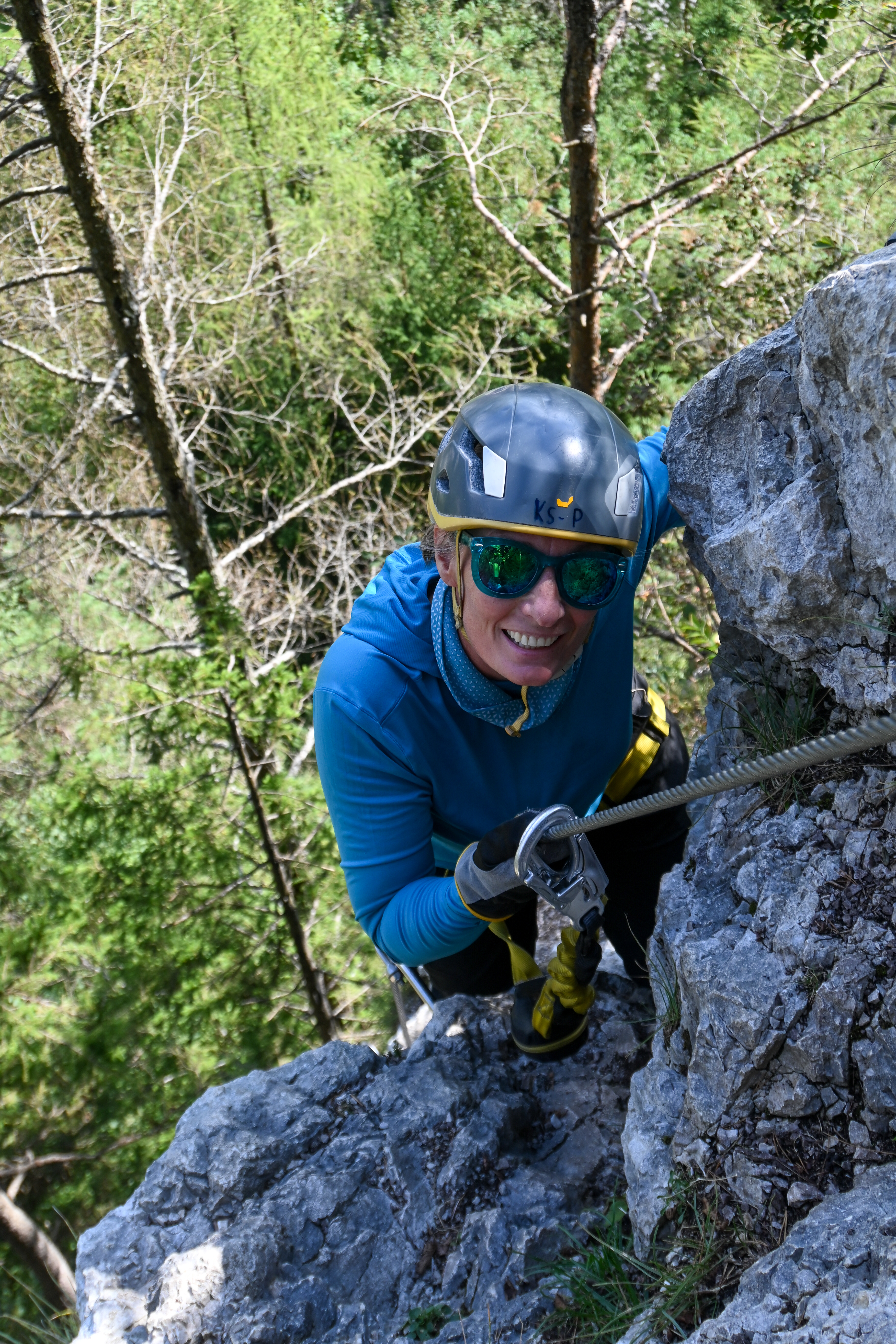
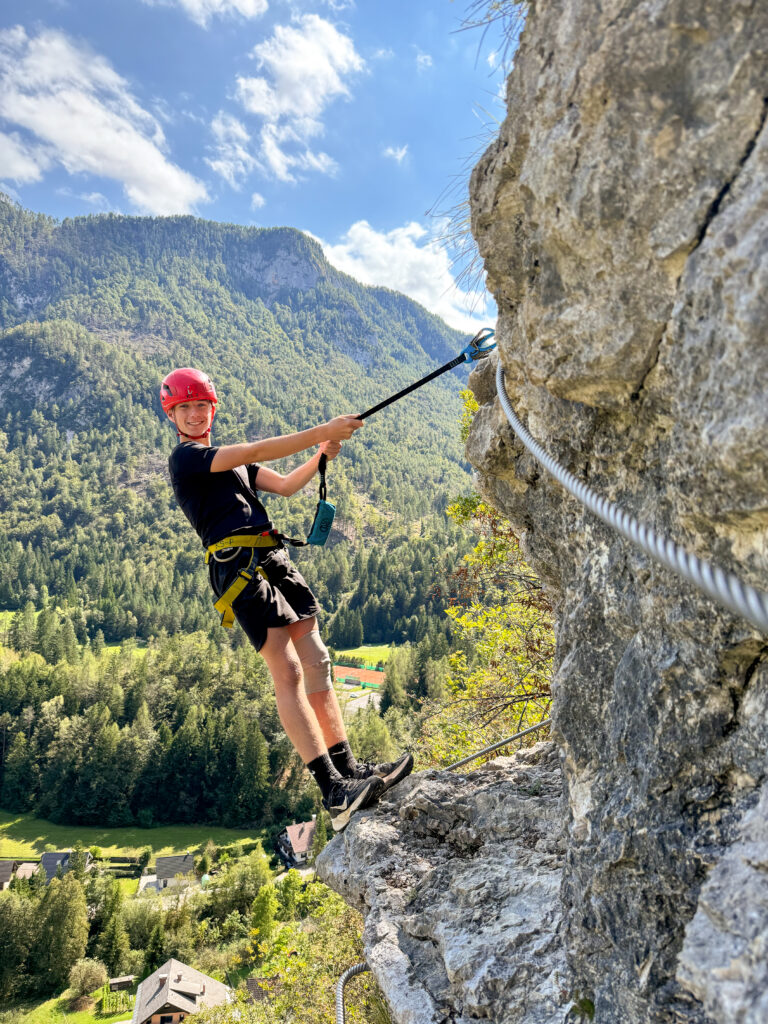
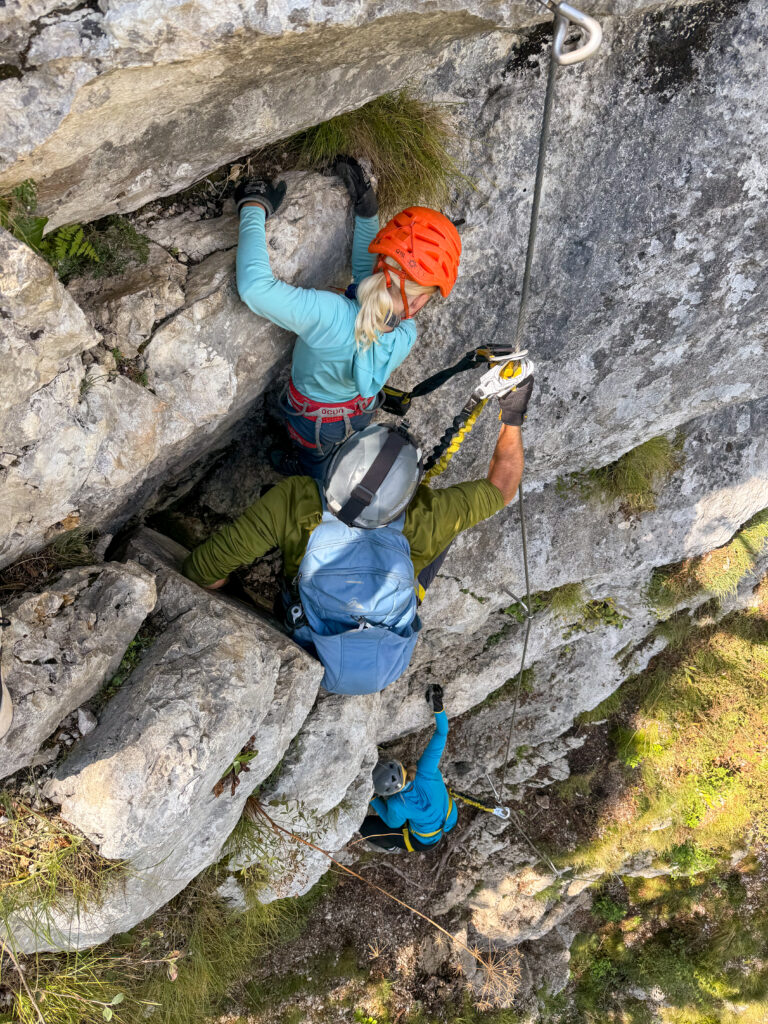
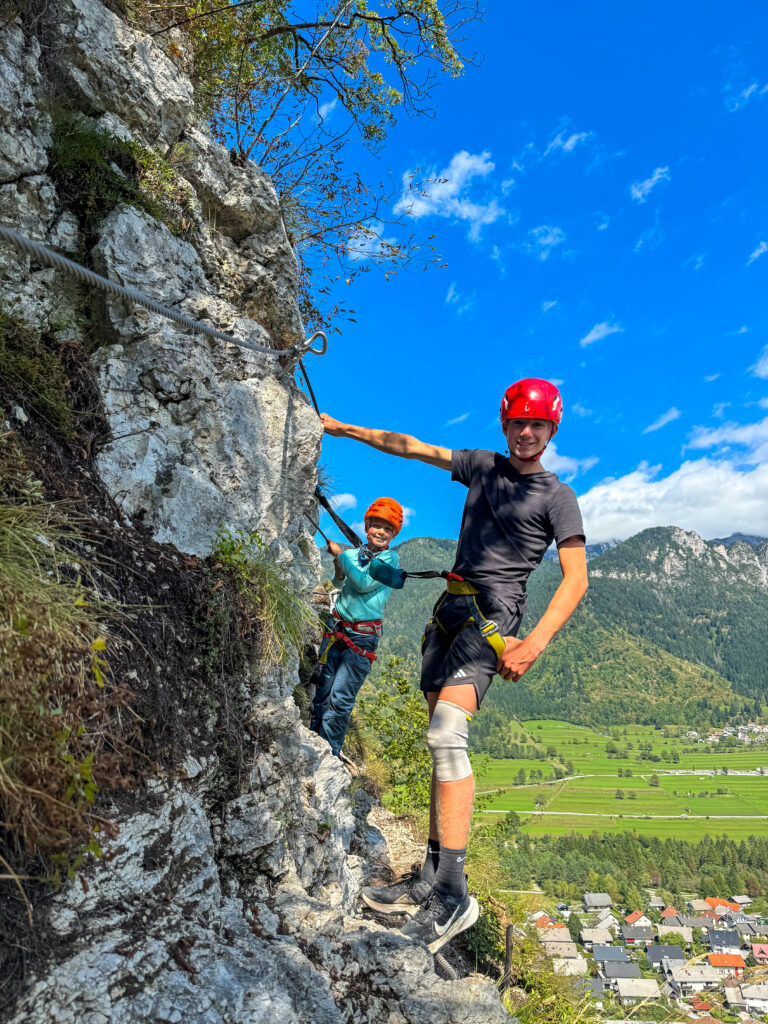
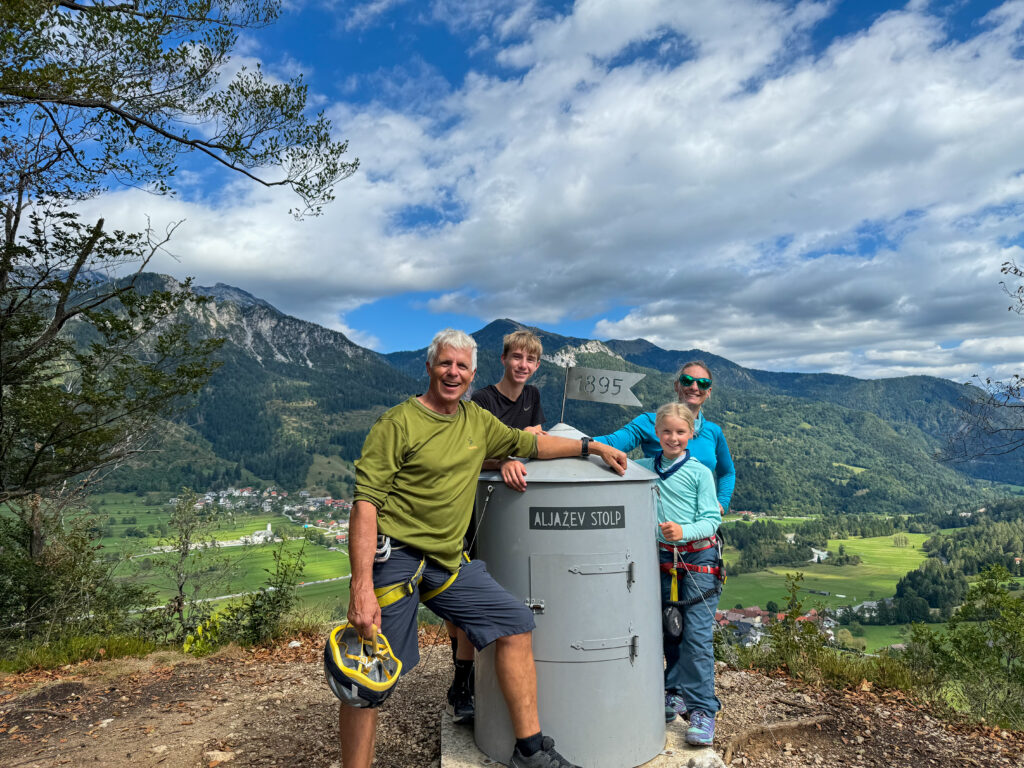
The second was up the gorge of the Hvadnik River and pushed us really hard, particularly due to the heavy rain in the previous days making the river higher and the rocks extremely slippery. We crossed the river seven times, often by a 2 or 3 wire bridge. There are no photos of the really tricky bits but as always, the kids were phenomenal!
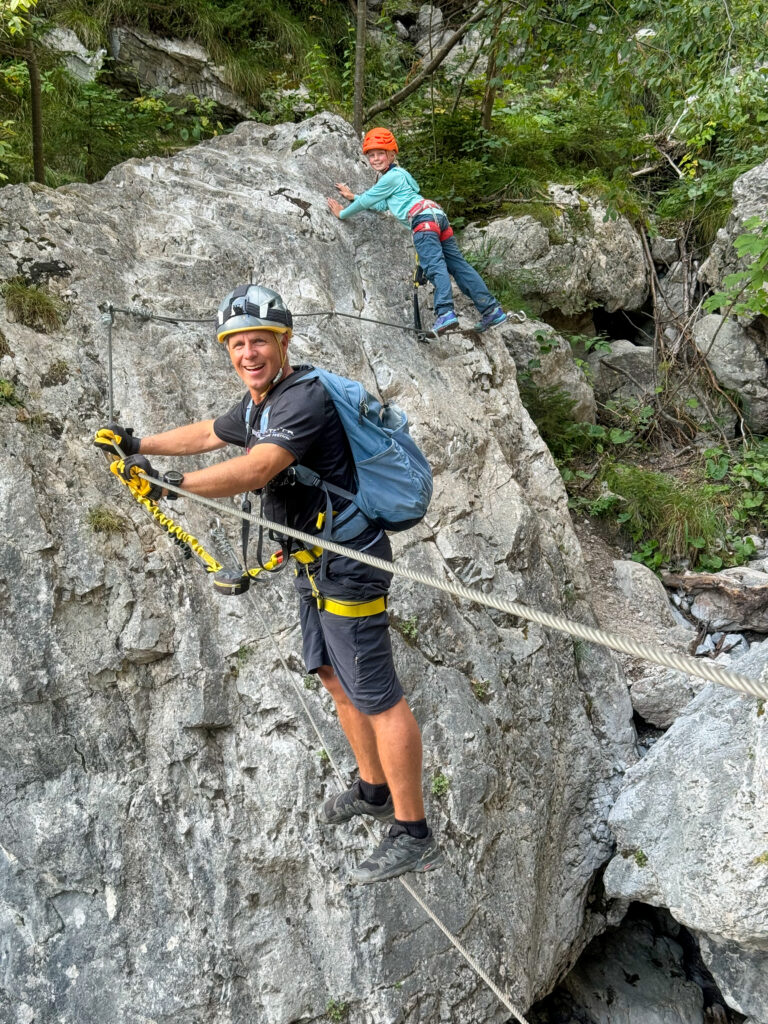
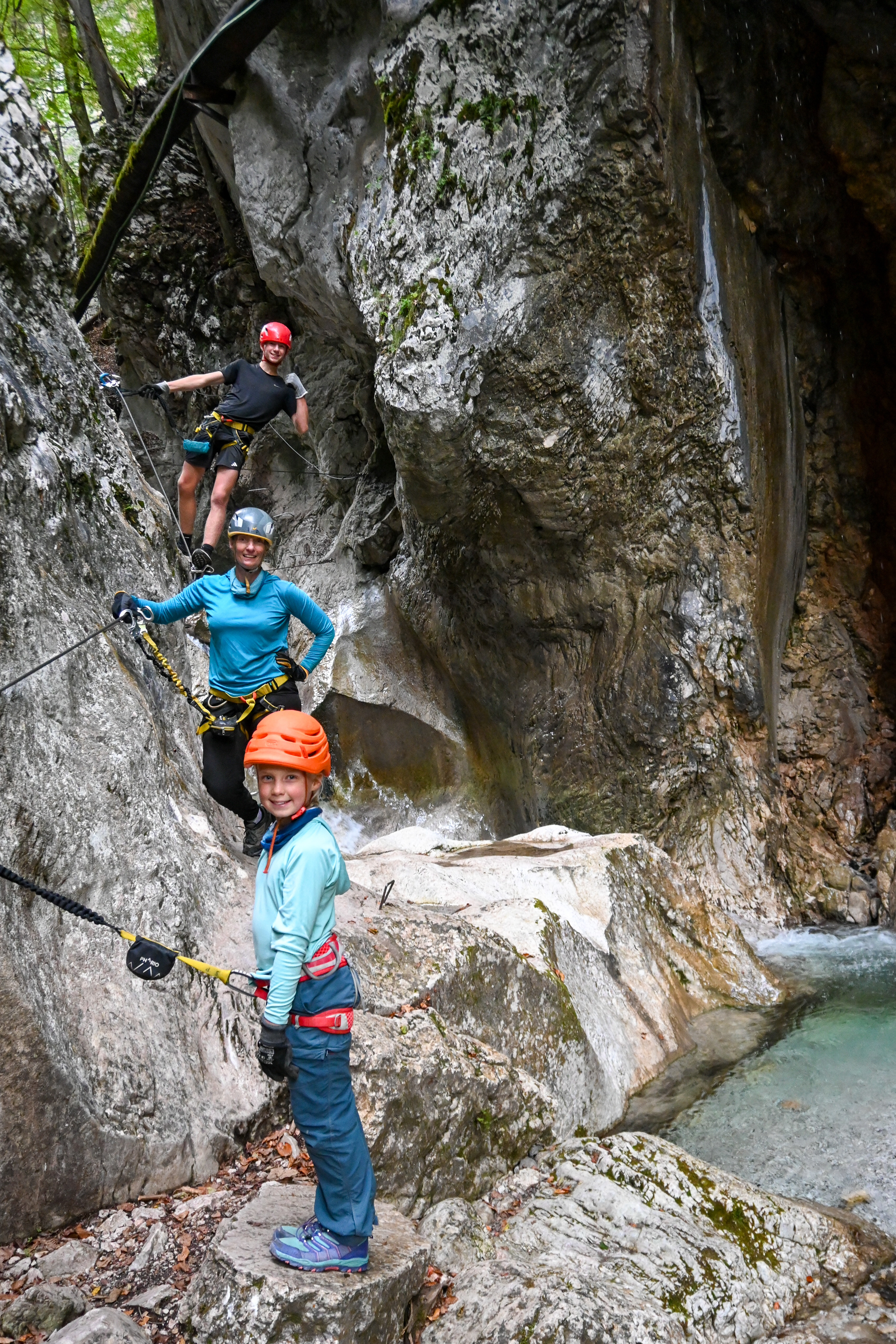
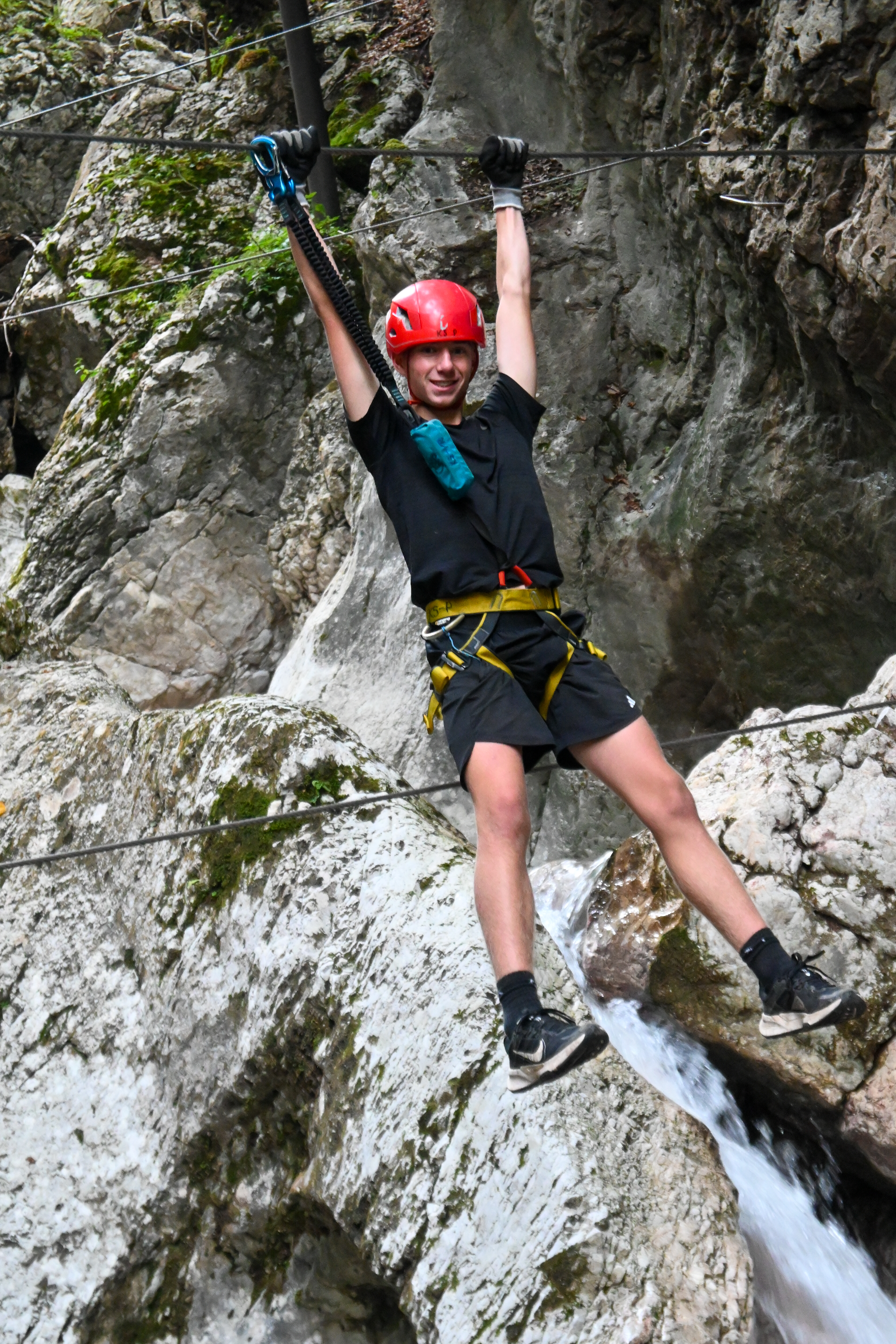
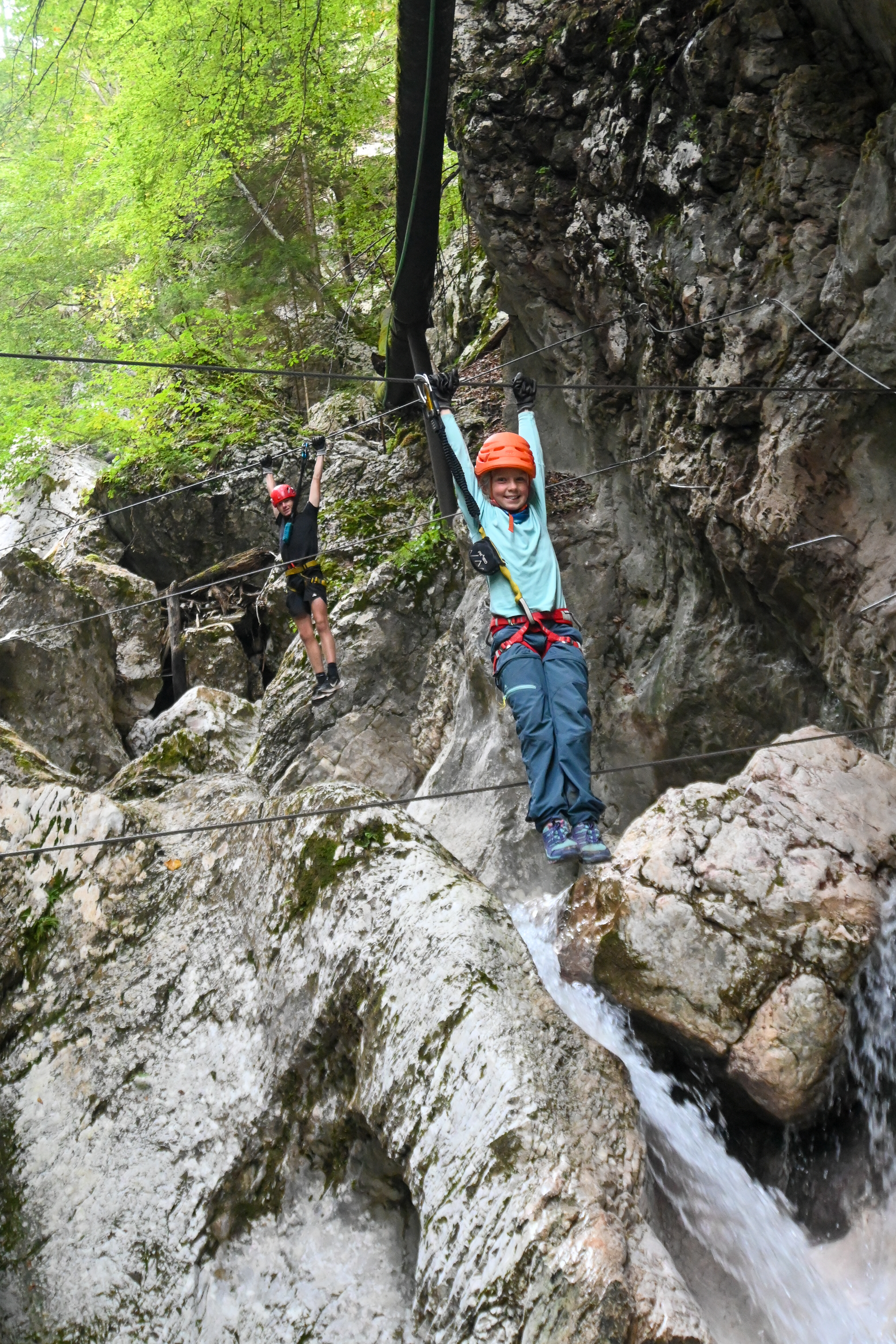

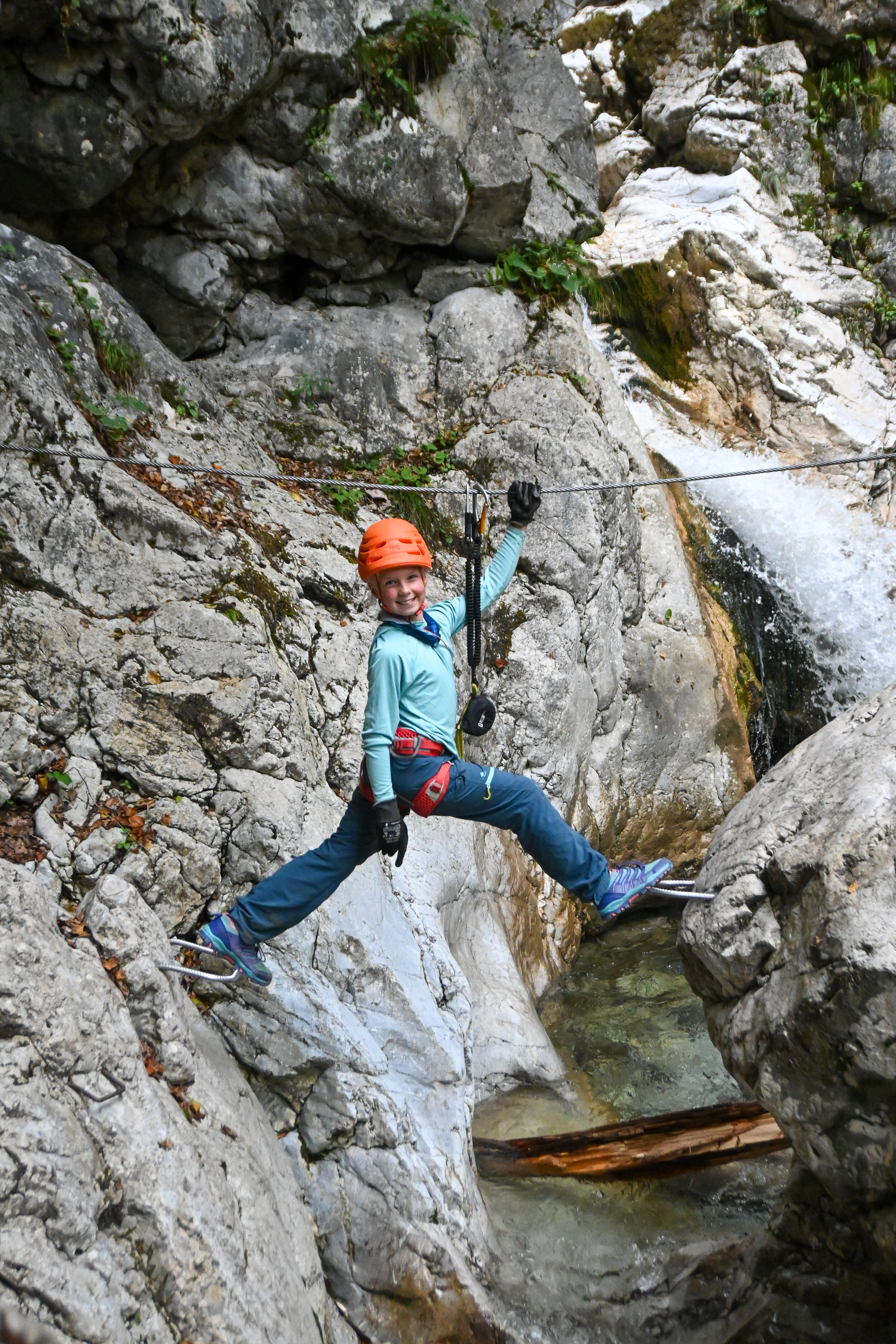
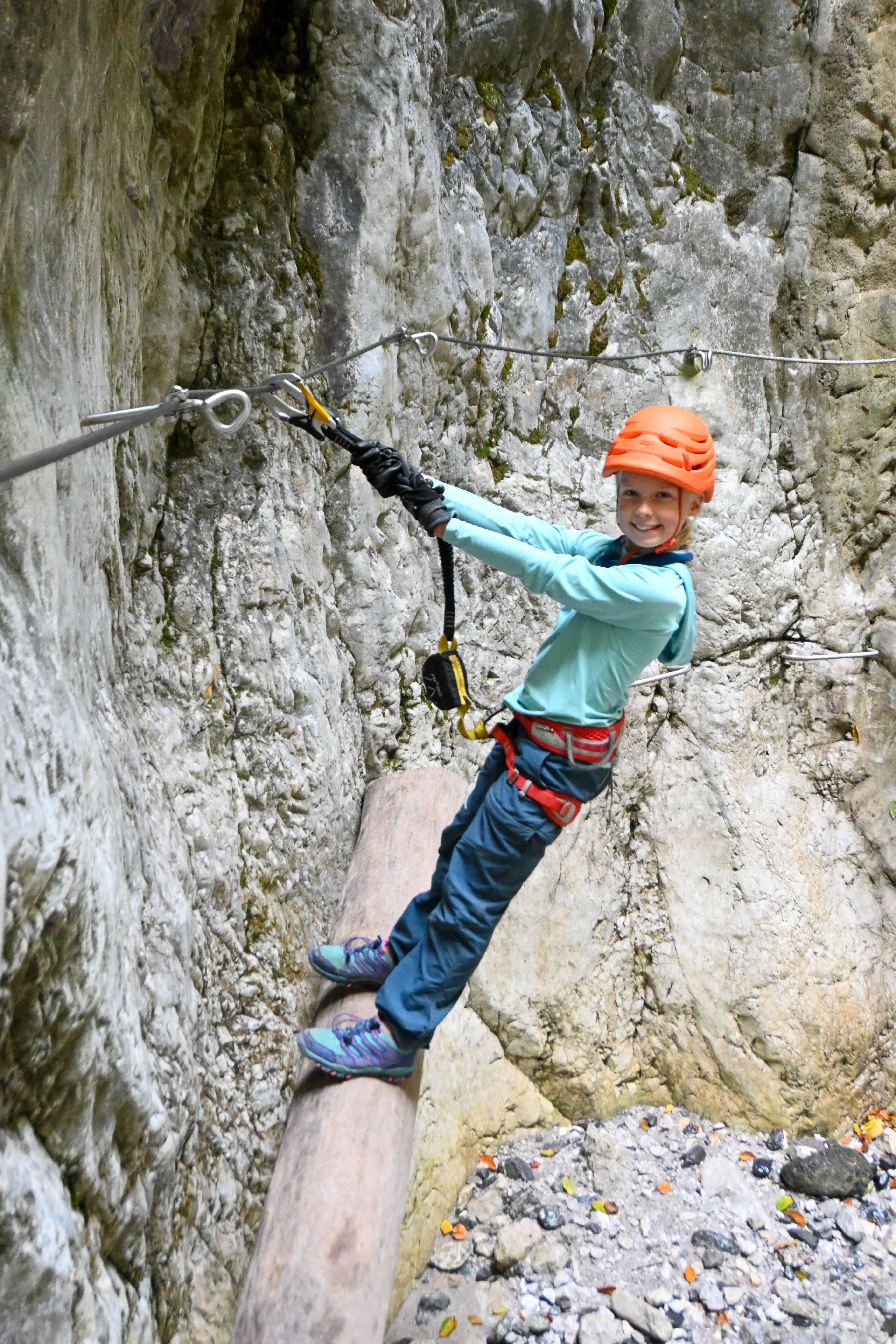
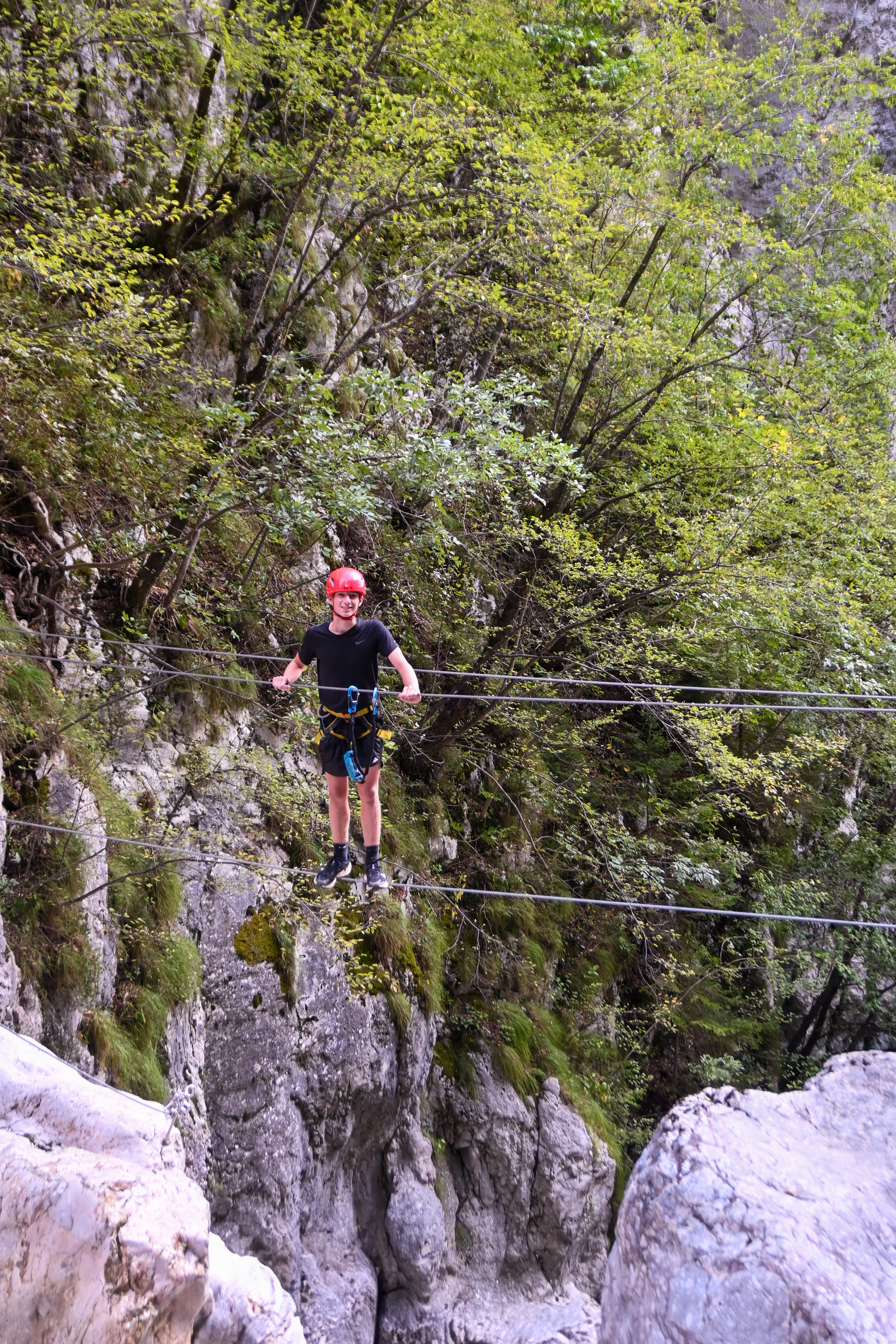
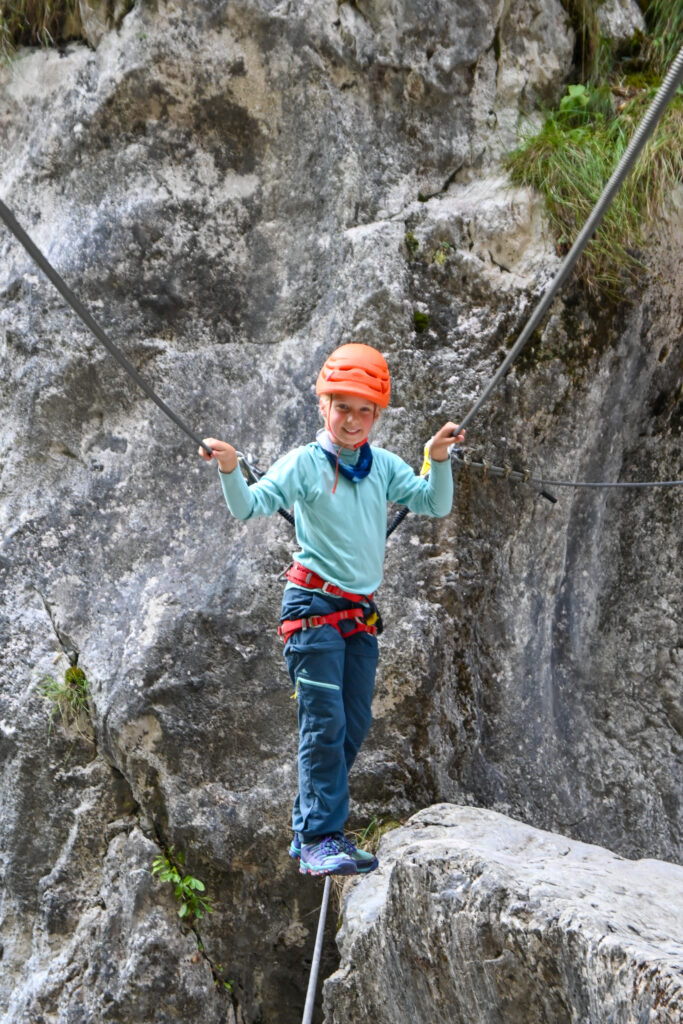
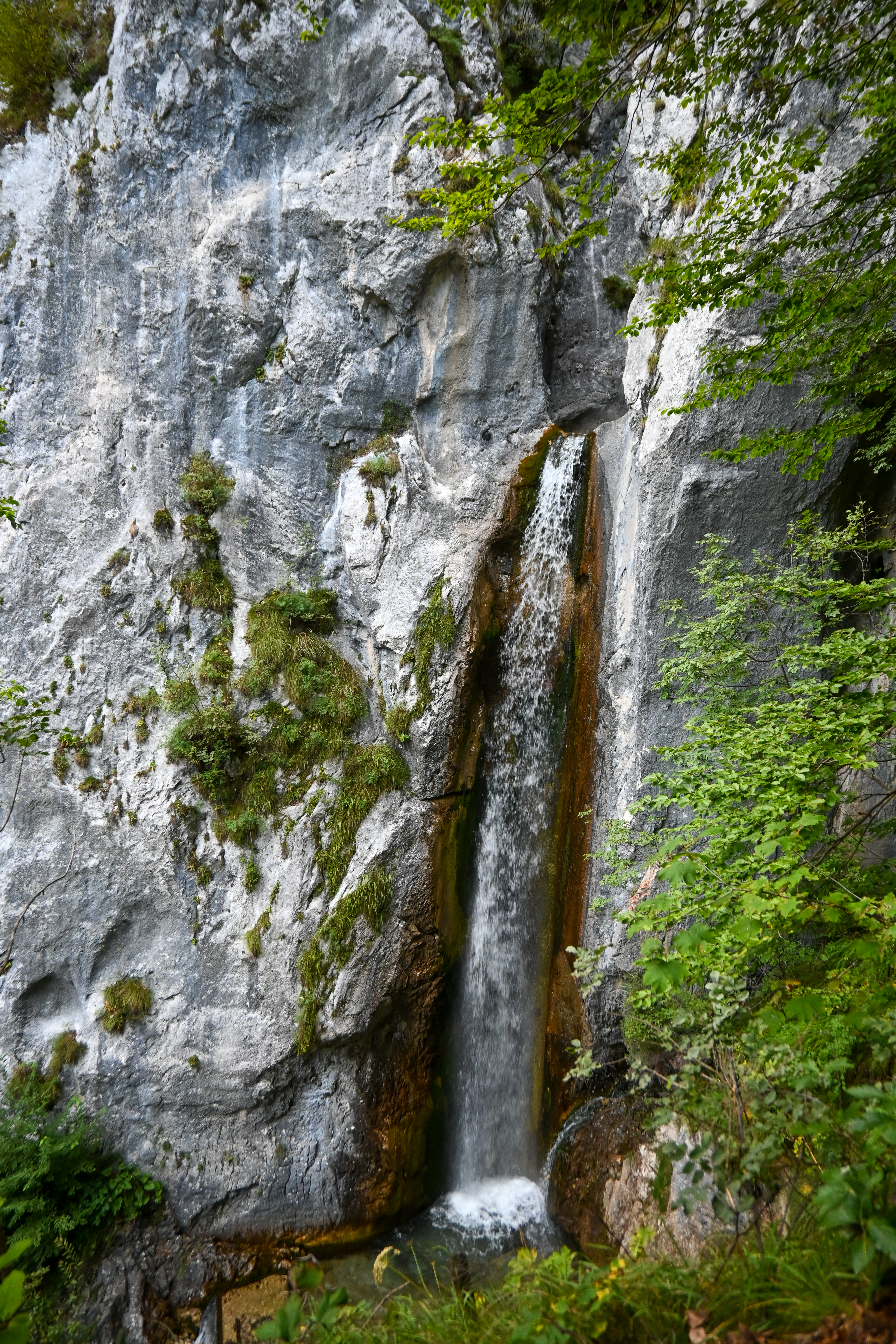

Despite being pretty shattered, I had one more spot in the area that I wanted us to visit…and thankfully Logan had enough energy to convince us to go because Zelenci Nature Reseve was a very pretty place.
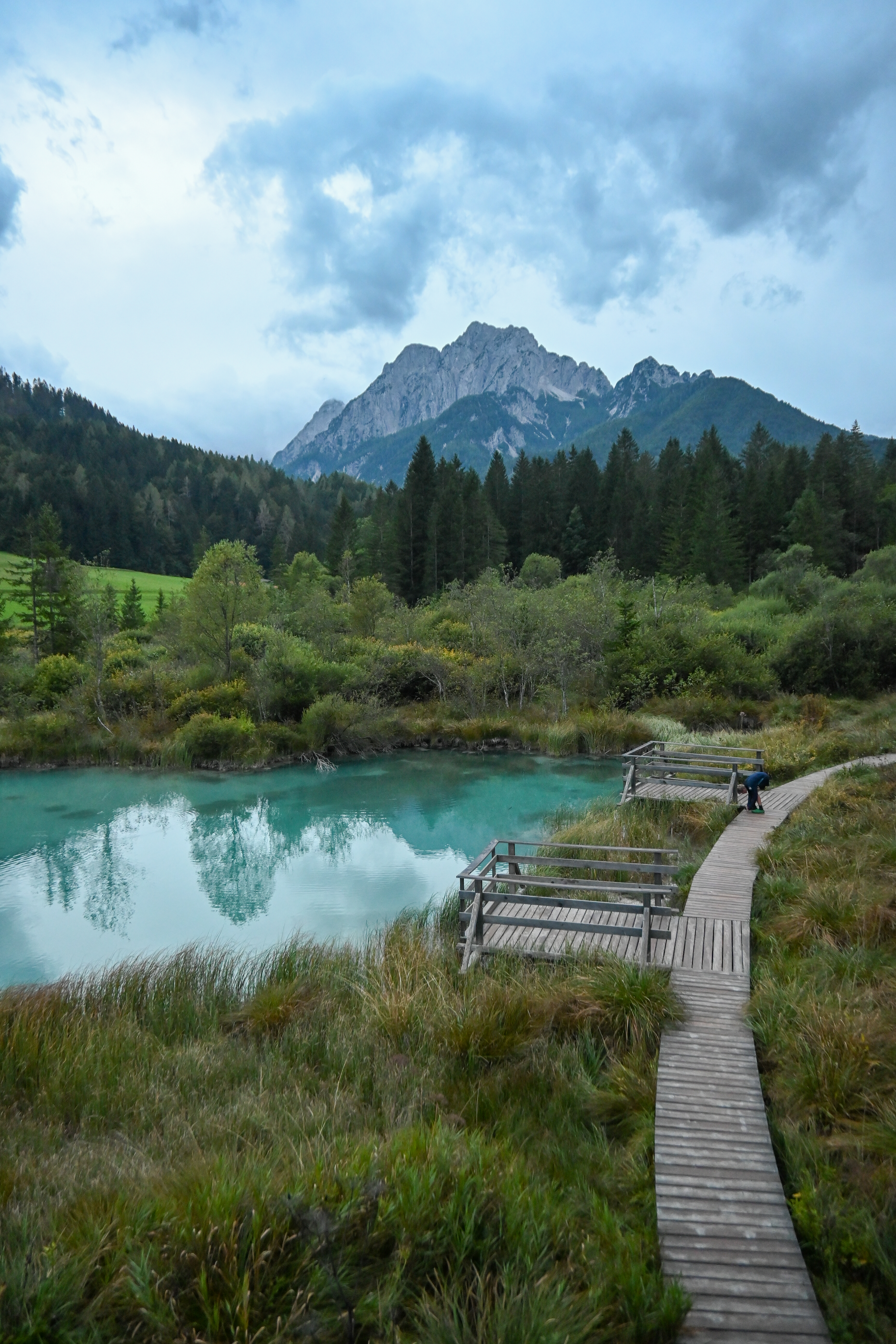
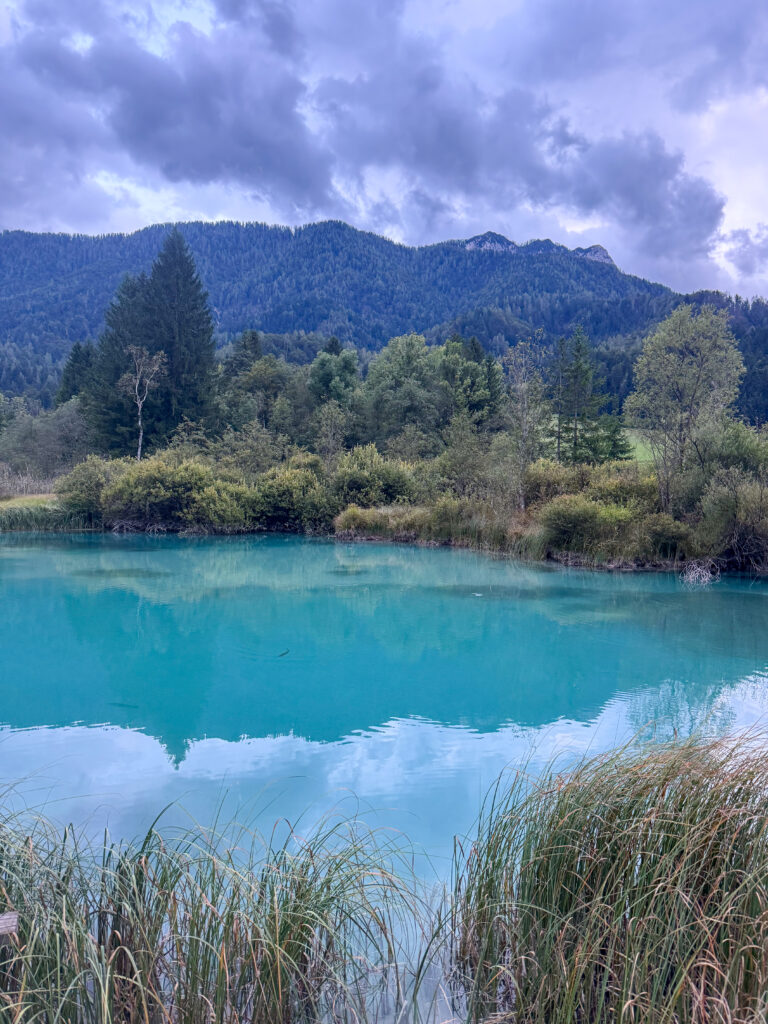
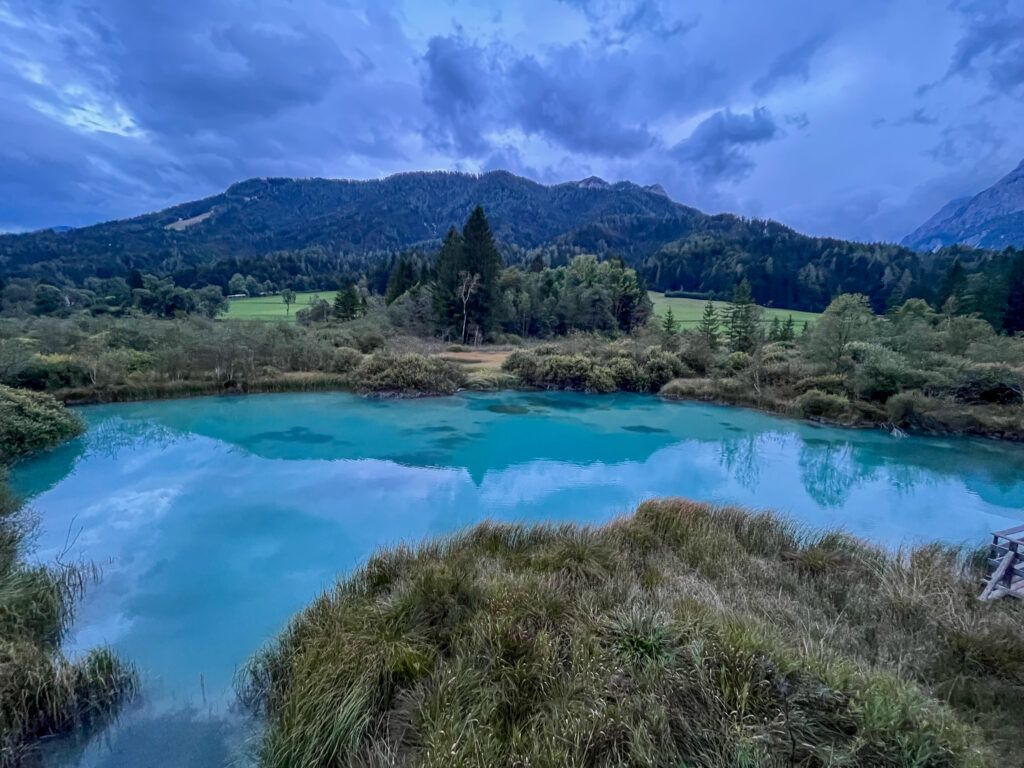
The next four days were a bit more chill as we visited the Lake Bohinj/Lake Bled area. An early Autumn cold snap came through bringing a dusting of snow up on the Julian Alps, which made it very picturesque but our kids didn’t have any enthusiasm to swim in either lake!
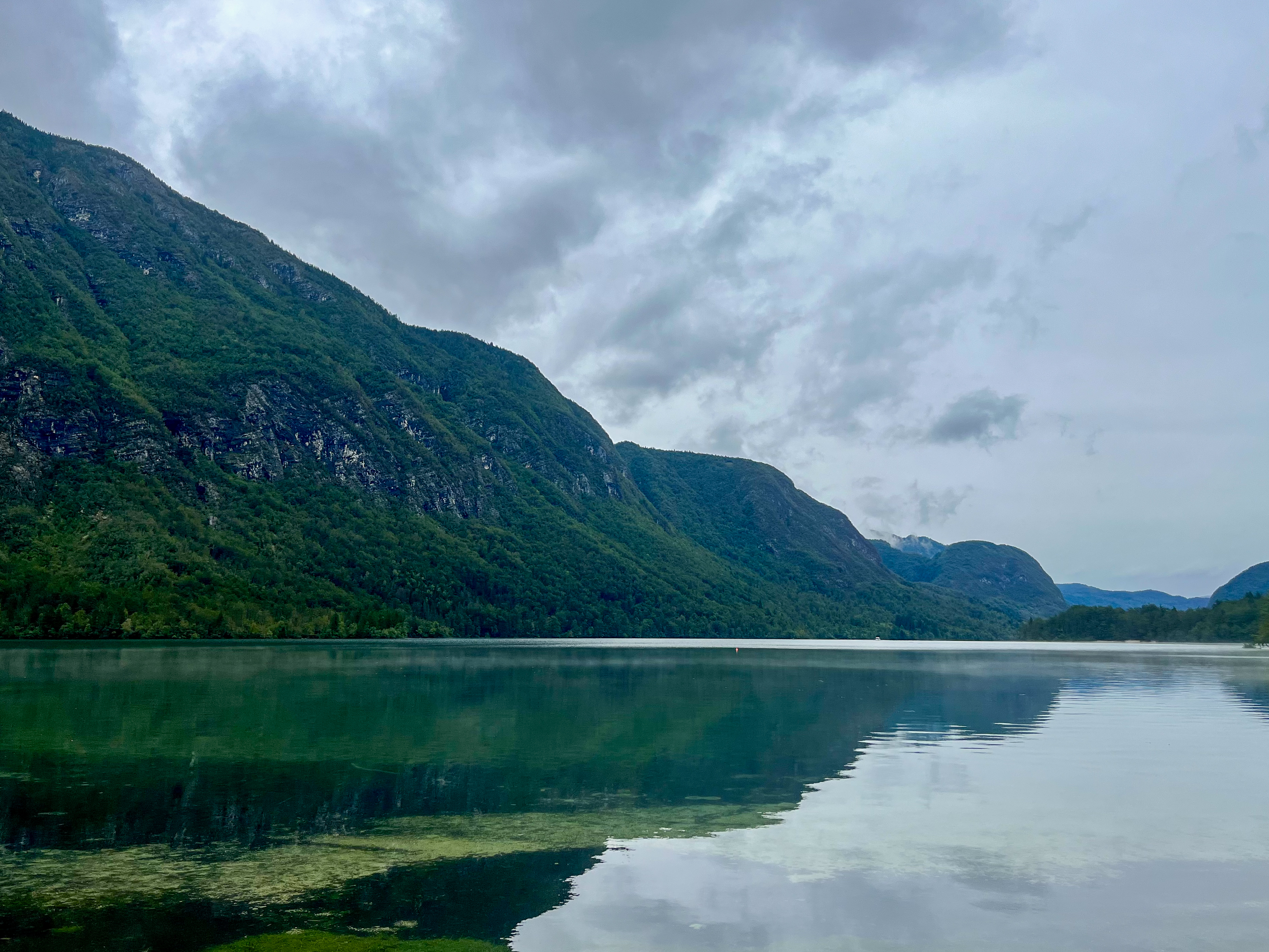
Lake Bohinj was much less busy than Lake Bled and we enjoyed a peaceful walk around the lake and catching the electric ferry back to our campsite.
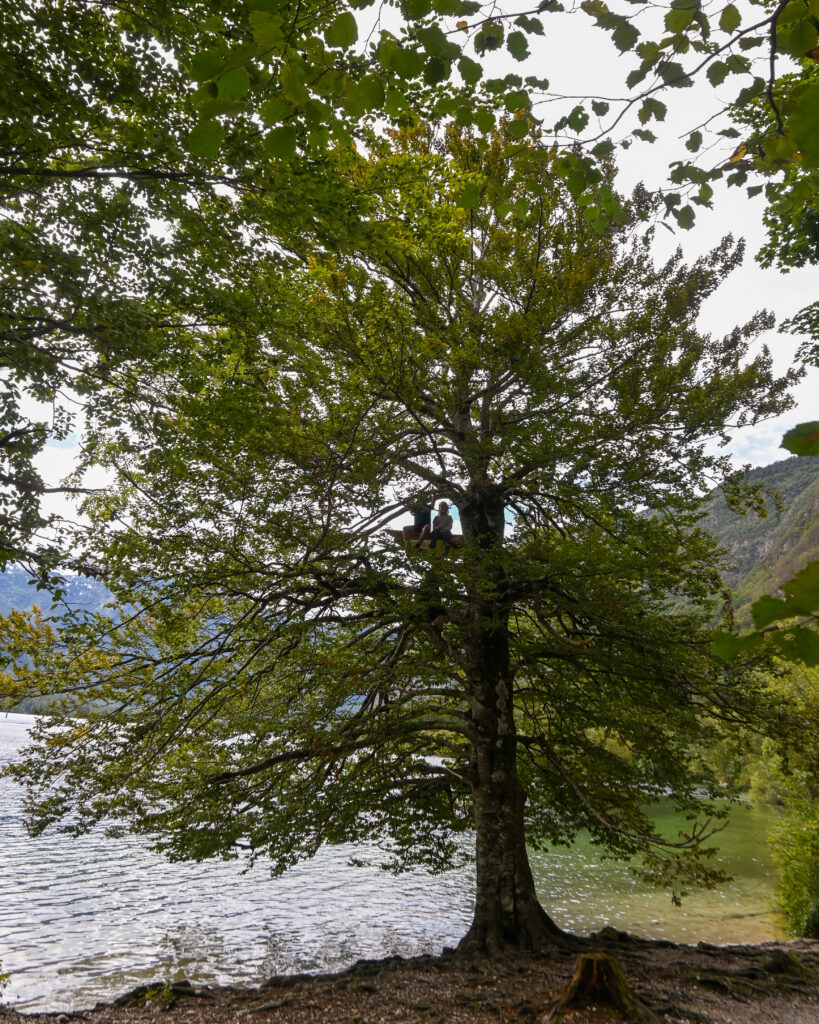
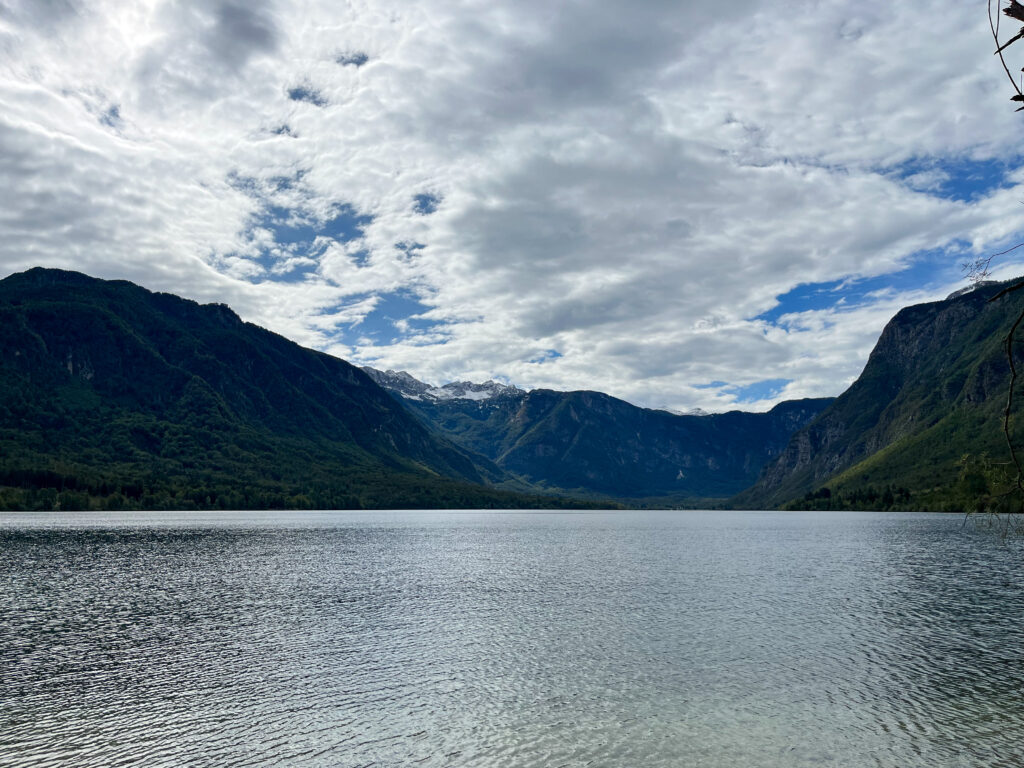
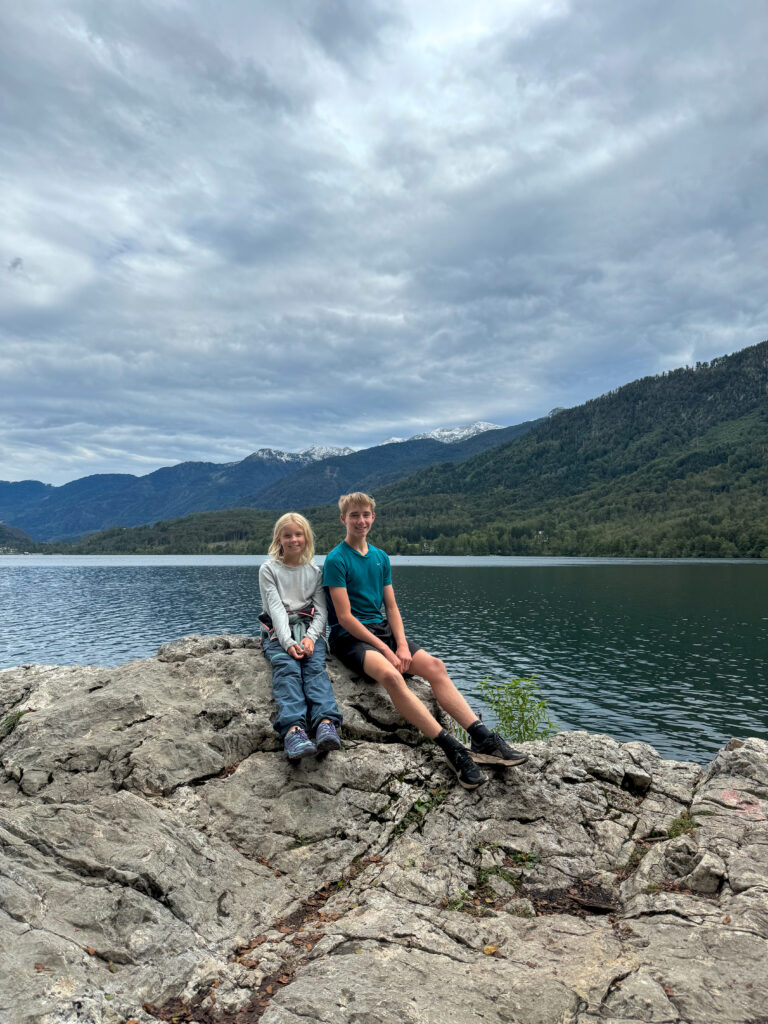
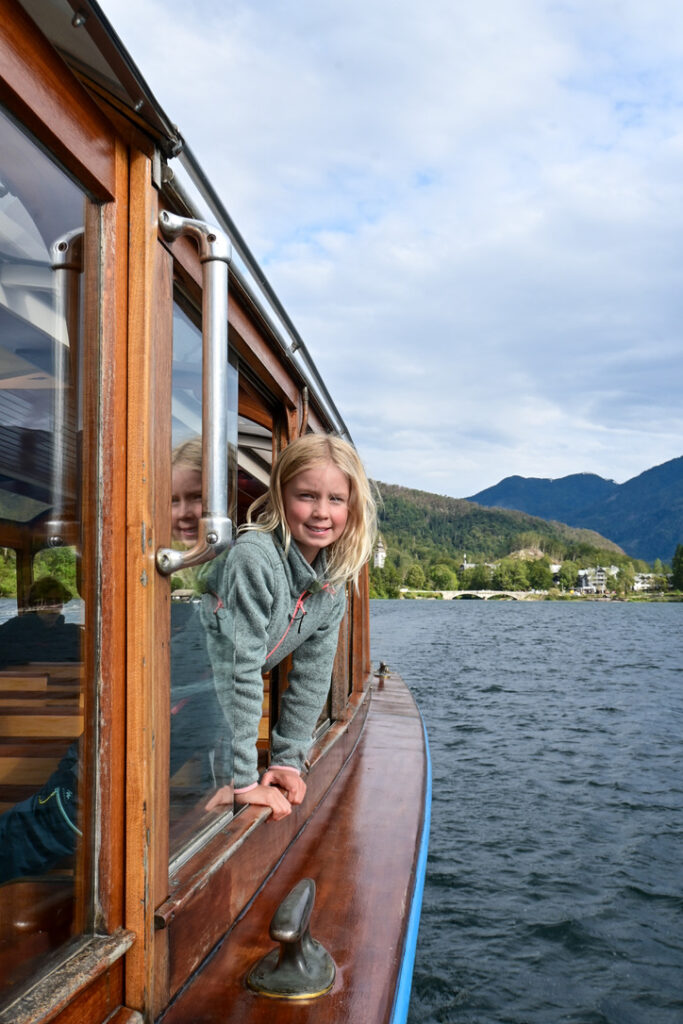
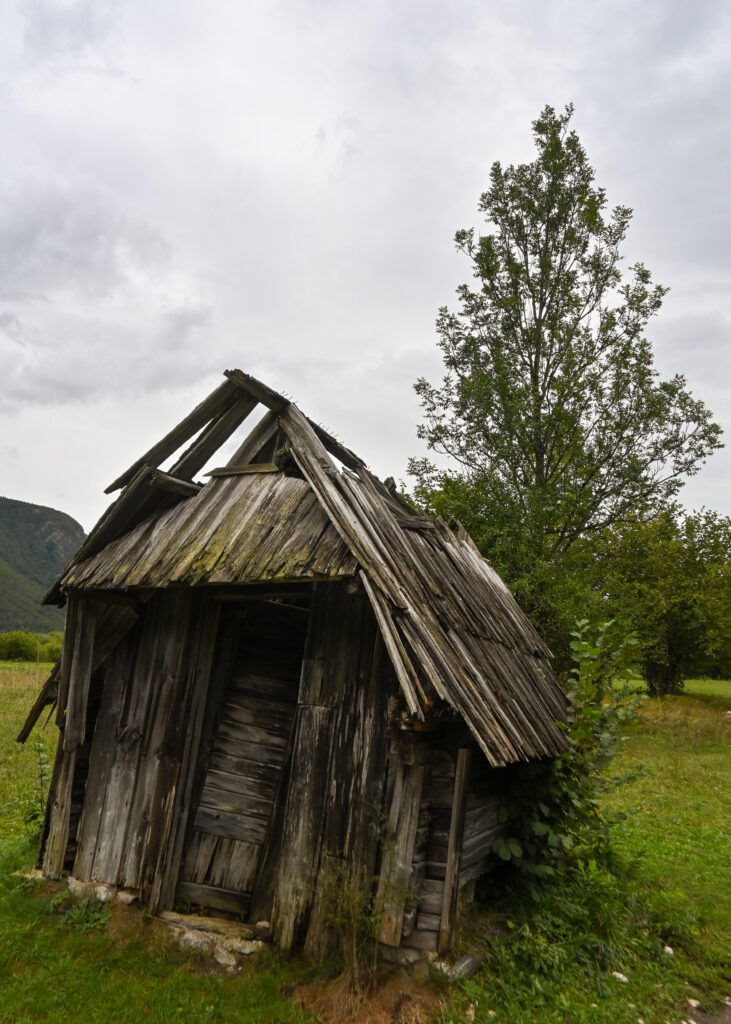
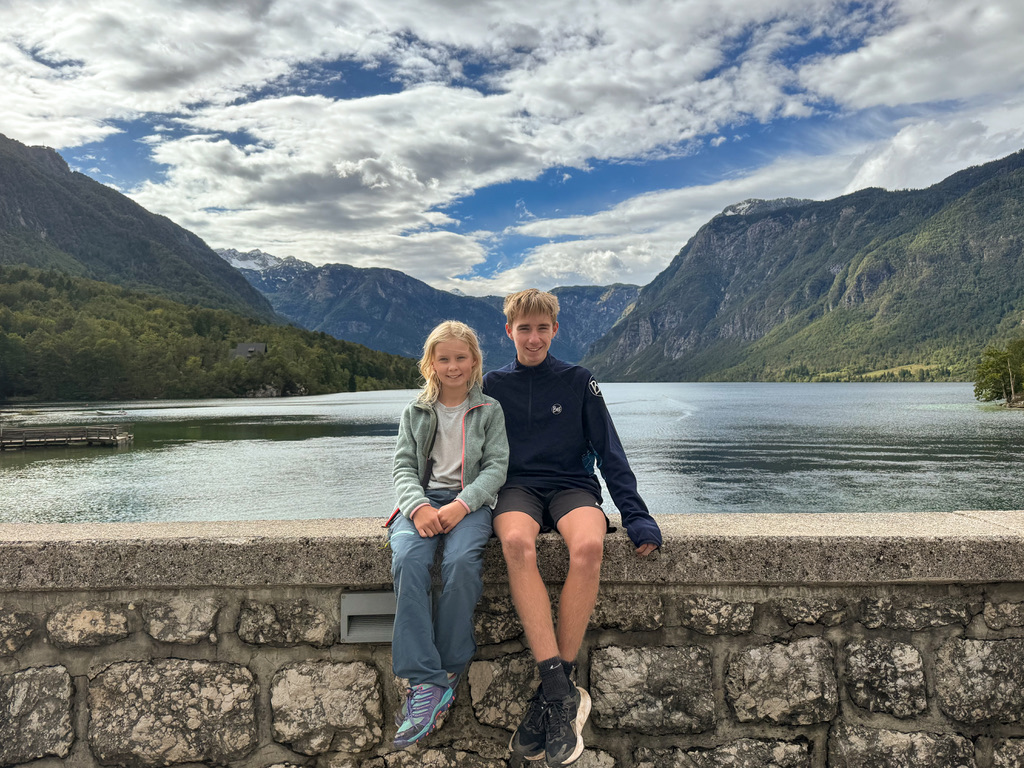
Lake Bled was very scenic too with Bled Castle on the hill, Bled Island (Blejski Otok) with the Church of the Assumption of Mary in the middle of the lake, and the pretty Julian Alps in the distance.
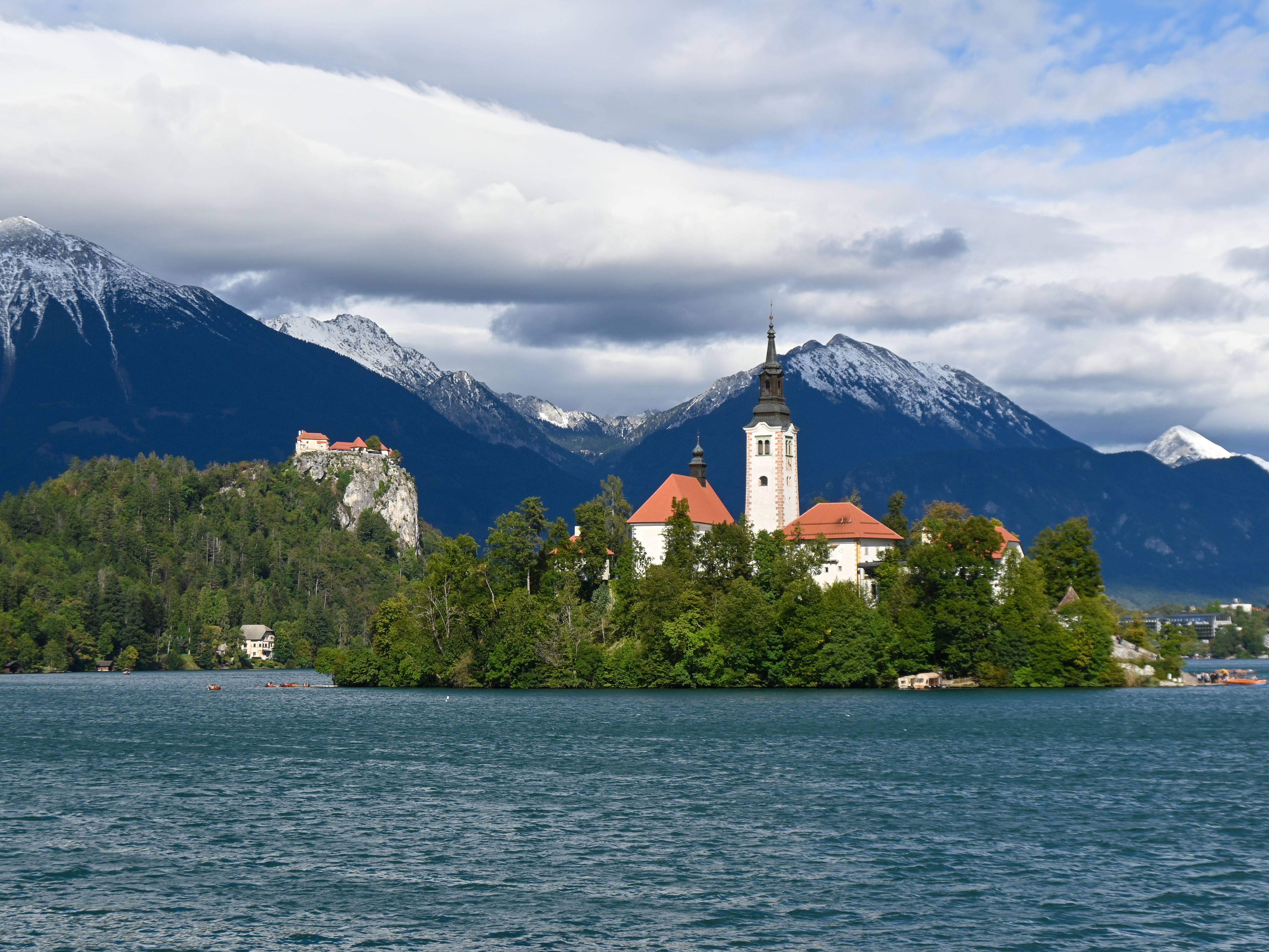
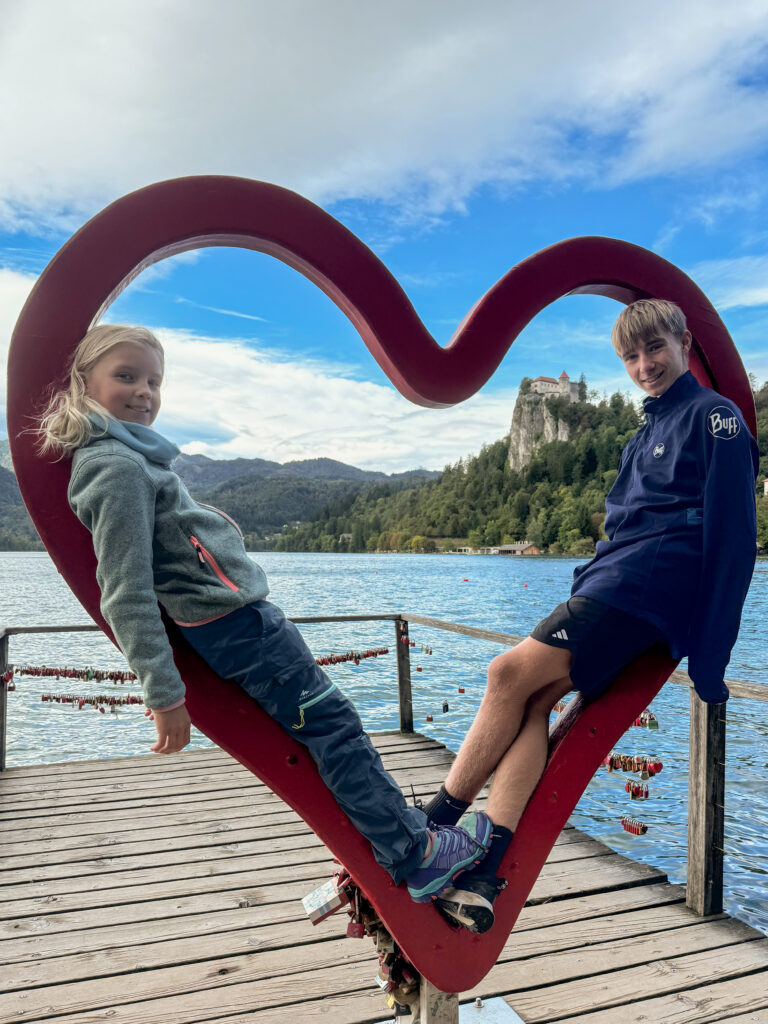
We were glad when the wind dropped so Logan could row us in this sweet wooden boat over to Blejski Otok.
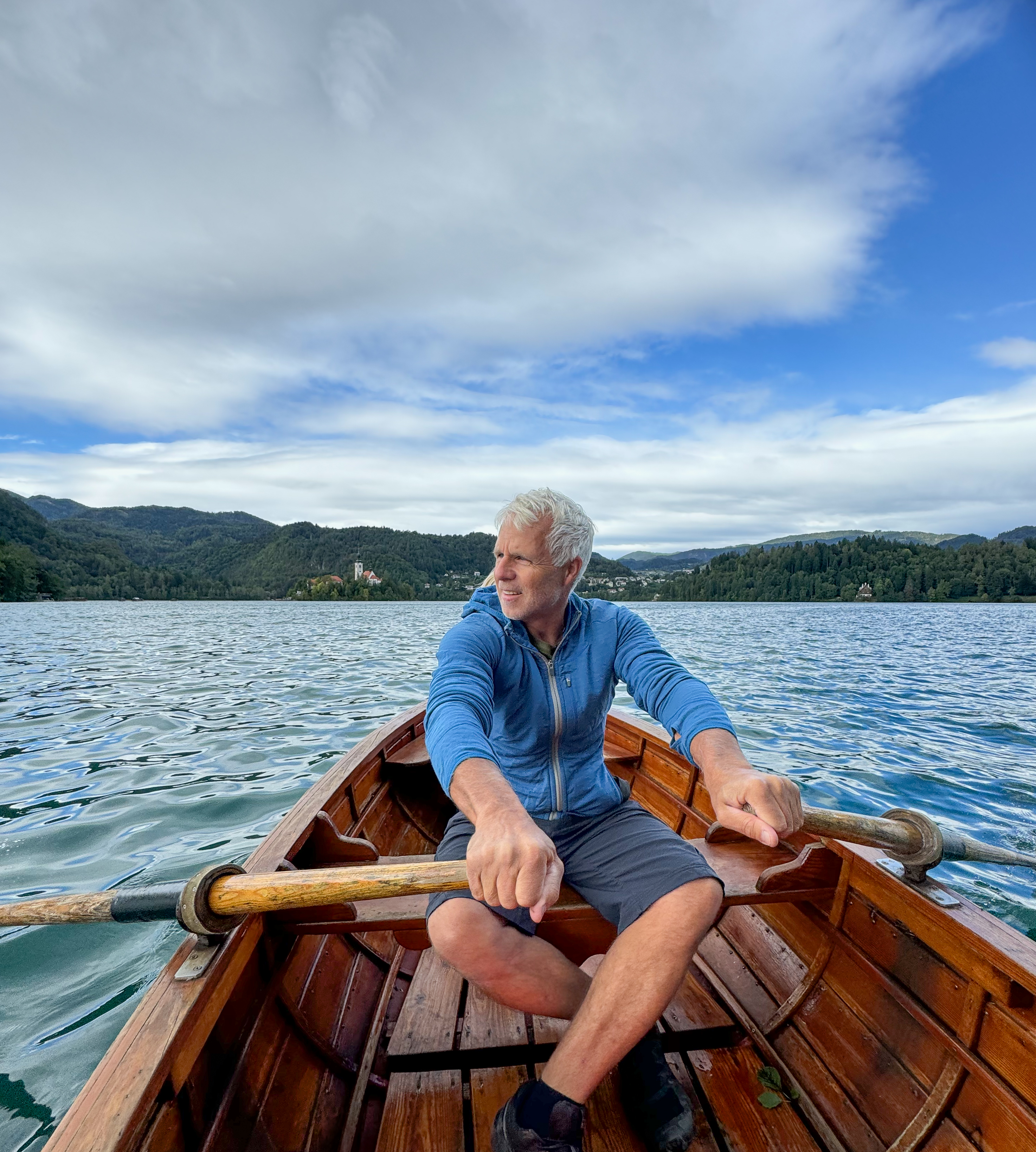
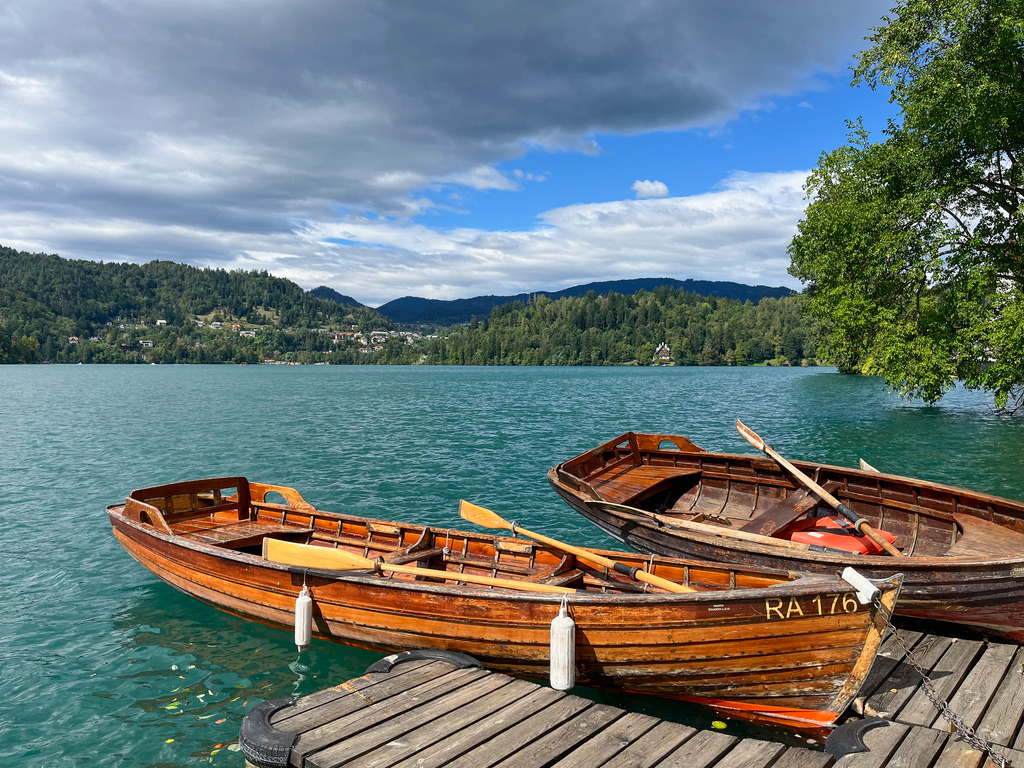
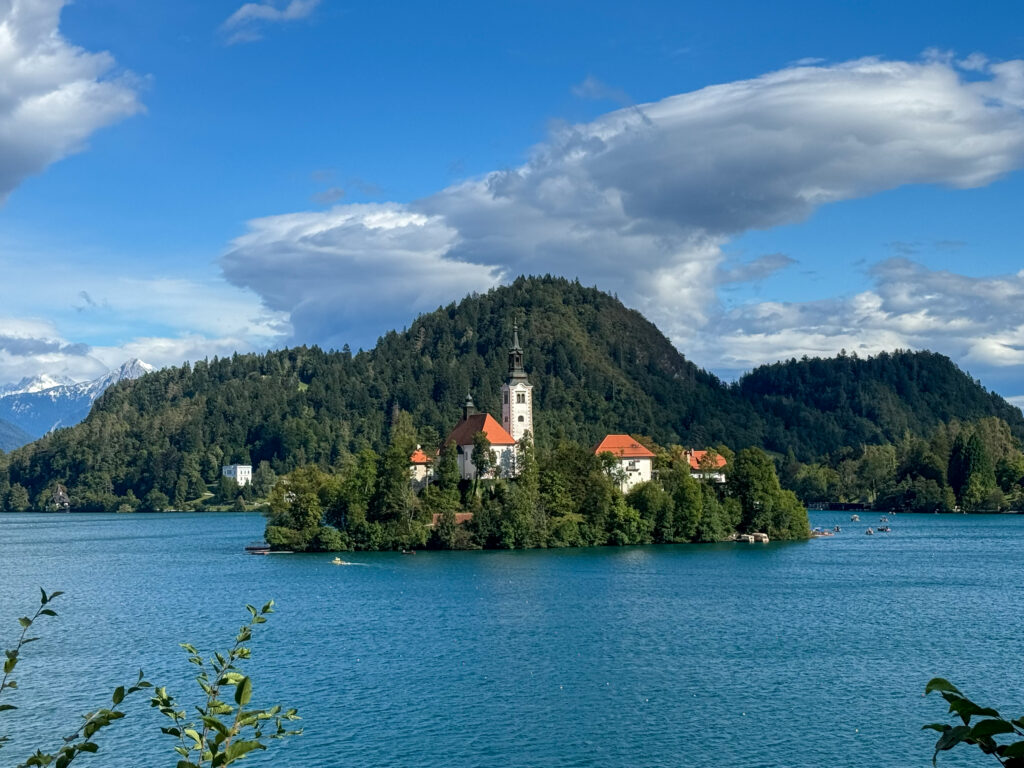
Our next stop was Ljubljana – the ‘City of Dragons’ and Slovenia’s capital city. Another pretty city with winding cobbled lanes and a castle on the hill.
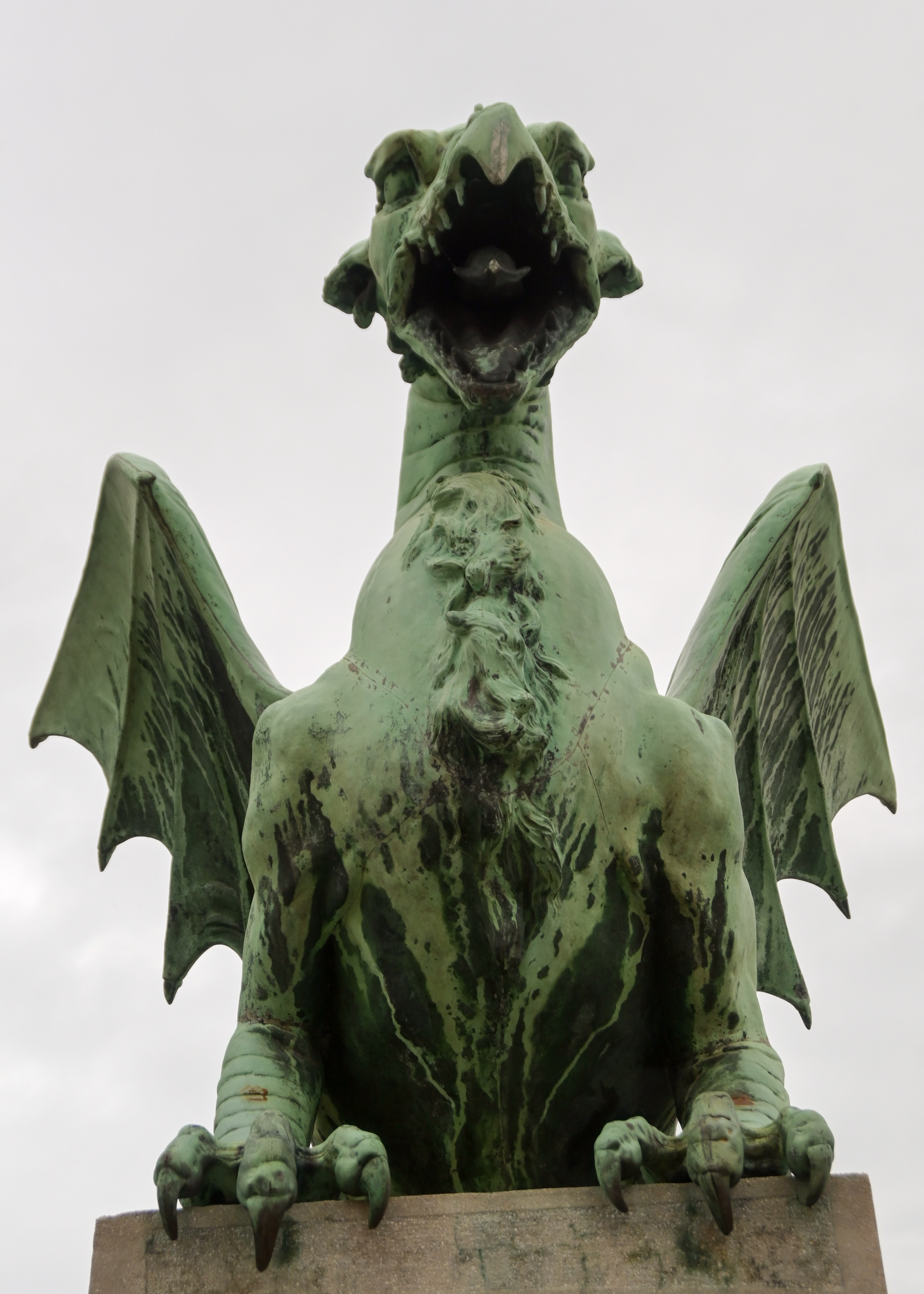
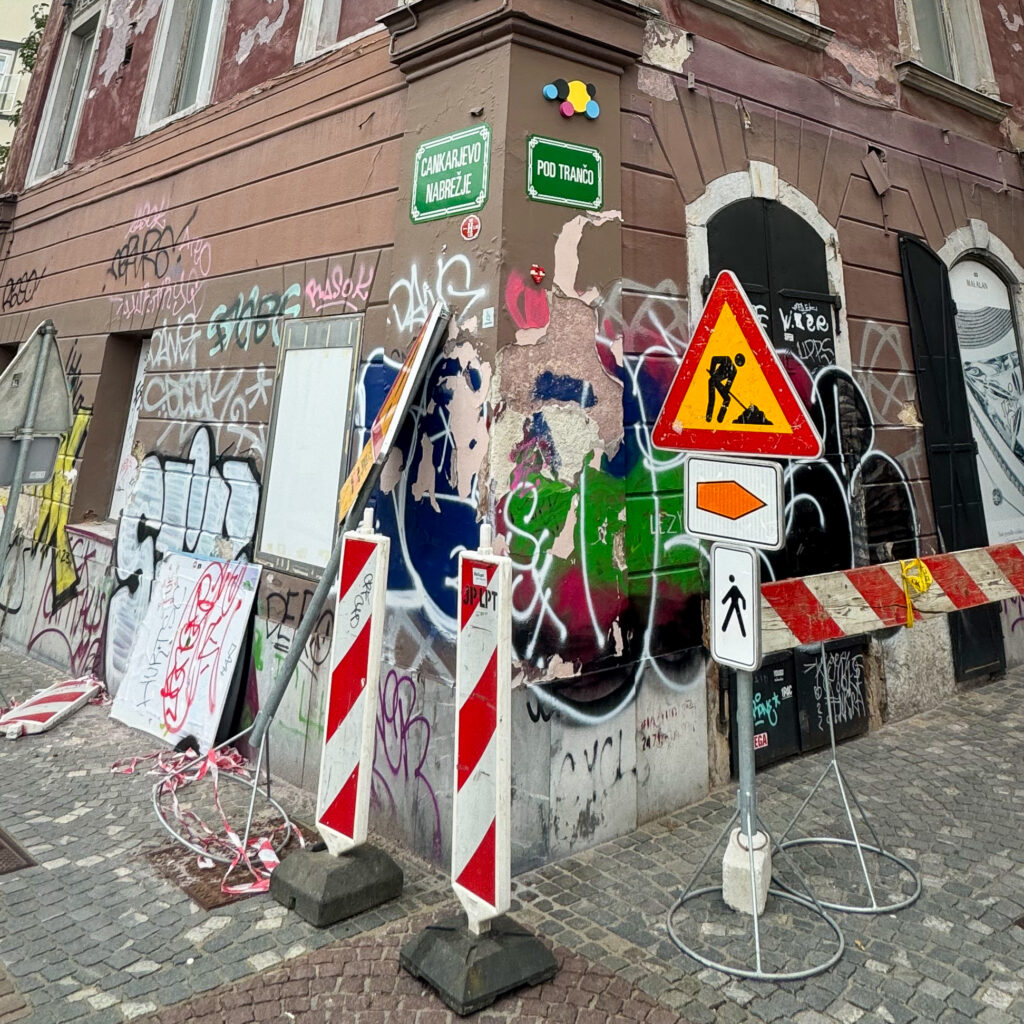
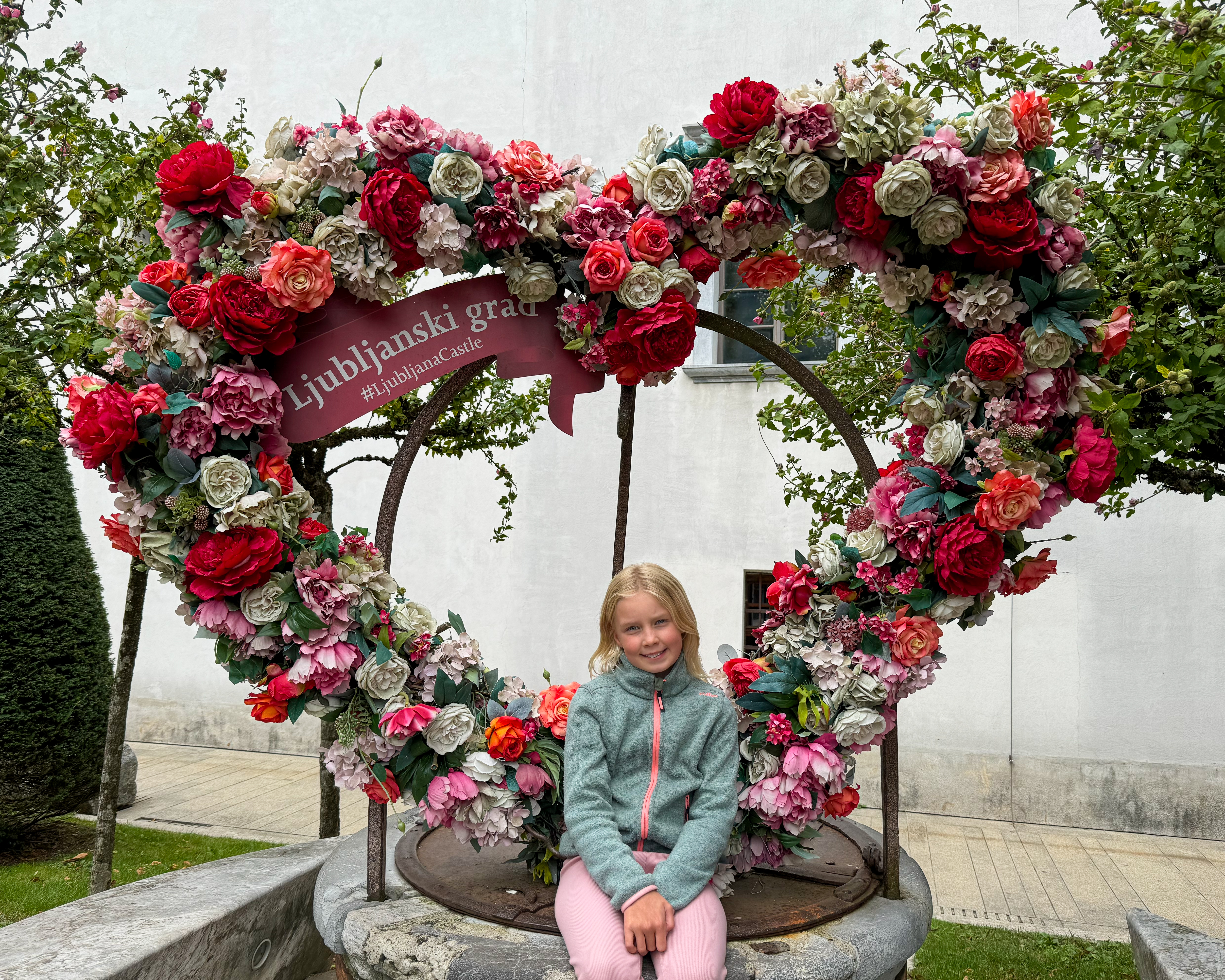
Our last experience of Slovenia was to visit both the Postojna Caves and Škocjan Caves, and the Predjama Castle – the largest cave castle in the world.
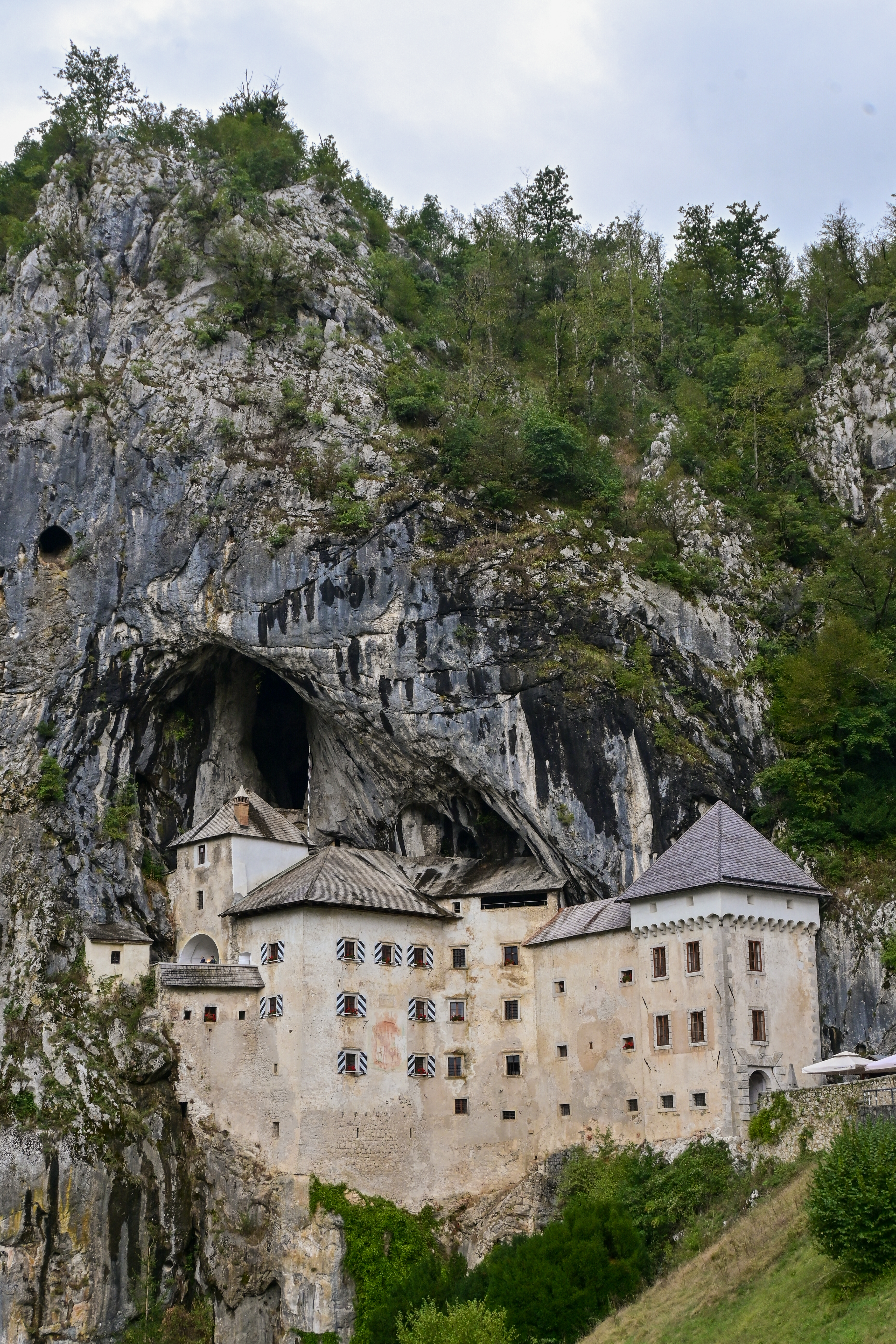
Nearly half of Slovenia sits on karst formations of porous limestone, which means that underground Slovenia is full of caves – over 14,000 of them with more being discovered every year. The Postojna Caves and Škocjan Caves were very different from each other but equally stunning – filled with dripping stalactites and stalagmites in a variety of colours, deep canyons, and huge echoing caverns. The walkways took us up to 150 metres below the surface and many kilometres into the caves.
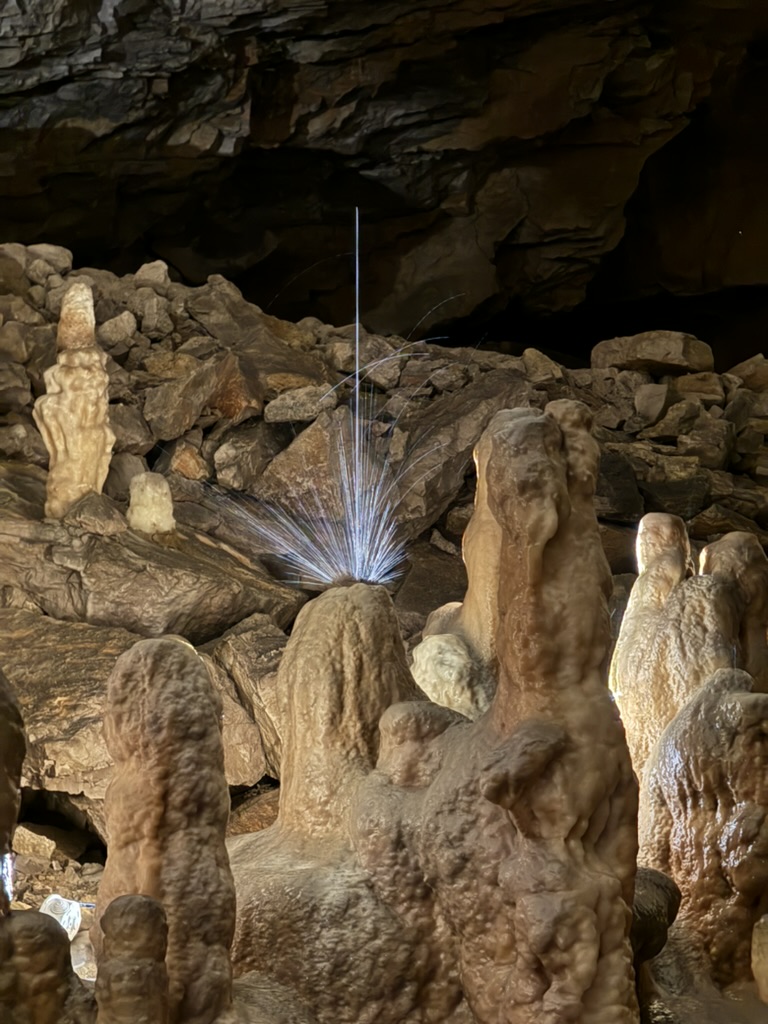
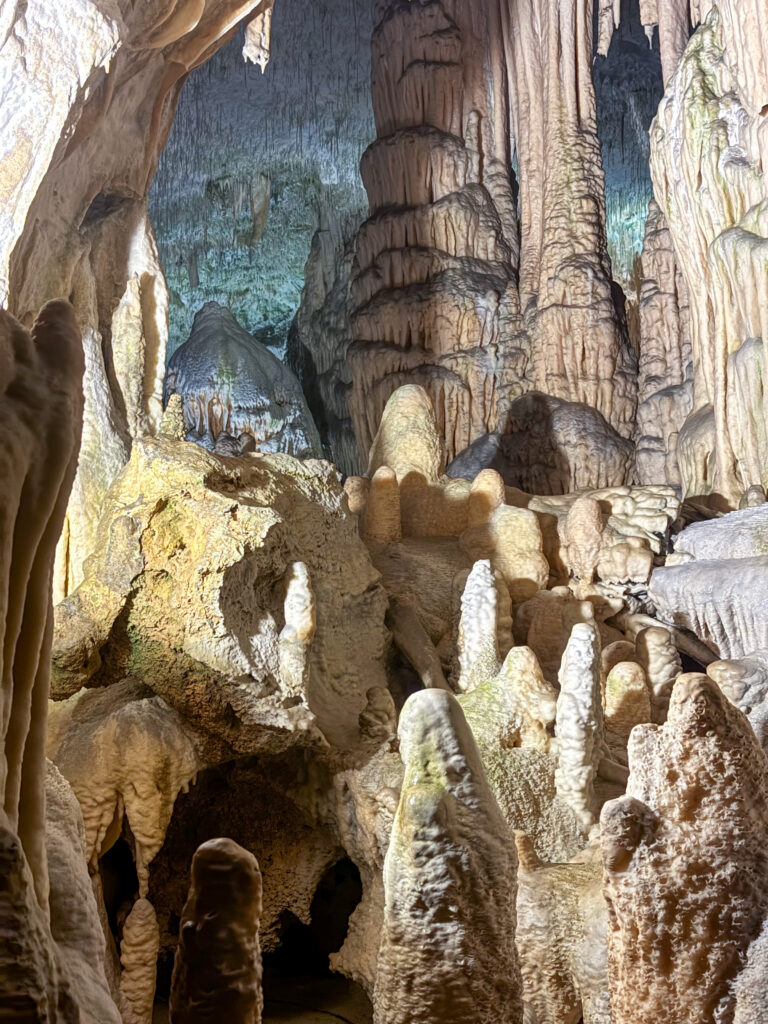
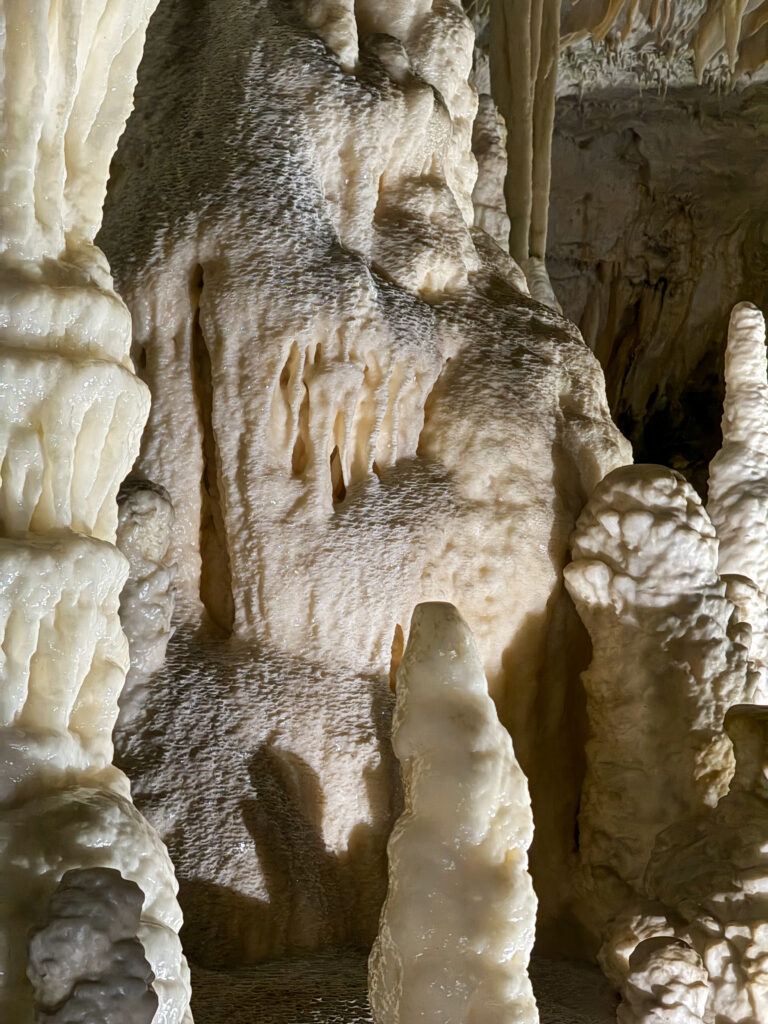
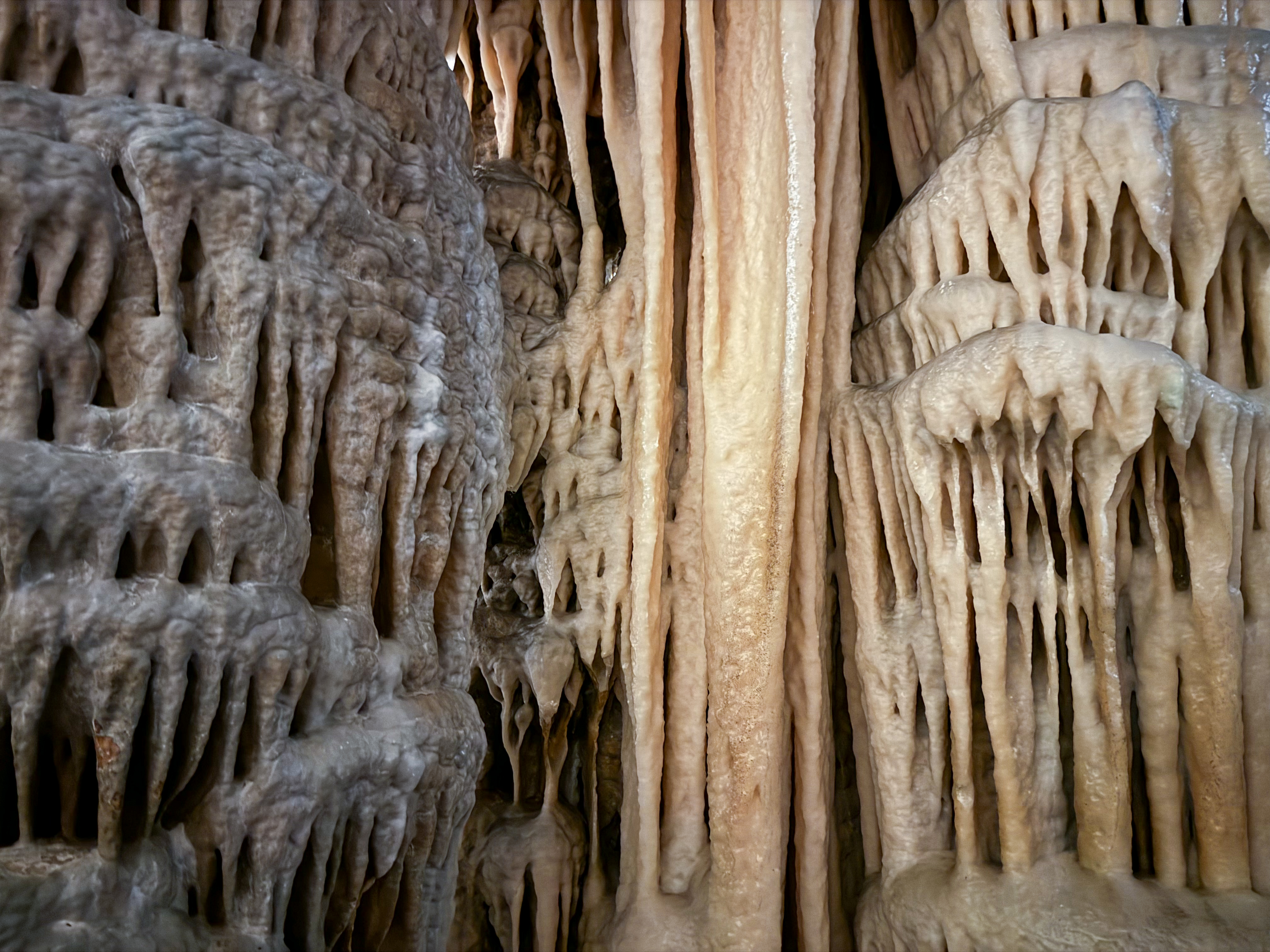
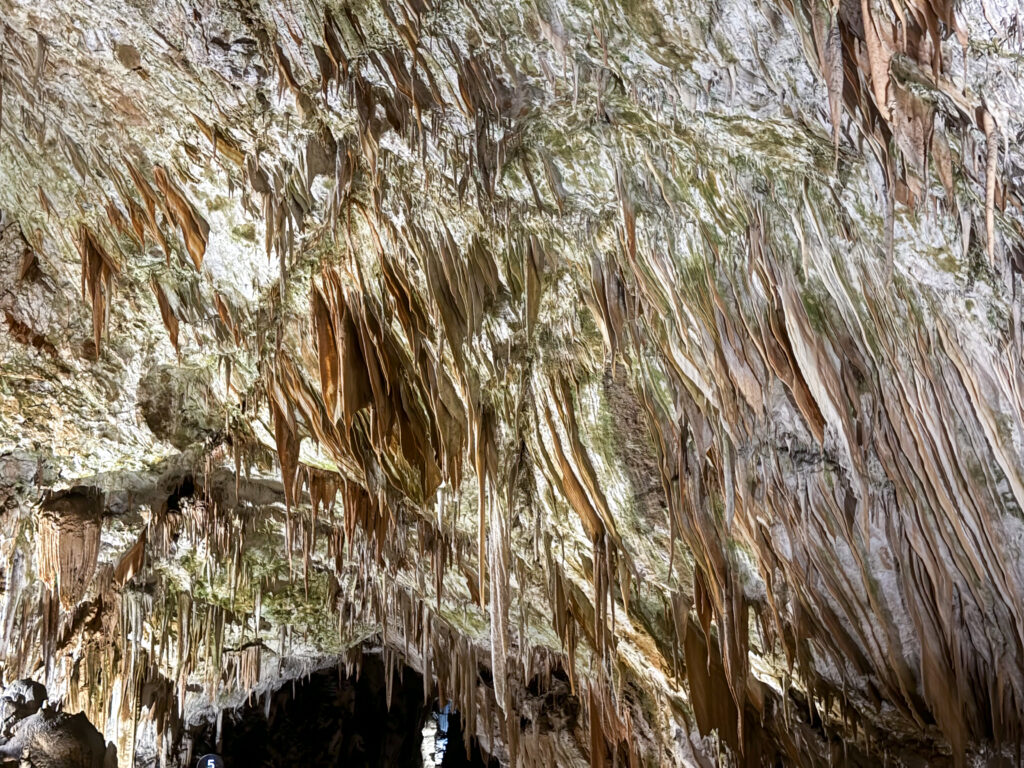
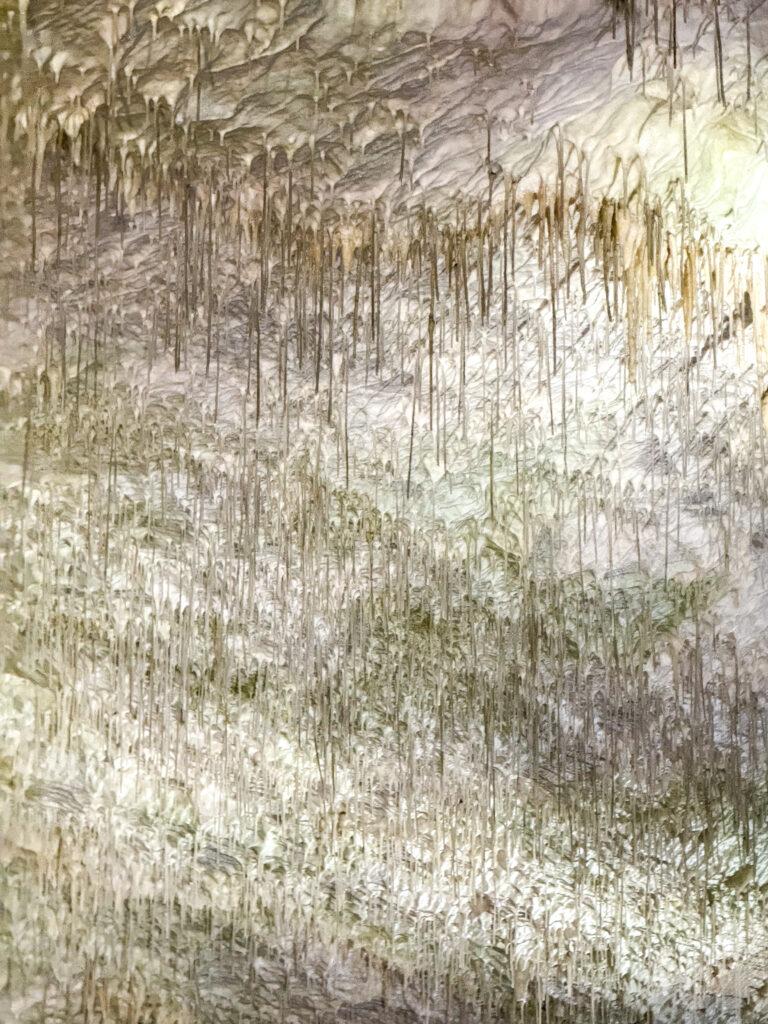

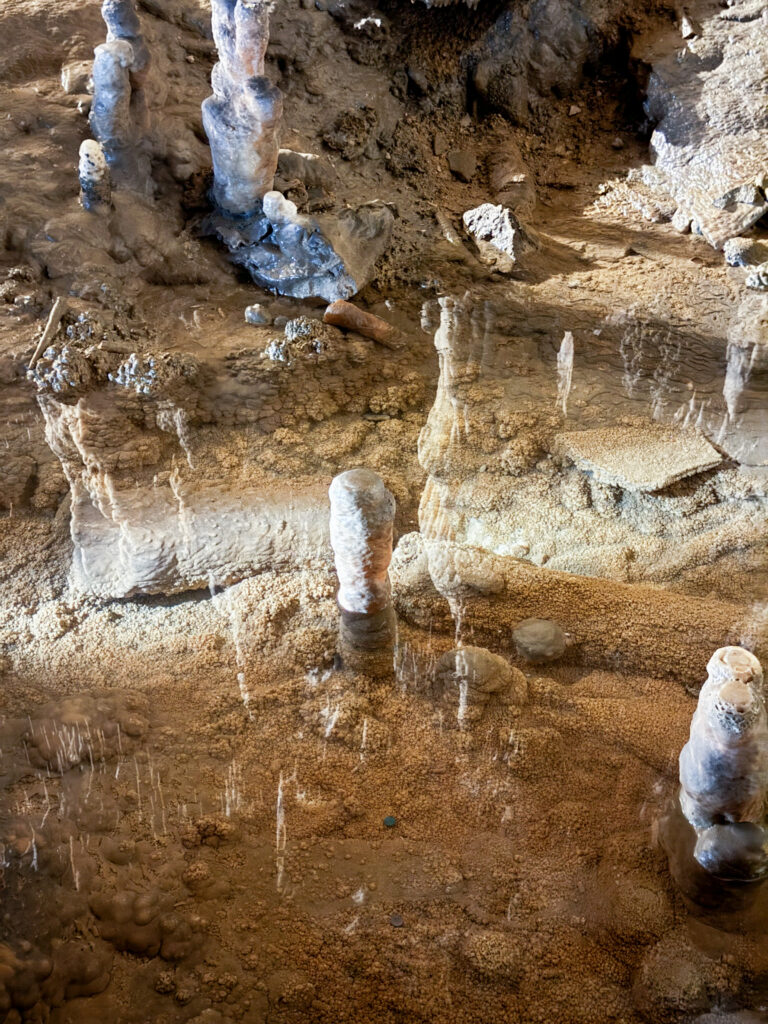
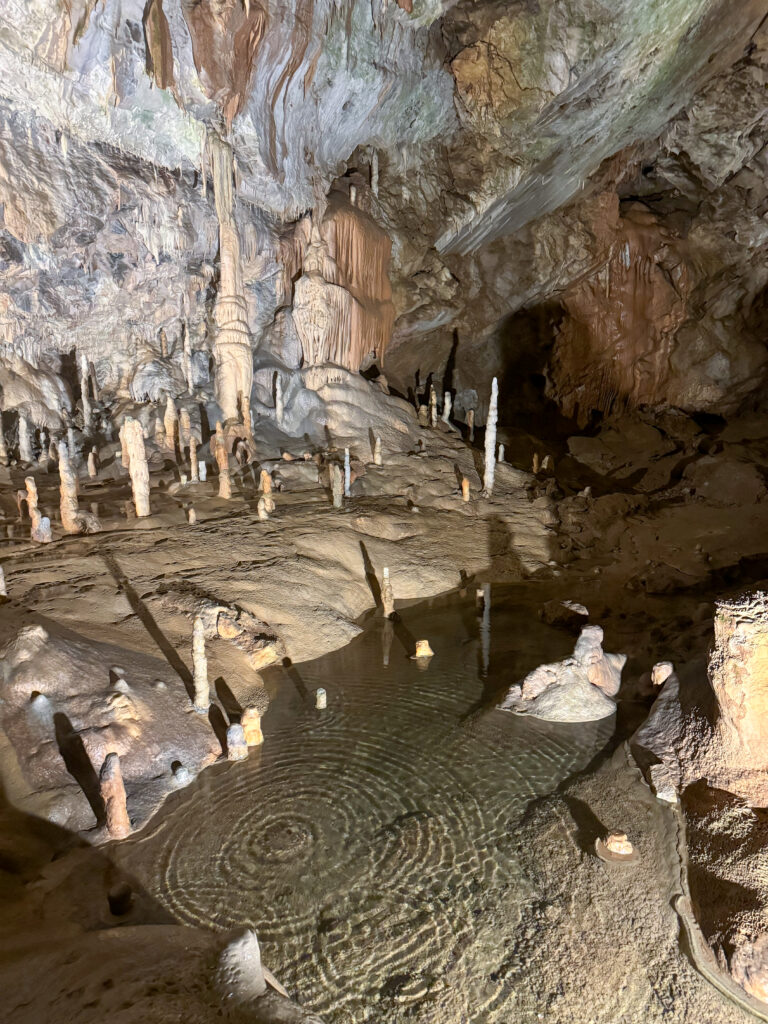
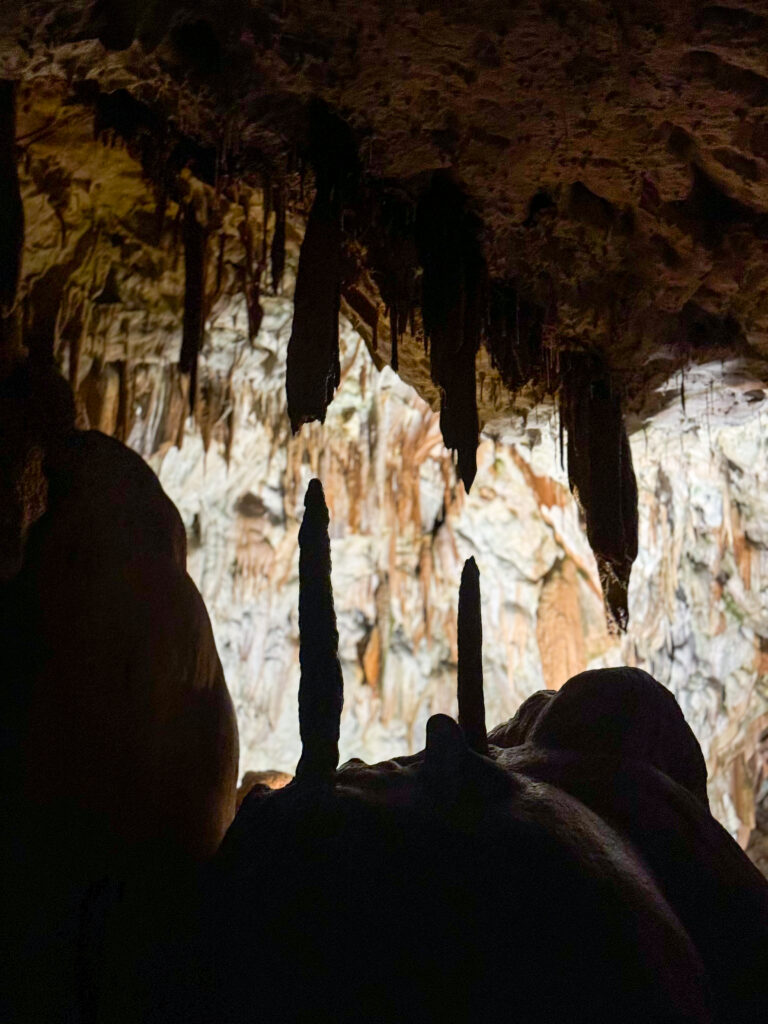
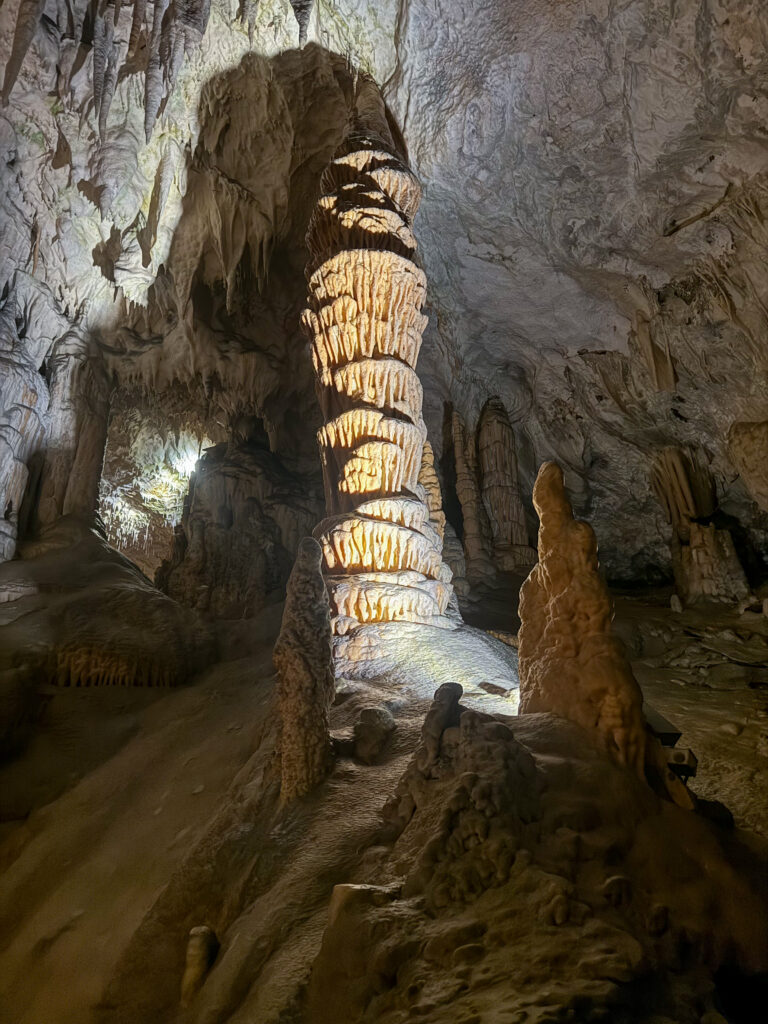
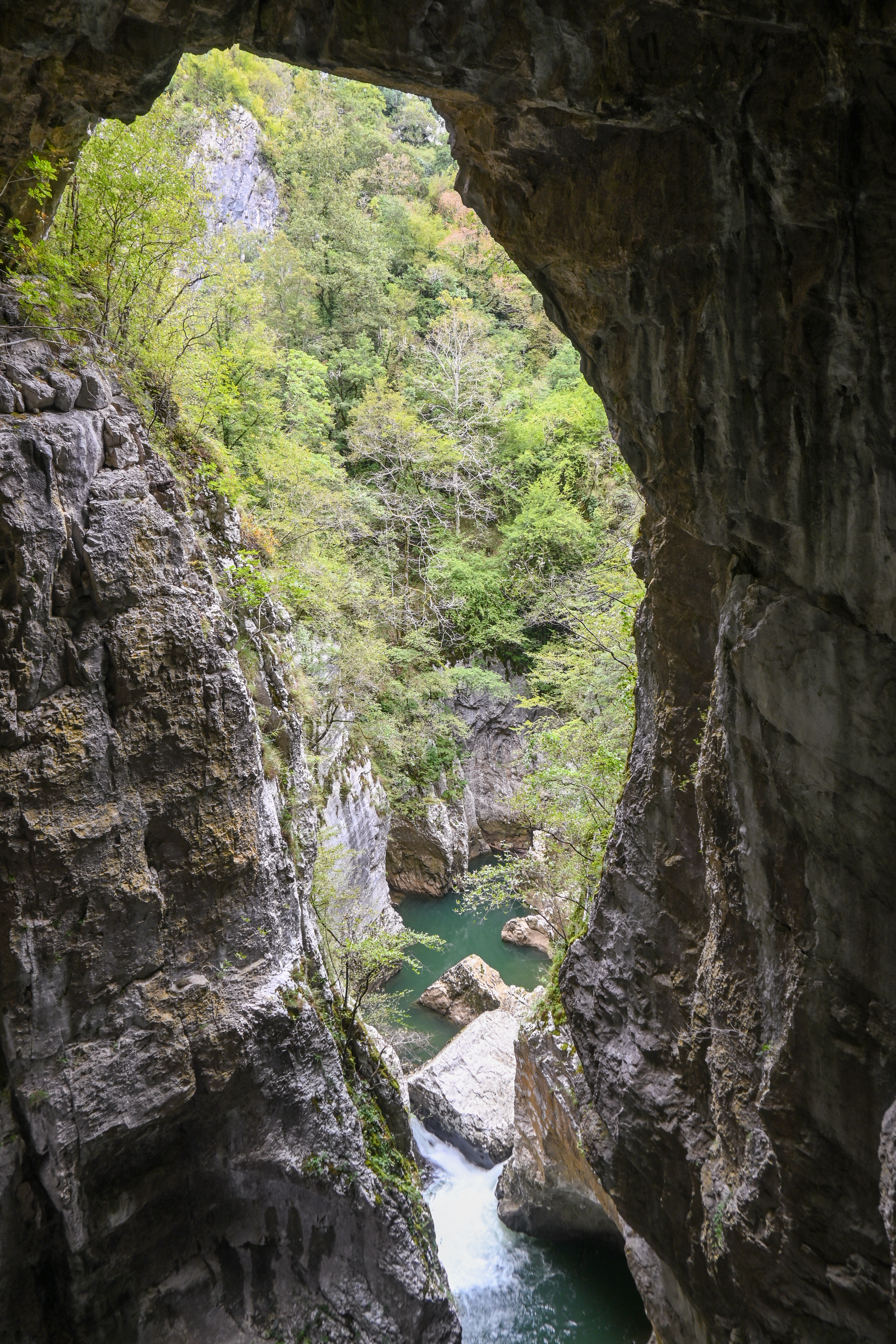
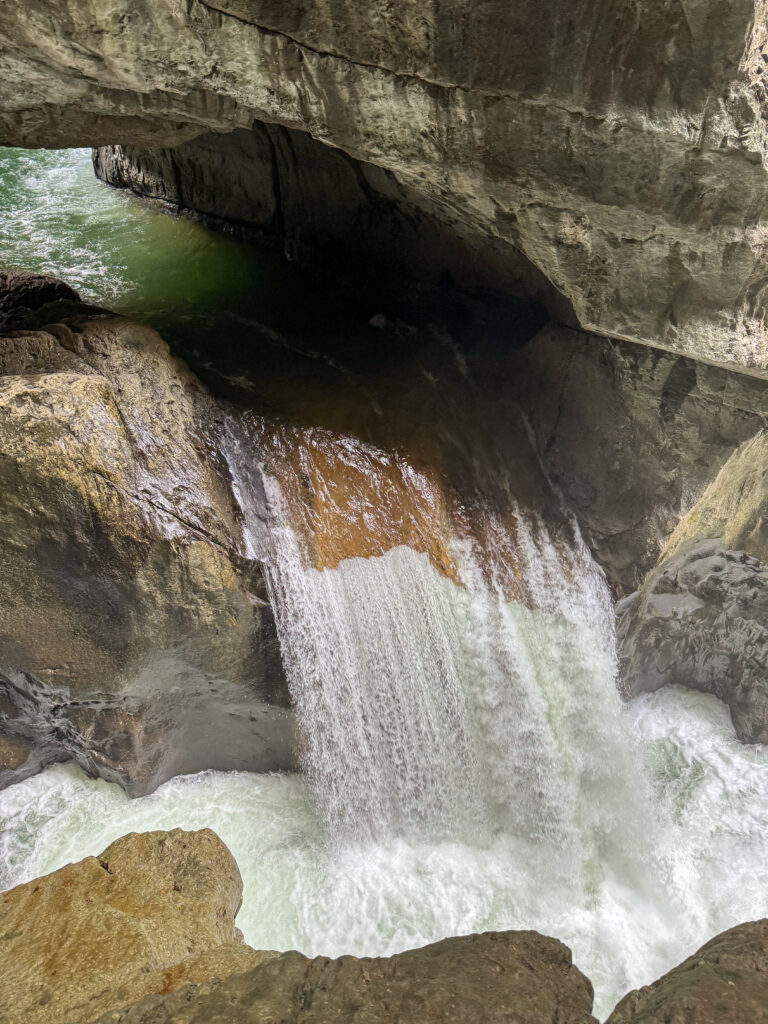
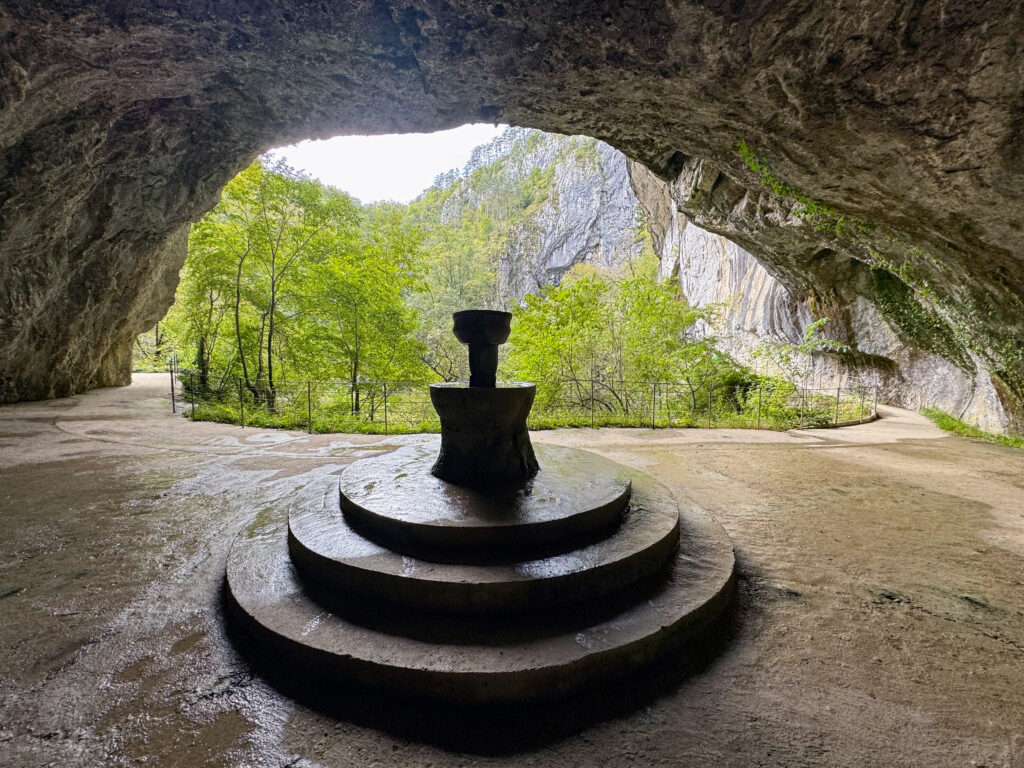
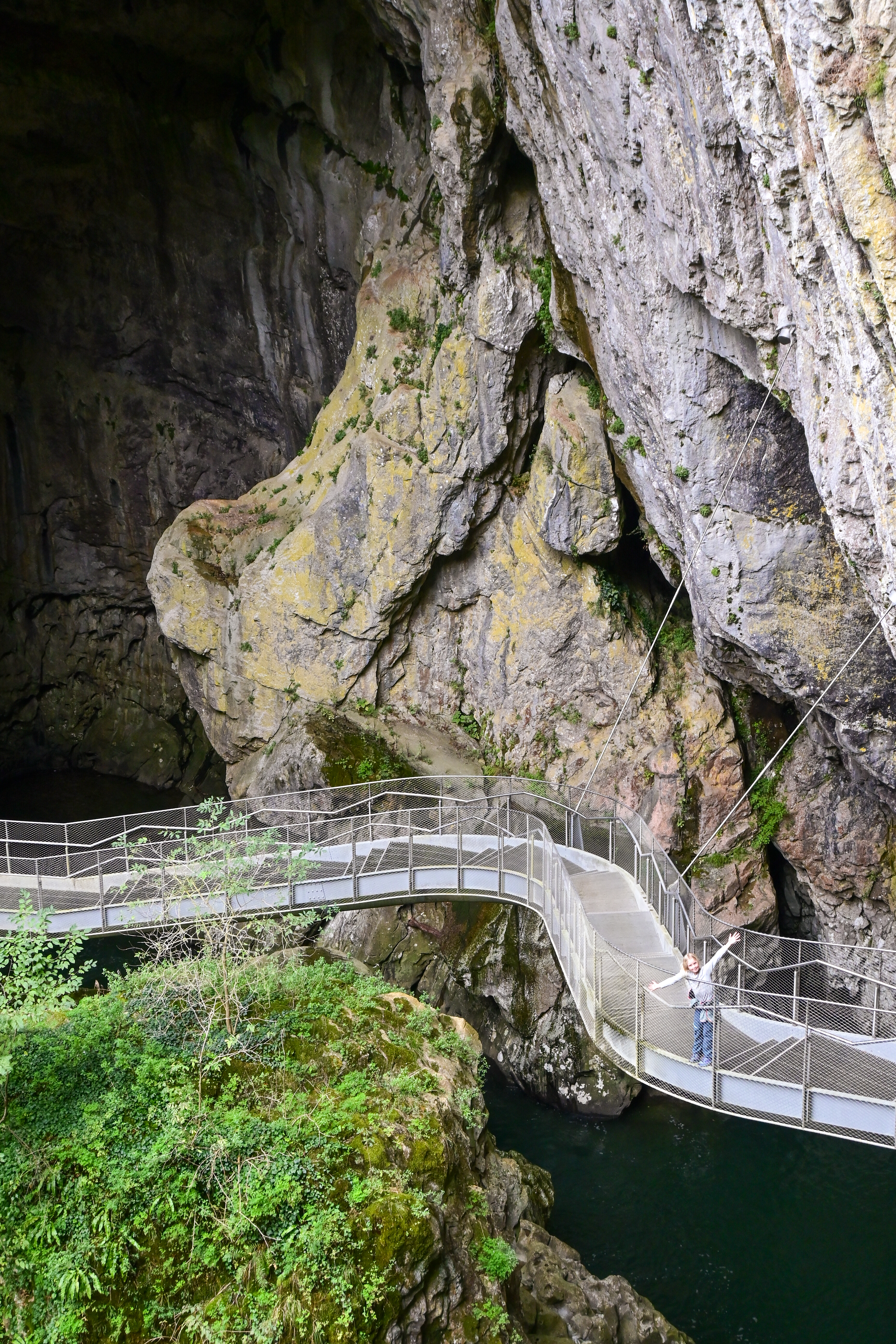
The Postojna Caves are also home to the proteus or olm, an aquatic salamander also known as a baby dragon! We weren’t allowed to take photos of them so here’s one off Google to show you what we saw. It is the world’s largest cave-dwelling animal, is blind, has no pigment in its skin, can live up to 100 years old, and can go without food for 10 years!

The history of the medieval Predjama Castle was fascinating – a castle built on a 123 metre high cliff that, despite being cold, damp and somewhat miserable to live in, seemed to outsiders to have a mysterious ability to fight off invaders (due to a network of secret tunnels behind the castle). Amusingly, the knight Erazem of Predjama met his untimely demise whilst sitting on the toilet (unfortunately the weakest part of the castle) after a betrayal by his servant.
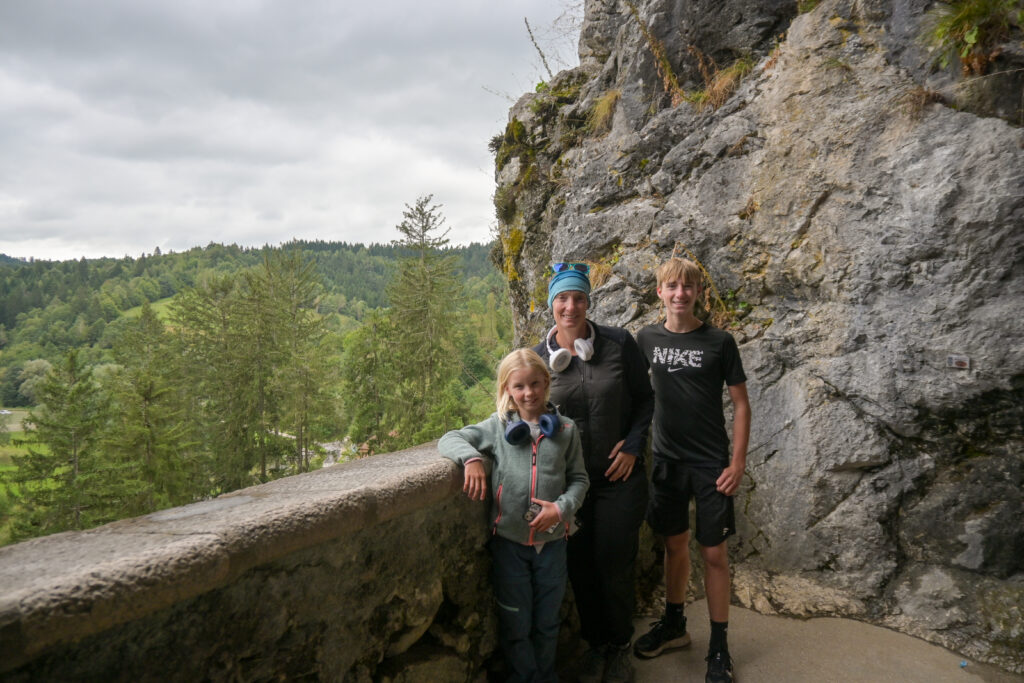
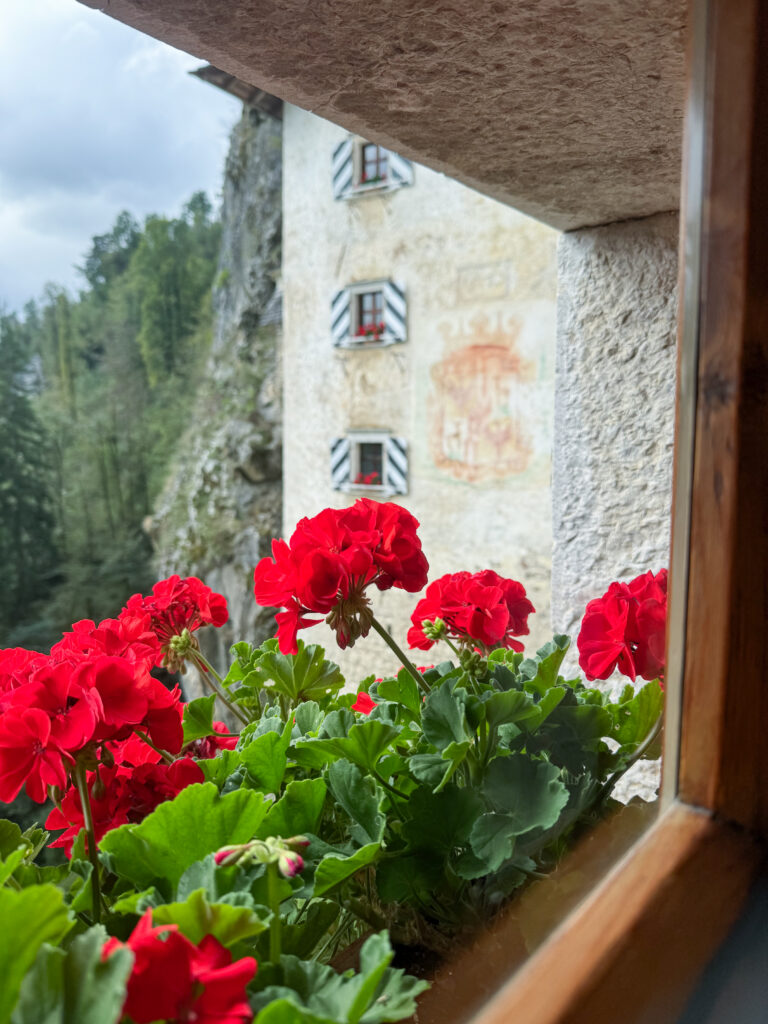
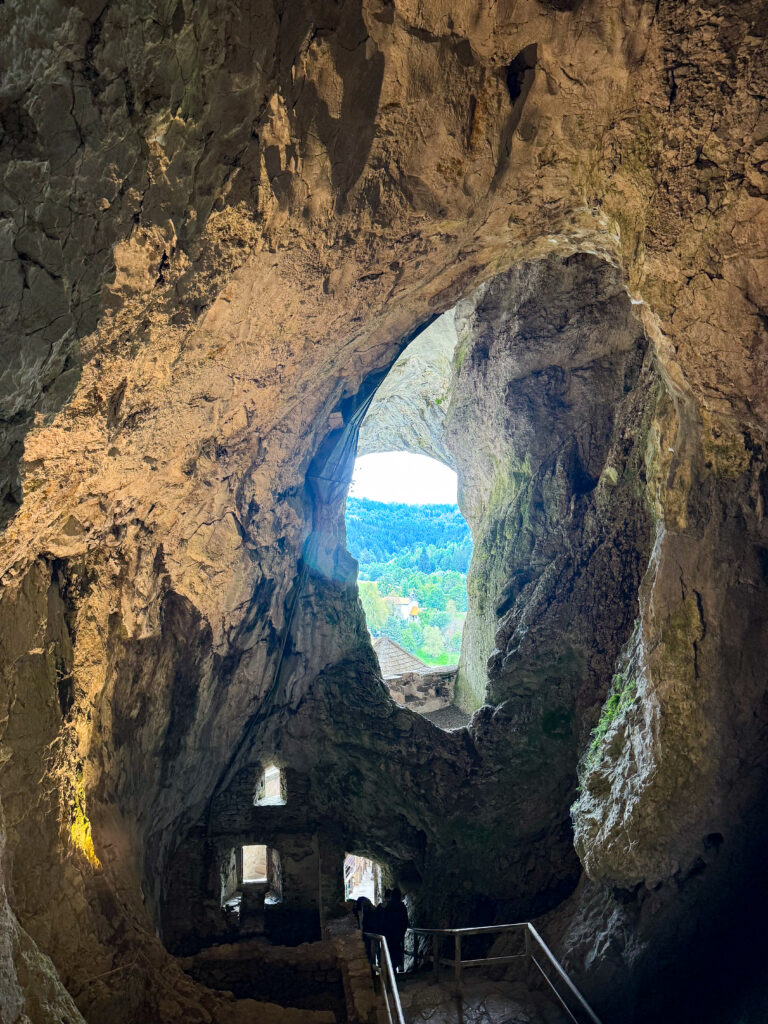
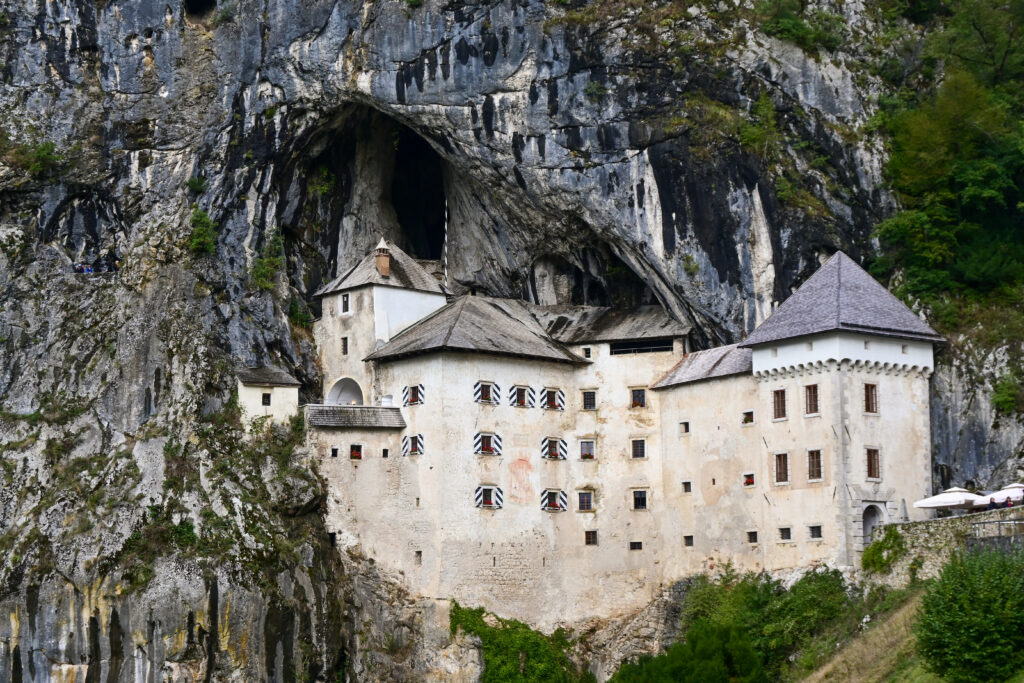
Our adventure in Slovenia was absolutely magnificent – spectacular scenery, wonderful adventures, and one of our favourite places so far!
From here we cross into Croatia and then ferry over the Adriatic Sea for Italy Part 2. Thank you to everyone who, in so many different ways, is making this trip possible for us – we are so grateful.